






By Dana Rieck
The St. Louis American
While Chief Kenneth Gregory has led the St. Louis County Police Department in an interim capacity for several months, his permanent appointment came last month. He’s now ready to dive into the gig, tackling issues and improving the department.
As the department’s first Black chief, Gregory inherits a myriad of race-related issues within the department, from a St. Louis County police dispatcher using a racial slur on the police radio, to accusations that reassignments are used not only as retaliation but to enforce race-based discrimination.
“Our culture has been developed over 66 years and, you know, we’re trying to rid ourselves of
n “We’re doing a lot of things to make this department more open to anybody that wants to take advantage of what we’re doing to try to get more people in here.”
–Chief Kenneth Gregory
some of the past practices that we’ve been dealing with, past policy issues that we’ve been dealing with to try to make us a better department, try to

By Alvin A. Reid The St. Louis American
Harris-Stowe State University was one of at least 14 Historically Black Colleges and Universities (HBCUs) to receive a bomb threat on Feb. 1, the first day of Black History Month, or on Jan. 31.
Dr. LaTonia Collins Smith, Harris-Stowe interim president, told reporters Tuesday “a total sweep” of residence halls and campus and administration buildings had been completed. The campus Department of Public Safety (DPS), in conjunction with the St. Louis Metropolitan Police Department and FBI, issued an “all-clear” after the search, meaning it was safe to return to campus at the only HBCU in the region.
Steven Mitchell III, 8, talks with Sovereign University student Shawn Sophia Harrell, 8, during class Monday, Jan. 24, 2022.
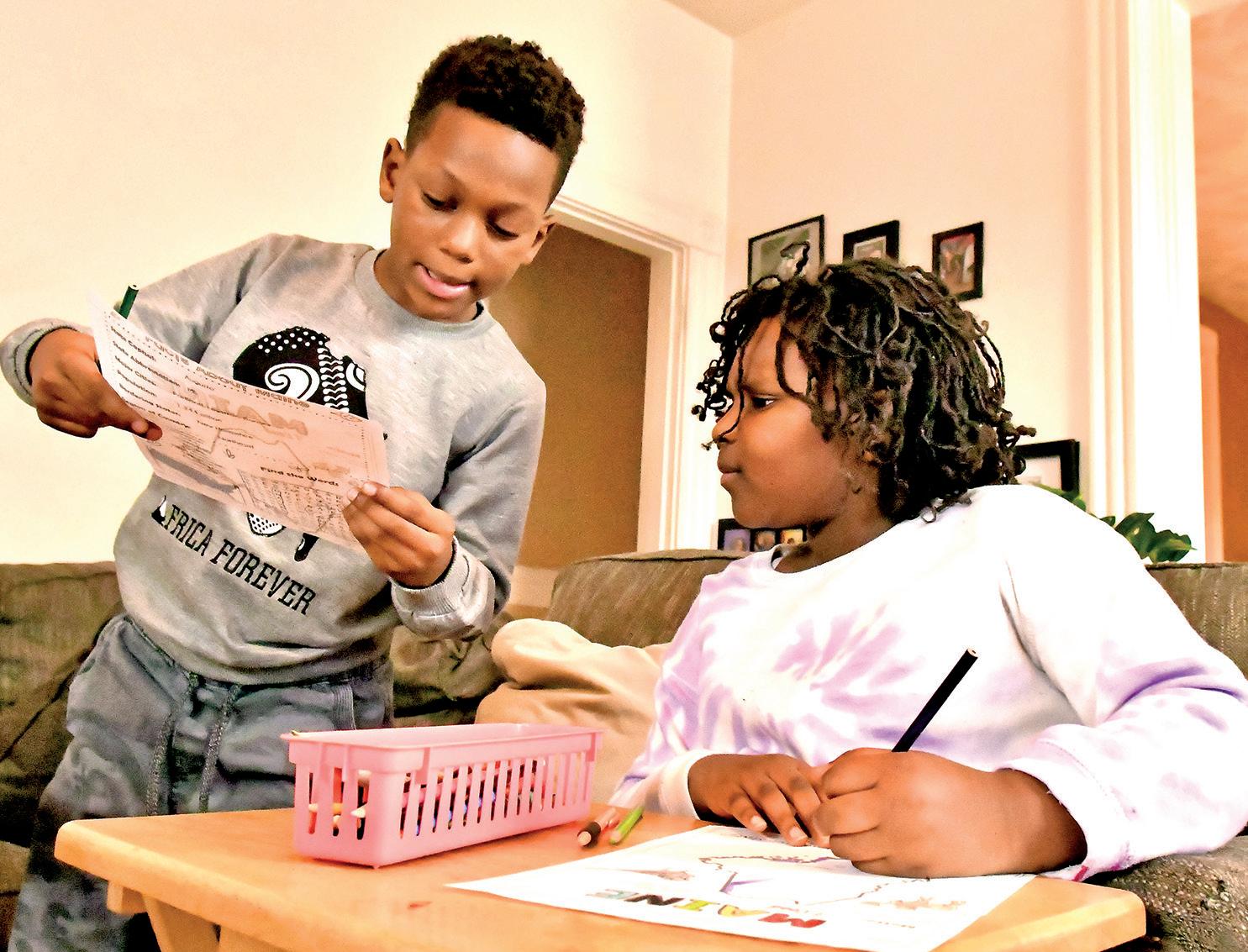
By Sylvester Brown, Jr.
The St. Louis American
The two-story brick home stands out on a micro block on the west side of the city. The dwelling on Clara Avenue, on a oneway street off Page Avenue is neighbored by homes, some abandoned, weed-covered or in various stages of disrepair. Not so with the home of Shawn and Denecia Harrell. A soft, yellow, chandelier light from the front porch window accents the white-painted porch and white wrought iron security door. Inside this warm setting,
the day’s classes for Sovereign University, a homeschooling program are about to begin.

The dining room where the chandelier hangs has been converted into a workroom of sorts. Surrounding the six-foot oak wood table are bookshelves and roll-away carts with pull-out drawers marked: “supplies, markers, paper clips, glue and paints.” Atop one cart sits an ample quantity of sanitizers, aerosols, and disinfectants.
“We take the kids’ temperature’s before
they come through the door every morning,”
Shawn Harrell, the founder of Sovereign University LLC, explained. “We also have someone come in every two or three weeks to deep clean the house.”
Harrell said he’s not an “anti-vaxxer,” even though he’s not vaccinated. He doesn’t like the label. I’d say we’re prochoice,” he said.
“We have parents who are vaccinated, some who are and others who left their jobs because they didn’t want to be vaccinated.”
Harrell doesn’t adhere to some of the
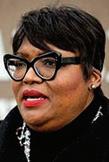
As a precaution and due to inclement weather, the campus will continue remote instruction and work until Friday, February 4, 2022.
“Harris-Stowe is better than this, and we deserve better,” said Collins Smith. “We will continue to move forward. Our goal is to be a beacon of hope for the community and that we continue to serve under-resourced and the underserved.” Congresswoman Cori Bush, who attended Harris-Stowe from 1995 to ‘96, said in a release “anyone who thinks these kinds of threats will stop Black excellence, hear me say this: we are unstoppable.”
“As a former Hornet, I will be doing everything in my power to keep them safe. We are already engaged in active conversations with local, state, and federal leaders to ensure that we secure the safety of our HBCUs across the country,” she said. “I have been in touch with university leadership and want the entire Harris-Stowe community, espe-
Expand intervention and ‘embrace youth’
By Karen Robinson-Jacobs
Finding more constructive outlets for youth and expanding a violence prevention program that has shown positive results in four St. Louis neighborhoods were among the proposals St. Louis Mayor Tishaura Jones put forward Monday for tackling the still-too-high rate of violent crime in the Gateway City.
In a live question and answer session with The Washington Post, Jones said she is “not celebrating” a 26% drop in the 2021 homicide rate compared to a record-setting spike in 2020 – downward movement that went against patterns seen in other major cities. Instead, she said she is looking to build on steps that already have shown promise, both among young people and more broadly in four neighborhoods that have been using a targeted violence pre-
A7


Black stars promise Super Bowl super show
The Los Angeles Rams are in the Super Bowl against the Cincinnati Bengals and it will be held in L.A.’s SoFi stadium.
Southern California natives Dr. Dre, Snoop Dogg and Kendrick Lamar will perform with Mary J. Blige and Eminem during the halftime show.
A trailer for the joint performance was recently released, and commercials have been airing during the NFL playoffs.
show in October, Snoop told Entertainment Tonight, “Me, Dr. Dre, Eminem, had a light discussion about what we trying to do. It’s about to go full speed ahead It’s gonna be one of the greatest Super Bowl halftime shows that you ever witnessed. Dr. Dre is on it, he’s putting his time together with the specifics and the dynamics of what we’re doing.”

“The opportunity to perform at the Super Bowl, and to do it in my own backyard, will be one of the biggest thrills of my career,” Dr Dre, said in an NFL release.
The performance will be an “unforgettable cultural moment,” he said.
Together, the five artists have won 44 Grammy Awards, with Eminem’s 15 trophies leading the way.
When news first broke on the halftime
Cardi B, other celebs step up for Bronx fire victims’ families
Cardi B is among music artists and celebrities helping ease the pain of families that lost loved ones in the Jan. 9 Bronx New York apartment fire that left 17 people, in cluding eight children, dead.
The Grammy-winning rapper partnered with the Bronx Fire Relief Fund to help cover funeral and burial costs for bereaved families. The Mayor’s Fund to Advance New York City will ensure all families are accounted for and their final wishes carried out.
Per Muslim tradition, bodies
of the deceased must be washed, shrouded, and buried within three days of death. Fifteen of the victims, who were mostly West African immigrants from the Gambia, have already had funeral services. Two children, also Muslim from Mali, had their services the week of Jan. 15.
Bronx native Fat Joe helped raise over $1 million in donations for The Mayor’s Fund, “not only for the families of the deceased but for those that have been displaced from their homes,” according to PIXX11.
“We’re just trying to help the people. People are homeless … they don’t know how to pay their bills, it’s cold in New York. And so our hearts pour out,” he said. DJ made major contribu-

Filming of Black Panther paused again due to COVID-19 concerns
COVID-19 Omicron variant, which spread through members of the cast and crew including star Lupita Nyong’o.
Filming was halted in December because of COVID-19 concerns, according to The Hollywood Reporter. Barring further delays, filming should be complete in four weeks.
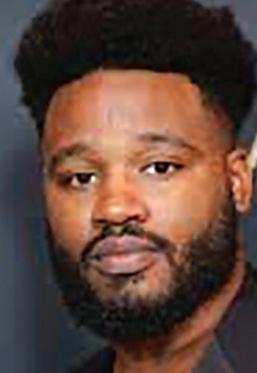
Production of the Black Panther sequel was set back in November after actor Letitia Wright, who portrays Princess Shuri, was injured on-set and hospitalized.
The late Chadwick Boseman starred in the 2018 critically acclaimed feature, and its sequel “is expected to honor both the actor and his character T’Challa,” wrote Corey Chichizola of Cenimablend.com.
“It is something (director) Ryan Coogler described as the most difficult task of his professional life,” he wrote. “Fans are eager to see who might take on the mantle of the Panther, with some possibilities being (characters) Shuri, M’Baku, or Okoye.”
Black Panther: Wakanda Forever is scheduled to be released in theaters Nov. 11, 2022.
Filming is set to begin again in Atlanta on “Black Panther: Wakanda Forever” following a delay caused by the
Sources: entertainmenttonight.com hollywoodreporter.com























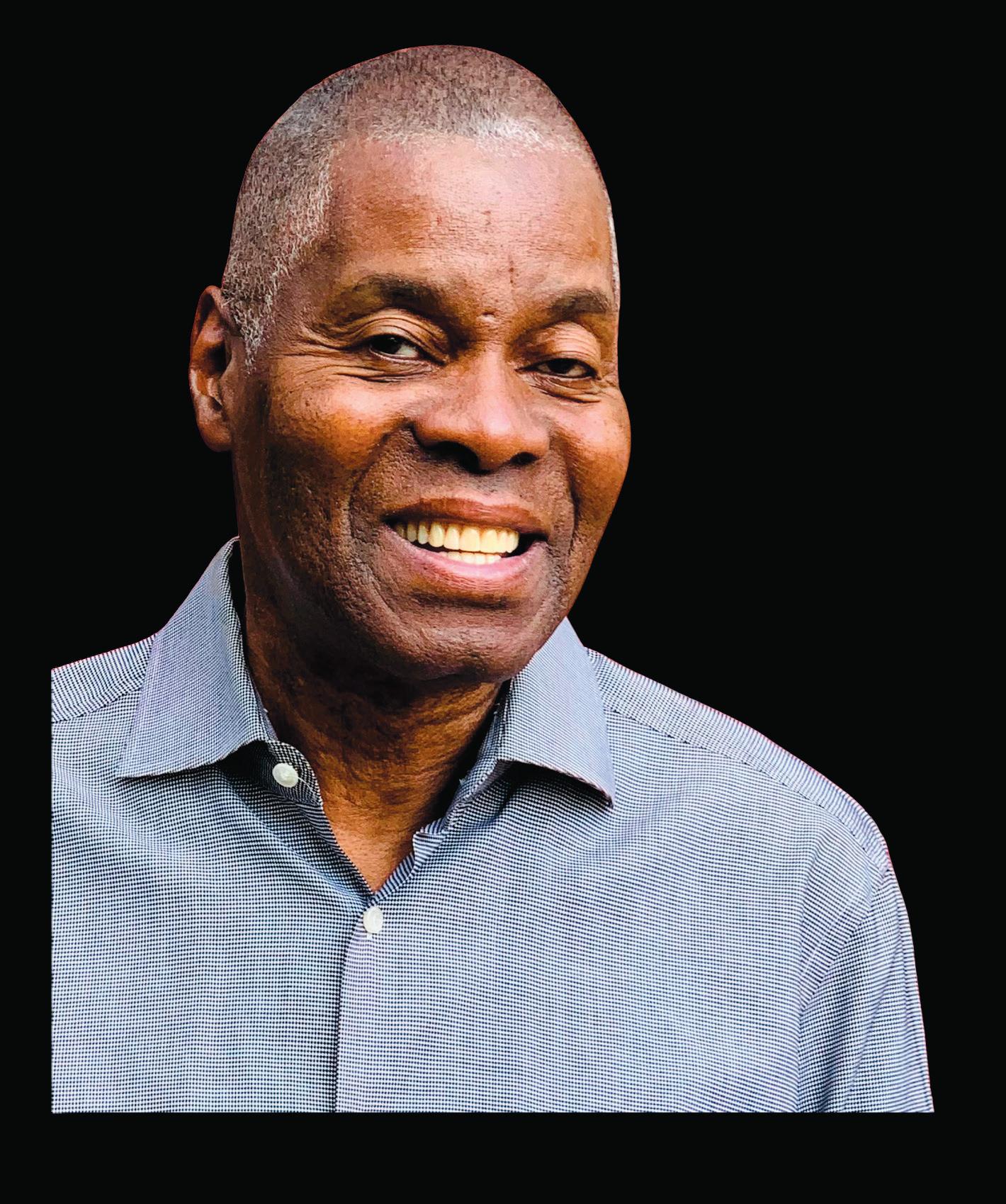







By Alvin A. Reid
The St. Louis American
As Black History Month opened on Feb. 1, 2022, St. Louis celebrated an eightyear tradition that no city in America, and just one in North America, shares. It is honoring the Red, Black and Green Flag for Black History Month.
St. Louis 27th Ward Alderman Pam Boyd, who serves as Black Caucus president, said it is an honor to take part in the ceremony.
“We always push for this recognition because it sends a message and reminder that African Americans have contributed so much to the history of St. Louis, and it can’t be overlooked,” she said.
“We have not properly educated our youth on our own history. That is why we are adamant that this tradition continues.”
Robert Hill, editor-in-chief of the multivolume edition of “The Marcus Garvey & Universal Negro Improvement Association Papers” told St, Louis Public Radio in June 2017 Garvey thought of a flag as necessary symbol of political maturity.
“The fact that the Black race did not have a flag was considered by Garvey, and he said this, it was a mark of the political impotence of the Black race,” Hill said
“And so acquiring a flag would be proof that the Black race had politically come of age.”
The flag was formally adopted by the Universal Negro
Improvement Association (UNIA), which Garvey founded, during its 1920 Convention in New York’s Madison Square Garden.
Hill said the Pan-African flag, which is also known as the Marcus Garvey, UNIA, AfroAmerican or Black Liberation flag, was designed to represent people of the African Diaspora, and to symbolize “Black freedom, simple.”
The Red, Black and Green Flag is on display inside and outside of the St. Louis City Hall throughout the month of February.
The Pan-African color bands each have a meaning. Red stands for the blood of Africans who died fighting for liberation, and the shared blood of the African people. Black represents Black people, and green is a symbol of growth and natural fertility of Africa.
“Everybody immediately seeing that flag would recognize that this is a manifestation of black aspirations, Black resistance to oppression,” Hill said during a radio interview.
The flag also was a purposeful counter to a popular song composed in 1920 entitled “Every Race Has a Flag But the Coon.” In Toronto, Mayor John Tory proclaimed February as Black History Month, “recognizing the history, heritage and contributions of African-Canadians,” he said during a ceremony.
The Toronto Sign at Nathan Phillips Square was lit red, black and green to mark the first day of the month.


By Henry S. Webber
For almost a decade, I have led a long-term study of growth and equity in the St. Louis region and St. Louis city compared to other large regions and cities in the Midwest and Southeast. I’ve used three criteria for success. First is population growth: Is a region becoming larger, more capable of competing with Chicago and Atlanta? Second is per capita income growth: Is the average person becoming more economically secure? Third is Black-white wealth and income gaps: Are we becoming more equal?
The data suggests that St. Louis is underperforming dramatically on growth and economic equality, and that turning around these trends depends on raising Black incomes in the St. Louis region. In 1970, St. Louis was the 10th-largest region by population in the United States. It is now the 21st-largest. In 1970, our region had almost twice the population of Atlanta. In 2019, Atlanta was over twice the size of St. Louis. Between 2000 and 2019, the St. Louis region grew by 5% while the United States population grew by 15%. The trends in the city of St. Louis, the heart of our region, are particularly challenging. In 1910, St. Louis was the fourthlargest city in the country. We are now the 65th. As we become a smaller and less important region in the country, it is harder to recruit companies, conventions and highly mobile workers.
But the good news is that history is not destiny. Cities across the country, including America’s most prominent cities of New York and Chicago, have gone through major declines before recovering.
The data from other cities points to several promising strategies. The most important is raising Black incomes, both as a moral imperative and a driver of regional population growth. Evidence shows that it is nearly impossible to grow a region and an economy when almost a fifth of the regional population is disproportionately poor and racial gaps are widening.
The three Midwestern and Southeastern regions with the fastest regional population growth since 2000 are Nashville, Atlanta and Charlotte, North Carolina. All have increased their population by at least 36% since 2000. All have much lower Black poverty rates than the St. Louis region. All have Black per capita incomes that are at least 15% higher than St. Louis. All have whiteBlack income gaps that are much lower than St. Louis and are making progress at closing those gaps.

The story of regional income growth by race is complex. Between 2000 and 2019, the average per capita income in St. Louis grew (in inflationadjusted dollars) by 3%. That is about the national average. What is very distressing, however, is that while white incomes in the region grew by 5%, Black incomes dropped by 1%. More than 50 years after America outlawed racial discrimination, the average per capita income for whites in our region is $40,120. The average per capita income for Blacks is $21,277. The gap is 89% — and widening, not shrinking. In the city of St. Louis, the racial gap in income is even wider. The lack of population growth and racial disparities result from a very long period of manufacturing decline, political fragmentation and structural racism. Despite significant progress in the biotech, tech and financial sectors, St. Louis is growing too slowly and too inequitably.
What must happen for Black incomes to rise in St. Louis? Evidence shows that tactics that raise incomes for whites do not necessarily raise incomes for Blacks or other groups or achieve regional success. A rising tide does not lift all boats. We need targeted strategies, beginning with strong support for the neighborhoods, public education and higher educational institutions that serve large numbers of Black students. Regions with much higher incomes for Black residents than St. Louis have, without exception, a much higher rate of college graduation for Black populations than St. Louis. Public policy and private investment must focus on job creation and workforce training in communities of color with the greatest need. And we must grow and strengthen minority businesses. In all of these areas, work is being done but much more is needed.
For the success of all, we need to create racial equity in St. Louis. Henry S. Webber is Urban Impact Advisors principal and former Washington University executive vice chancellor. The St. Louis American is republishing this commentary with his consent. It originally appeared in the St. Louis Post-Dispatch.
By Janice Ellis
Critical Race Theory.
Uncritical Race Theory. Factual Race Theory. Call it what you will. But as the saying goes, “A rose called by any other name is still a rose.”
Racism called by any other name is still racism.
So, let’s step away from the naming, and name calling, and try to find some common understanding based on facts and truths about race and racism and how they have manifested, and continue to manifest themselves in America.
First, let’s acknowledge and agree that the subjects of race and racism are uncomfortable for many of us when it comes to having an open and honest conversation at home, in a classroom, at a community forum or any kind of discussion.
Too often, suppression, denial, distortion, false accusations, casting blame, engendering guilt and fear mongering seem to be the more comfortable paths taken.
These are the paths being chosen in state legislatures, Congress and in school board meetings across America opposing Critical Race Theory. But it need not be this way.
Facts about race and racism in Americashould be treated honesty and truthfully without suppression or censorship.
Such an approach could be freeing and healing.
Second, Native Americans, Irish and Polish immigrants were subjects of race and racism, but they have managed to assimilate. Blacks, more so than Native Americans or any other group, are the predominant and enduring focus when it comes to
anything race in America. Third, a complete accounting of American history about Blacks has never been taught at any level in the educational system in this country — from grade school to post graduate school. No matter what level each of us completed, we have first-hand experience and know this to be true.

Whether you like history or not, there are things when it comes to Blacks and the subject of race that are undeniable: America embraced and maintained an institution of slavery for centuries, culminating in the Civil War. The vestiges, problems, practices of inequality, discrimination and oppression of Blacks have been an integral part of American life and society and continue to this day. One has only to look at race relations in their own neighborhoods, communities, cities, states and this nation to know that race and racism are topics that need to be addressed — in all of its facets.
Ask yourself a few questions, beginning with: Do you think there are many human races or just one? Whether you believe in science or religion or neither, there is ample evidence that there is just one race, the human race. We are all 99.99% the same.
Take your pick. Consult the Bible or the Human Genome Project. Another comprehensive resource is the book, The
By Ben Jealous
President Joe Biden’s first year in office has brought both triumphs and disappointments. There’s no question that the administration has work to do on voting rights and on passing the critical social infrastructure pieces of the Build Back Better plan.
But firmly in the “wins” column is the president’s extraordinary success nominating and confirming to the federal bench extraordinarily qualified judges with a demonstrated commitment to civil rights, especially Black women judges. This is profoundly important to our legal system, to how justice is administered and to how everyday people experience life in our democracy, whether they ever find themselves in court or not.
That’s because even though the Supreme Court grabs headlines when it decides a big case, the high court takes only a few cases every year. The vast majority of federal cases are decided in the lower courts, at the circuit and district levels. This is where rulings are made that affect our right to vote, to not be discriminated against in housing or on the, to access health care, and so much more.
Having a strong contingent of Black women judges on these courts means the lived experience they bring -- in addition to their stellar legal credentials -- is coming into play in deciding cases that will shape all our lives for years to come.
Candace Jackson-Akiwumi had her pick of highpowered legal jobs. She worked for a while at a prestigious law firm, then quit to become a public defender, representing people who could not afford a lawyer. In that role, she helped expose the government’s use of “phony stash houses,” a way to trap people into committing crimes they would not otherwise commit. Today she serves as the only Black judge on the Seventh Circuit Court of Appeals in Chicago.
Similarly, Yale alumna Eunice Lee spent 20 years at Manhattan’s Office of the Appellate Defender, representing poor people in New York City convicted of felonies. Today she is a judge on the Second Circuit Court of Appeals in New York.
And Ketanji Brown Jackson, a Harvard Law graduate, devoted years of her career to public service, representing low-income people in Washington, D.C., as a public defender. She also served on the U.S. Sentencing Commission, where she worked to end the unjust discrepancy between sentences for crack and powder cocaine. Today she serves on the D.C. Circuit and is often talked about as a future Supreme Court nominee.
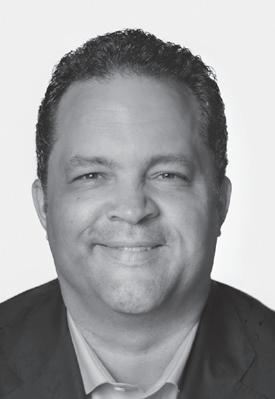
The paths to confirmation for these women and their fellow nominees were tainted by attacks, racist and otherwise. The right-wing press criticized these nominees as “radical liberals.”
The numbers tell a powerful story. A full 65% of President Biden’s circuit wcourt nominees have been people of color. Three quarters have been women, and 42% have been Black women. These statistics break all previous records for inclusion on the critically important circuit courts, whose opinions establish the law in all the states in their region.
The president has shown a similar commitment to diversity on the district courts, as well. And all this comes against a backdrop of recordshattering appointments overall: Biden has had more lower federal court judges (circuit and district combined) confirmed than any other president in his first year, in 60 years.
Probe beneath the numbers and you discover even more compelling stories: the personal histories of the Black women tapped by Biden to serve on our highest courts.
A distinguished Yale Law School graduate,
The Senate Judiciary Committee asked Jackson and Jackson-Akiwumi pointblank at their confirmation hearings if race would play a role in their judicial decision-making. And far-right conservatives did everything they could to delay their confirmation. But all of them prevailed, with dignity, grit and grace, the qualities that so many accomplished Black women have shown in the face of adversity.
And the story is still being written. On the campaign trail, President Biden promised to name the first Black woman to the Supreme Court, and Justice Stephen Breyer’s retirement paves the way for that to occur. Soon, we may see that woman take a long-overdue and rightful seat on the nation’s highest court; I look forward to celebrating that beautiful and momentous day.
Ben Jealous serves as president of People For the American Way
Myth of Race, by Robert Wald Sussman, a professor of Physical Anthropology at Washington University in St. Louis.
There is only one race. We all come from different ethnic, geographical, and cultural backgrounds. But that is as far as real differences go. Period.
Ask yourself another question: Are you willing to honestly re-examine your views about humans who do not look like you, act like you, live like you, or believe everything you believe?
Different colors in nature, variety and new experiences seem to be welcomed and seen as the spices of life, except when it comes to humans.
We can hang on to our racist, bigoted, stereotypical notions if we choose. We are the losers when we do.
We can get knotted up in our underwear, sidetracked and misled by the most recent attempt to address the issue of race and allow fear mongers to keep us at odds with each other—all because it is called by the new name, “Critical Race Theory.”
Would you be more willing to have an honest factual conversation about how race has played out in American history, and continue to play out, if it were called “Uncritical Race Theory” or “Factual Race Theory”?
Our leaders in state legislatures and Congress should stop the charade when it comes to addressing the destructive history of race in America.
No matter what you call it.
Janice Ellis is an author, columnist and statistical analyst who has resided in Missouri more than 30 years.
It’s always great to see projects that help both the local community and the environment. A recent partnership between Delmar DivINe and Ameren that will install solar panels over the nonprofit’s parking lot accomplishes exactly that.
As a recent WashU graduate who lived on the Loop, I’m certain that this solar canopy will deliver big benefits to St. Louis’ people and businesses. Clean energy projects like rooftop solar help us get off of polluting fossil fuels, which makes a big difference in protecting St. Louis’ air and water. Putting solar panels on the building’s parking lot will also play a role in keeping the lights on in the event of a power outage.
Hopefully, Delmar DivINe’s solar park-





Terrence Wise and Sharon Parker listen to Rev. Darryl Gray, social justice commissioner for the Progressive National Baptist Convention, during a Jan. 26, 2022, protest at the Amazon Distribution Center in Edwardsville, Illinois. The rally, which drew attendees from the St. Louis area, Kansas City and Chicago, was held five weeks after six people died in the warehouse when it collapsed after being hit by a tornado. “Amazon has not acknowledged its role in this tragedy,” Gray told St. Louis Public Radio.
St. Louis American staff
The East St. Louis and Alton Police Departments were recently awarded respective $225,000 grants from the U.S. Department of Justice to establish a Body-Worn Camera (BWC) Policy and Implementation Program within their jurisdictions of St. Clair and Madison Counties.
“We are excited to receive this grant because this will allow our police department to be in compliance with the 2025 deadline for all police in Illinois to utilize Body-Worn Cameras while on active duty per the Illinois Law Enforcement Officer
Worn Body Camera Act,” East St. Louis Mayor Robert Eastern III said in a statement.
According to the DOJ’s Bureau of Justice Assistance website, the cameras can assist in the de-escalation of conflicts, reduce instances of force, injuries to police officers and citizens, and complaints of police misconduct, thereby increasing trust, transparency, and accountability in the interactions between law enforcement and community members.
In addition, the digital evidence collected by the cameras can be vital in criminal investigations and court proceedings as the video footage provides evidence for criminal cases, reducing law enforcement inputs for investigations and court appearances.
Last July, the St. Louis Metropolitan Police Department announced 635 officers were equipped with cameras and 165 were available for officers on military leave, sick, or had not graduated from its police academy Not all officers are receiving body cameras, only those who interact regularly with the public. This includes patrol officers, SWAT team members, traffic safety officers, and the Metrolink unit, according to police.
Two city police officers were shot while attempting to apprehend a murder suspect on Wednesday, Jan. 26. Both remain hospitalized, one in critical condition.
Two St. Louis police officers and five other people were struck by a car and injured Monday night while investigating another crash at I-40 and Boyle.
By Oseye Boyd
Other than the commercials that used to come on during daytime TV or Saturday mornings about special edition, commemorative coins for collectors, I never thought much about the United States Mint, the Mint for short.
I’m going to venture to say I’m like most people in that regard; the Mint isn’t top of mind — or in my mind at all. That is until recently.
About a week or so ago, the Mint announced Dr. Maya Angelou would be on the quarter as part of the American Women Quarters program. The program will feature prominent women in American history on coins. The news that Angelou, a poet, activist and all-around phenomenal woman, would grace the quarter was met with celebration. I have to admit, though, my enthusiasm dampened a little when I found out George Washington will still be on the coin. While my wish is that Angelou have the quarter all to herself, I’m not going to quibble about it. However, while many of us were cheering about the inclusion of Angelou on the quarter, and the news that President Biden would nominate Ventris C. Gibson, a Black woman, to be the first Black director of the Mint — controversy was brewing.

The New York Times reviewed an internal report that “depicts an institution rife with tumult over allegations of racist behavior.”
According to the New York Times article, the report said the Mint had a “culture problem” and “implicit bias” and “microaggressions” are common toward people of color. I use people of color here because the article doesn’t provide specificity on the race or ethnicity of the targets of these behaviors. The report goes on to say concerns about racial issues were dismissed, and managers even made comments such as “we need a model minority,” and “if we put a minority as a U.S. Mint assistant director, the minorities will see we are not racist or sexist.”
The Mint isn’t new to allegations of racism. A long, long time ago, 2017 to be exact, a white employee at a facility in Philadelphia took a rope used for sealing coin bags and tied it into a noose. He left it on the workstation of a fellow employee. The employee, by the way, just happened to be Black. In 2020, so not very long ago, then Treasury Secretary Steven Mnuchin received a letter outlining other racist incidents: another noose, the n-word written on restroom walls and a Black leader called “zoo keeper” by a white Mint official. Traditionally, staff at the Mint was white, but it’s becoming more diverse. At the headquarters in Washington, the higher paying jobs are occupied by white people while people of color make up the bulk of lower-paying jobs.
I know some may be surprised. None of this is surprising to me.
This is just but one example of how I know racism exists. It’s why I know institutional racism in this country is real, no matter how many times people want to argue to the contrary. You can’t say individuals may be racist, but institutions are not. Where do the individuals work? In said institutions, duh. It’s easy to reason then that those individuals bring their thoughts, views, beliefs, their total selves, into the job, and they treat people accordingly. Laws on the books didn’t change people’s hearts and minds. If it were that simple, we wouldn’t even need laws on the books. People would just do what’s right because it’s right. Instead of arguing against critical race theory, why not use that energy to actually remove racism from institutions in America? The incidents at the Mint are why diversity, equity and inclusion (today better known as critical race theory) efforts are necessary. If we educated our children on America’s true history, maybe they wouldn’t grow up to be adults who think it’s OK to leave a noose on their Black coworker’s workstation or write the n-word on a restroom wall. Trust and believe, these things weren’t done in ignorance. The perpetrators knew exactly what those actions meant.
Unfortunately, these types of incidents will continue because parents don’t want their children, and by extension themselves, to be uncomfortable. Until then, Black people will continue to be uncomfortable in the country we call home.
Oseye Boyd is editor of the Indianapolis Recorder.

Continued from A1
bizarre plots advanced by virus or vaccine conspirators.
Instead, he said he and some of the families are upfront and honest about their vaccination statuses and choose how they want to protect themselves, their families and the children that attend Sovereign University.
Still, the COVID-19 pandemic accelerated Harrell and a group of parents’ desire to start Sovereign University. Harrell, who has a doctorate in higher education, leadership, and experiential learning, said he was already in the process of developing culturally specific homeschool curriculum.
“The pandemic created the perfect storm of chaos that allowed us the opportunity to take advantage,” he explained. “There was just so much of the unknown. Some parents weren’t satisfied with the options (virtual or in-person learning) offered by school systems, and, for me, my children didn’t enjoy school like they did before the pandemic.”
Harrell’s concerns are apparently shared by other parents. Experts say that homeschooling has been on the rise since the pandemic was first acknowledged in early 2020. The Household Pulse Survey, the first data source to offer statewide numbers on the impact of COVID-19 on homeschooling, found that by fall 2020, 11.1% of households with school-age children reported homeschooling. A 5.6% increase means that approximately 9 million
Continued from A1
cially Harris-Stowe students, to know that their excellence is to be celebrated,” Bush added.
“Their passion and intellect will change the world, and we will not let forces of white supremacy slow them down.”
The threat against Black colleges and universities was widespread, even as it struck a
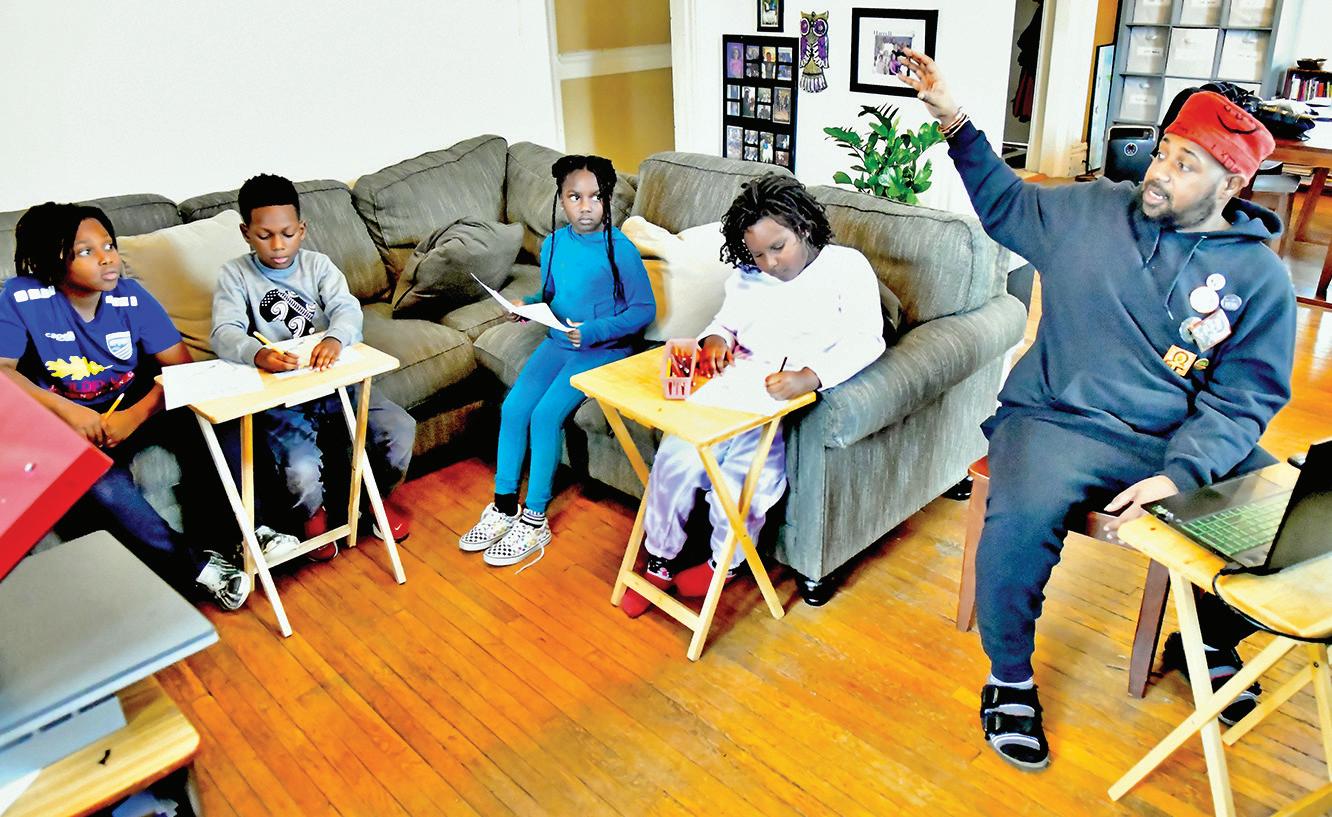
children are homeschooled in this country.
Harrell said the seed of starting a homeschool program was planted long before the pandemic. It began after the police shooting of Mike Brown in 2014.
“I started meeting like-minded people at rallies and protests,” he explained. “I kept hearing that ‘we need to organize’ and come up with solutions for our children and I saw education as a means to that end.”
A group of concerned parents started holding weekly homeschooling classes at Yeyo Arts Collective on S. Jefferson. The classes focused on black history, business, entrepreneurism, and other areas par-
nerve close to home. St. Louis resident Patricia Deesscrambled early Monday to find a safe haven for her daughter, a student at Kentucky State University in Frankfort, after reports of the bomb threat circulated.
After making arrangements for her daughter, Rickell Fletcher, to shelter at a hotel, Dees’ thoughts turned inward.
“I was angry and anxious,” she said of her reaction. “Angry that the state of our
ents felt lacking in traditional school settings.
Harrell, who described his passions as “education and community,” said he recognized “areas of disconnect” in the educational system and curriculums that weren’t beneficial- culturally or academically-to African American children.
“My life’s work is to fill those gaps, tie up those loose ends and create independent, educational solutions for as many families that’s interested in working with us,” Harrell said.
He defines the curriculum he has developed as “STEAM.” It’s like STEM (science, technology, engineering, and mathematics) but with an “A” added
country has returned to a time of unbridled hate and anxious about my daughter’s physical and mental state.”
Fletcher said she has been experiencing “a wave of emotions,” and expressed concern that students were not offered counseling.
“I feel on edge about everything,” said the nursing major. “I don’t feel comfortable going to class.”
Howard University in Washington, D.C., again this
for Arts. The program, Harrell said, is a combination of STEM and African-centered education that hits all the core competencies required by the Missouri’s Department of Education, Sovereign University LLC also offers an African-centered curriculum that parents can use virtually.
At this point, about six families are attached to Sovereign University with roughly 12 of their children attending classes Monday through Friday in Harrell’s home. Three of the students are Shawn and Denecia’s. Their youngest child (age three) attends daycare. Denecia is a practicing doulas and midwife. Harrell said his wife helps when she can but most of her time is dedicated
week found itself the target of such ominous threats.
The school issued a shelterin-place order on Tuesday. The Washington Post reported that Tuesday’s threat was the third such scare within the past four weeks. On Jan. 4, at least eight HBCUs were threatened, the paper reported.
“A bomb threat against the university is being investigated,” read a 3:29 a.m. Tuesday alert from Howard University. “All persons on campus are

Sovereign University students Kingston Harrell, 10, Steven Mitchell III, 8, Nubia Herrell, 6, and Shawn Sophia Herrell, 8, sit in a classroom setting as homeschooling teacher Shawn Harrell (far right) teaches a zoom class in his West End home Monday, Jan. 24, 2022.
Kingston, the oldest, was frantically working on something. He seemed to be racing to beat the 9am start time. When asked what he was doing, Kingston pointed to a black and white rendering on his computer screen. It was a drawing of Malcom X surrounded by the words: “Education is Our Passport to the Future.”
“It’s for black history month,” Kingston matter-of-factly explains. “It’s going on my business social media page.”
to “birth work.” Other parents with the Sovereign University cooperative donate their time and expertise to help with instructing, physical education, field trips and other student needs.
For the time being, until the Omicron variant wave is under control, Harrell said the parents have opted for virtual instructing. This reporter visited the home on an early Monday morning, minutes before class started.
The Harrell’s three children, introduced themselves:
“My name is Nubia, N.U.B.I.A., I’m six,” the child confidently said.
Sophia (8) and Kingston (10) also made their introductions.
advised to shelter in place until more information is available.” The school later issued an all-clear.
Along with HarrisStowe, Kentucky State and Howard, historically Black schools targeted with threats included: the University of the District of Columbia, Morgan State University and Coppin State University in Baltimore, Fort Valley State University in Fort Valley, Georgia, Xavier University of Louisiana in New Orleans, Edward Waters University in Jacksonville, Florida, Alcorn State University in Lorman, Mississippi, Mississippi Valley State University in Itta Bena, Mississippi, Spelman College in Atlanta, Jackson State University in Jackson, Mississippi, and Tougaloo College in Tougaloo, Mississippi.
“The threats are despicable,” Mary Schmidt Campbell, president of Spelman College in Atlanta, said in an email to students and staff members on Tuesday. “They are designed to make us feel fearful and vulnerable.”
Like his father, who also operates a customized clothing business, Kingston, at the age of 10, has his own T-shirt and apparel business he calls “Sovereign Art.” At about 9am, about five other kids joined the class by zoom. Their individual faces appear in squares on the Harrell’s 75’ TV atop a large, ornate, blonde wood table. The students start by discussing their weekend activities.
“We went to a birthday party for my cousin at Bounce U. and we bounced,” Sophia says speaking to her virtual classmates.”
When asked what she likes about learning from home, Nubia, the child with glistening dark skin innocently replies, “Um, I like it because we learn the truth about stuff.”
What kind of truth?
“Um, about black history and stuff.” After the kids shared their weekend experiences, another day of learning at Sovereign University began.
Sylvester Brown Jr. is The St. Louis American’s inaugural Deaconess Fellow.
In a statement, Morgan State University President David K. Wilson said he was saddened to confirm that the school had received a bomb threat.
He said several individuals had asked about the veracity of the threat.
“Unfortunately, and sadly, it is,” he said. “The campus is being searched building-by-building this morning with our residential halls being searched first.” White House press secretary Jen Psaki said during a Tuesday White House briefing the Biden administration is “absolutely behind these HBCUs. We want to make it very clear that we take these threats seriously and we deeply value their contributions.
“But it’s important for law enforcement authorities and others to make an assessment before we make any determinations about next steps.”
Reporter Karen RobinsonJacobs and The National Newspaper Publishers Association contributed to this report

vention program.
“I think one of the most important things that we have to remember is a lot of the people who are committing crimes … it’s about our young people,” said Jones, who campaigned for mayor on a platform of combating violent crime while at the same time saying the “current system of policing is inefficient and ineffective.”
“How are we developing ways to really put our arms around our young people and show them a different way and [to try] to cure poverty because if we don’t cure poverty, we’re still treating this at the symptoms [level] and we have to treat the underlying disease just like we are with COVID,” she said.
international program that places interveners in troubled neighborhoods to attempt to de-escalate potentially volatile situations.
The program, which is based in Chicago, began locally in June 2020 and now operates in three areas, which includes four neighborhoods. Three of the neighborhoods saw drops in homicides last year that eclipsed the citywide 26% decline.
n “If we don’t cure poverty, we’re still treating this at the symptoms [level] and we have to treat the underlying disease just like we are with COVID.”
– St. Louis Mayor Tishaura Jones
“We’re looking at the root causes of COVID and trying to mitigate those circumstances. We have to do the same thing when it comes to gun violence in our communities.”
The drop in homicides locally became part of a national news story on urban centers and crime.
St. Louis was listed as one of the nation’s few large cities to buck the trend of increasing homicide rates since the pandemic began.
“I would say that things are headed in the right direction, but we still have a long way to go,” Jones said. “While we are encouraged by the numbers we saw in 2021, in the first nine months of my administration, I’m not celebrating. I’m making sure that we are doubling down on the strategies that we know work and making sure that we provide a community where everyone feels safe in their neighborhood.”
One strategy would be to expand Cure Violence, an
Continued from A1
get rid of some of those issues that we have been accused of having,” Gregory told The St. Louis American. “And … I’m sure that we have had racial division in this department, and we probably still do, but we’re working on things within this office to try to alleviate those things.” Gregory provided a few examples of how he will go about addressing race-related complaints internally, namely promoting an open policy for employees to bring their concerns to leadership—including directly to the chief himself if necessary.
“The thing I don’t want is for you to have those issues and don’t say anything about it,” he said. “And then, at some point it comes [out]. I want to have the opportunity to resolve those issues before it hits the media, before it goes to court. But would you … open up with me and open up with our command to get those issues dealt with?”
As his appointment came amid a string of first responder deaths and injuries in the area, Gregory said the department tries to reduce crime by proactively policing in areas where its highly concentrated. He believes it’s critical to focus on building trust between officers and community members in order to prevent crime and solve the ones that are committed. With the department’s staffing levels down, though, he said this can be challenging. Which is why he wants to focus on recruitment efforts in his first year as chief.
“So, we’re not doing as much proactive policing as we want to do,” he said. “We’re doing a lot of reactive things, trying to get situations resolved within our communities.”
Gregory also acknowledged how important inter-agency collaboration is in the region, noting he’s looking forward to working with the city’s next chief and has worked well with
In Hamilton Heights, the homicide rate dropped by 42% to seven; in Wells-Goodfellow the rate dropped by 70% to three; Walnut Park East saw homicides drop by 50% to five and Walnut Park West posted an 80% drop to three. Each site has on average eight paid staff members including three “violence interrupters” who work to head off potentially violent encounters. St. Louis is one of at least 20 U.S. cities participating in Cure Violence, including Kansas City, Atlanta, Milwaukee and San Antonio, according to the Cure Violence web site. Jones said the city plans to “put $5 million not only towards expanding Cure Violence, but [also] other community violence intervention programs.”
The Department of Health is working with the mayor’s office and the Department of Public Safety on “what, where and when that expansion would look like,” said a spokesman for the health department. Jones’ approach mirrors a national effort to go beyond bulking up police budgets in an effort to bring down crime rates.
The American Jobs Plan includes $5 billion over eight years in support of evidence-based community violence prevention programs.
In COVID funding already allocated to the city, Jones stressed the need to include funding for youth activities.
the current chief, John Hayden. On the day of his appointment, Gregory also announced his appointment of Lt. Col. Bryan Ludwig as his deputy chief. Ludwig has served as interim deputy chief since [former St. Louis County Police Chief Mary] Barton’s departure.
Ludwig joined the department in 1996 and previously served in the North County Precinct, the Bureau of Professional Standards, the St. Louis County and Municipal Police Academy, the Bureau of Drug Enforcement, the Division of Patrol, and is currently assigned to the Office of Chief of Police.
However, the Ethical Society of Police has previously expressed concerns about Ludwig, who is white, saying he is currently at the center of discrimination lawsuits.
Gregory told The American he was not aware of those concerns but that he intends to continue the department’s relationship with ESOP, an association of more than 300 police officers, park rangers and civilians that advocates for racial and gender equity in law enforcement in the city and county.
“We’re doing a lot of things to make this department more open to anybody that wants to take advantage of what we’re doing to try to get more people in here,” he said. As for making history as the department’s first Black leader, Gregory hopes his success and that of people like St. Louis Mayor Tishaura Jones shows others what’s possible.
“These positions are possible for anybody that wants to put in the work … because we didn’t get these positions just because we were Black,” he said. “[Jones] didn’t get her position just because she was Black. She worked for that position. I don’t feel like I got this position just because I was Black. It takes work, and I hope that transforms to the young people that are out there trying to get to these positions because it takes work to get here.”

spending package Jones approved last year,



In the span of three days, four SLMPD officers were injured in the line of duty: two were struck by a motorist on Hwy 40/I-64 while responding to an accident in the center median on Monday, Jan. 24 and two City officers were shot on Jan. 26 while attempting to make an arrest in St. Louis County on Wednesday. Three of the four officers have been confirmed to be in their 20s, and one was still in his probationary period as an officer.
Instead of focusing on the literal one job that a labor union has - advocating for better working conditions, training, and pay for its membership - St. Louis Police Officers Association (SLPOA) has instead engaged in a messy, short-sighted publicity stunt that involves doxing a private citizen and spreading yet another wave of malicious lies about City leadership.
At the center of the chaos is SLPOA’s lawyer, lobbyist, and Chief Distraction Officer Jane Dueker, who took to her Twitter feed to express her faux outrage that a Black man in the St. Louis City Court dare be afforded his due process rights. The man was arrested and charged for domestic assault, and although nothing in the court record shows any sort of irregularity of the man’s legal proceedings, Dueker decided to bear the cross of doxxing and exposing his entire identity to the world - including his full name, date of birth, social security number, and home address.
All without redaction and potentially exposing herself to legal and ethical liabilities, Dueker has twice posted court documents that are not publicly accessible. Presumably, Dueker used her attorney login creden-
tials for CaseNet to pull the otherwise inaccessible documents to then post them publicly. But her vile smear campaign against this private individual didn’t stop there. As a representative of the SLPOA - and arguably a member of the side prosecuting the man - Dueker went out of her way to locate and contact the victim (the man’s co-parent) and further exploited her by soliciting and posting graphic photos, purportedly of the woman, following the assault.
A seven-minute video made by the victim and posted to her public Facebook account echoed talking points that originated with Dueker, including blaming Mayor Tishaura Jones directly for Judge Annette Llewelyn’s bond order and personal attacks directed toward both Black women for their unspecified roles in the man’s criminal proceedings. Dueker’s tweets and the woman’s words seem eerily similar, even tweeting “when Tishaura helps [Tony] Messnenger falsely accuse a man of rape that’s good. When a woman is violently assaulted and it’s Toshaura’s fault Messenger defends it.” As an attorney for decades, Dueker fully knows the legal process and all the players involved within criminal proceedings; she is one of the few Stenger allies to avoid criminal investigation or indictment. But even while understanding how the law works, Dueker has created an intentionally false narrative and has shared this incorrect legal knowledge with the victim, who likely believed that she was getting accurate information from the police lobbyist. This is not Dueker’s first time manipulating a member of the domestic violence advocacy community in a transparent

attempt to advance her propolicing agenda. The orchestrated attack comes less than a year after Dueker was caught originating the false narrative that SLMPD’s domestic abuse response team (DART) was disbanding due to Mayor Jones’ support of the “defund the police” movement, and Dueker even went so far as to manipulate a victim advocate into sending an email to the Family Violence Council that repeated the blatant falsehood, that was posted on social media, and caused unnecessary strife for victims across the region. The advocate later clarified her position and her reliance upon the false information provided by Dueker, but there were no consequences for the police lobbyist and lawyer for her role in spreading malicious, panicinducing lies about SLMPD’s domestic abuse unit.
Outside of these two instances, Dueker does not seem to have a recent record of supporting victims. Quite the contrary, Dueker’s silence has been noteworthy on criminal cases involving police officers in the City and County. When former Byrnes Mill police officer Ryan Shomaker was sentenced to only five years of probation in December by Dueker’s husband, Judge Joseph Dueker,
on charges of sodomizing a minor, Jane Dueker didn’t say a word. And where was Jane’s ire when a Ferguson police officer intentionally struck an unarmed Black man with an unmarked police vehicle, and her husband released him on a $5,000 cash bond following charges of firstdegree assault, fourth-degree assault, and armed criminal action? Civil rights attorneys Jerryl Christmas and Ben Crump have called for Judge Dueker’s recusal on criminal cases that involve law enforcement, specifically citing the conflict of interest created by Jane Dueker’s representation of the white police unions of the City and County. Judge Dueker also oversaw the sodomy and molestation charges against a Clayton youth pastor that resulted in a five year probation sentence and more of Jane’s silence. A former Ritenour High School social studies teacher who pleaded guilty to statutory rape charges after maintaining a sexual relationship with an underaged student also received five years of probation from Judge Dueker. In each of these instances, the defendants were white men; we suppose Jane’s outrage of lenient judicial treatment by her own husband does not extend to them.
That the majority of SLMPD officers have chosen to be represented by a person who has publicly demonstrated a blatant disregard for civil rights, due process, and the criminal legal system, is telling. This is, after all, the City of segregated police unions, a police department with its history rooted in organized slave patrols, and different criminal legal systems where the outcome depends on the color of your skin
But when SLPOA and its representatives create distractions, that is our call to pay attention to what lies beneath the surface: pro-police extremists are losing. In just the last
year alone, SLPOA has fumbled negotiations of a new collective bargaining agreement with a then-friendly administration; their members continue to lose bids for qualified immunity protection in federal courts; and the SLMPD “slush fund” created by vacant, unfilled jobs has been drained. Dueker herself has hemorrhaged clients, losing big-ticket clients like the State Council of Fire Fighters, Home Builders Association, and the National Restaurant Association. But within the chaos that Dueker has attempted to create, one thing has been abundantly clear: St. Louis has seen that alternatives, in addition to appropriate policing work better for our City, and more police does not equate to less crime. Instead of recognizing that the era of “defunding” the police is supported by the very communities that their officers are sworn to protect and serve, SLPOA has doubled down on its racist rhetoric, blaming nearly every Black leader, doxxing private citizens, and generating more lies to distort the fact that they are, in fact, losing their power to We the People. Instead of joining their communities by celebrating the progress that policing alternative programs have made, SLPOA bitterly sulks in the corner, watching both its power and relevance seem to fade into the sunset.



American Staff
Keith Williamson, president of the Centene Charitable Foundation, has been named the 2022-2024 chair of the board of directors for United Way of Greater St. Louis. He succeeds Michael Moehn, executive vice president and chief financial officer at Ameren Corp. and president of Ameren Services, who held the board chair position since 2020.
“United Way is the backbone of the St. Louis community, providing support for hundreds of organizations and programs that are critical to the strength and success of our region,” said Williamson. “This year is a very special milestone as United Way celebrates its 100-year anniversary, and I am honored to serve as board chair during this exciting time in the organization’s history. I look forward to working with United Way’s leadership and board to continue making a meaningful impact for our neighbors.”
Williamson became president of Centene’s Charitable Foun-
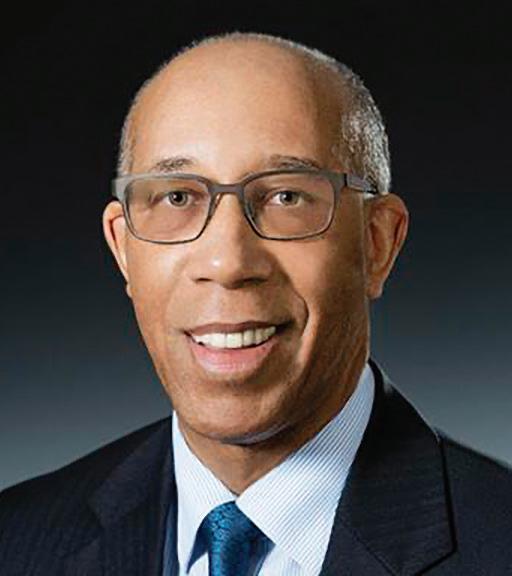
Keith Williamson became president of Centene’s Charitable Foundation in 2020 after serving as its general counsel for 13 years.
dation in 2020 after serving for 13 years as the organization’s general counsel. Prior to joining Centene, Williamson worked for Pitney Bowes for 18 years after beginning his career with Covington & Burling.
He has previously served as board chair for the Urban
League of Metro St. Louis and The Opportunity Trust. Additionally, he has served on the boards of the St. Louis Art Museum, KIPP- St. Louis charter schools, and MathewDickeys Boys & Girls Club. In 2008, Williamson was named Corporate Executive of the Year by The St. Louis American Foundation. In 2017, he was named Corporate Counsel of the Year by the St. Louis Business Journal.
“We are delighted to have Keith as our new board chair as his years of expertise and leadership will greatly benefit United Way and the communities we serve,” said Michelle Tucker, president and CEO of United Way of Greater St. Louis. “Keith has been a strong supporter and volunteer with United Way for many years and his passion for helping people is evident through this commitment. I am excited for his leadership and enthusiasm as we continue to focus our efforts on innovative and transformative change for our community.”
United Way of Greater St. Louis also welcomed the following new board members:
• Abel Anderson, First Mid Bank & Trust
• Paris Forest, Boeing
• Brian Gibson, First Mid Bank & Trust
• Katy Jochum, Wells Fargo Advisors
• P.K. Johnson V, Johnson, Johnson & Nolan Attorneys
• John Koppin, PWC
• Laura B. Ray, Deloitte
• Anne Ritter, Armanino
• Patrick Smith, Ameren
• Charles Stewart, Bi-State Development Agency
• Nora Stupp-Coggin, Stupp Brothers

By Dana Rieck
The St. Louis American
As news broke Wednesday of Justice Stephen Breyer’s plans to announce his retirement at the end of the Supreme Court’s current term, social media became much more active as thought leaders discussed President Joe Biden’s campaign promise to nominate the first Black woman to the highest court in the country.
Breyer, who is 83, was nominated to the court in 1994 by President Bill Clinton. And while his departure gives Biden the chance to nominate the first Black female justice, the court will still hold a Republican majority.
Breyer and Biden formally announced his retirement Thursday afternoon from the White House. During that press briefing, Biden said this was a bittersweet day for him as the two have known each other since the 1970s.
“We’re here to express the nation’s gratitude to Justice Stephen Breyer for his remarkable career of public service and his clear-eyed commitment to making our country’s laws work for its people,” Biden said, “Our gratitude extends to Justice Breyer’s family for being partners in his decades of public service.”
Breyer served on the Supreme Court for 28 years, and prior to that served for decades on the federal bench.
Biden addressed his task of nominating someone to replace Breyer, calling it one of the most serious constitutional responsibilities the president has. He noted he will be sure the nominee will carry on Breyer’s legacy of excellence and decency.
“While I’ve been studying candidates’ backgrounds and writings, I’ve made no decision, except one: The person I will nominate will be someone with extraordinary qualifications, character, experience and integrity,” Biden said. “And that person will be the first Black woman ever nominated to the United States Supreme Court.”
Throughout the Supreme Court’s history, only two Black people (both men) have served as justices: Thurgood Marshall and Clarence Thomas.
Biden said he intends to nominate someone by the end of February and will ask the Senate to move promptly in confirming his nominee.
“It’s long overdue in my view,” Biden went on to say. “I made that commitment during my campaign for president, and I will keep that commitment. I will fully do what I said I would do.”
The Associated Press wrote its White House sources said Biden is focusing on three women right now: U.S. Circuit Judge Ketanji Brown Jackson,
U.S. District Judge J. Michelle Childs and California Supreme Court Justice Leondra Kruger. Jackson is 51 and was appointed as a federal trial judge by President Barack Obama in 2013 and was just recently confirmed to the United States Court of Appeals in the District of Columbia circuit. She once clerked for Breyers and was formerly a public defender, making her a favorite among criminal justice reformers.
Childs, 48, has been a federal judge since 2010, and she faces a confirmation hearing next week for her nomination to the D.C. appeals court. Kruger, 45, sits on the California Supreme Court and was previously a top Justice Department. She is considered by most to be a moderate incrementalist.
Several Black St. Louis leaders took to social media to express their opinions on who should be nominated, and they all agreed it needs to be a Black woman.
“I would love to see a Black woman who will insist on racial, environmental, social, disability, and economic justice named to the Supreme Court,” U.S. Rep. Cori Bush tweeted. “Identity is important, but it is not enough.”
Blake Strode, Executive Director of ArchCity Defenders echoed those thoughts.
“Yes, fill the seat with a Black woman. Hell, fill mul tiple seats with Black women,” Strode tweeted. “But more importantly—yes, *more*—fill the seat with someone who can hold a Black, queer, feminist analysis.”
He went on in another to clarify the criteria he laid out should “disqualify a few names being bandied about like they came out of Mitt Romney’s binder full of Black women.”
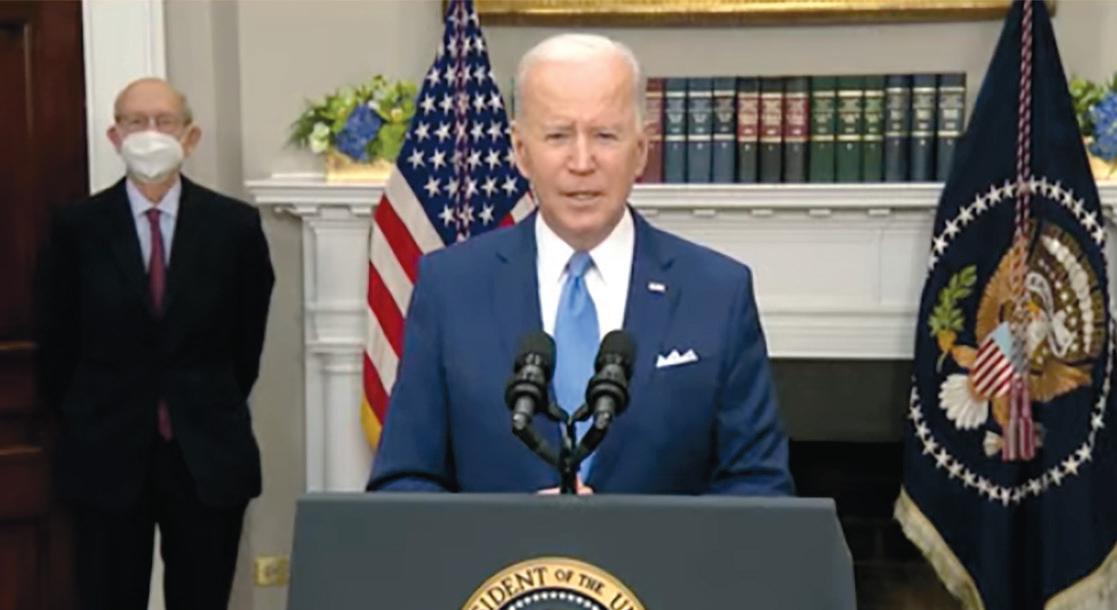


President Joe Biden addresses the nation Thursday afternoon with Justice Stephen Breyer on the announcement that Breyer will retire at the end of the current Supreme Court session.
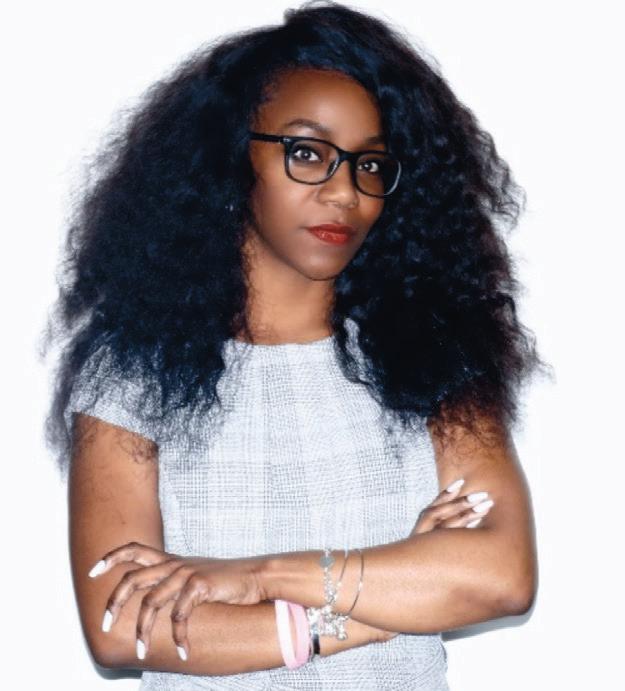

However, in true Josh Hawley fashion, the Missouri Attorney General criticized the left’s politics on Twitter upon hearing the news.
“Moment of truth for Joe Biden,” he wrote. “Will this deeply unpopular [and] divisive president finally reject the radical elements of his party and nominate someone who loves America and believes in the Constitution? Or will he continue to tear apart this country [with] a woke activist?”
Cora Faith Walker, chief policy officer for the St. Louis County Executive’s Office, called Hawley out on his tweet, deeming it a dog whistle— racist rhetoric coded or disguised to appear innocuous.
“My word! The dog whistles are DEAFENING,” she wrote in reply to Hawley. “Here’s a newsflash, Senator Fist Raiser: there are plenty of [B]lack women who love America and believe in the Constitution.”
St. Louis Mayor Tishaura Jones then echoed Walker’s






Receives federal aid as ‘priority facility’

Cong. Cori Bush speaks to federal medical personnel and staff members at
helped secure federal funding to bolster the hospital’s ongoing battle against
By JoAnn Weaver
The St. Louis American
To provide support during the worst surge since the beginning of the pandemic, The St. Louis Metropolitan Pandemic Task Force selected BJC Christian Hospital as a priority facility to receive federal assistance from the U.S. Department of Health and Human Services (HHS).
A team of 44 health care professionals, including doctors and registered nurses, have arrived at Christian Hospital. According to a statement, HHS indicated it could deploy resources to only one local hospital.
On Saturday, Congresswoman Cori Bush (D-MO.), St. Louis County Executive Dr. Sam Page, and FEMA Region 7 Regional
n “Meeting with the federal medical personnel at Christian Hospital gave me hope that when we make our voices heard and work together, we can save lives.”
– Cong. Cori Bush
Administrator Andrea Spillars visited BJC Christian Hospital and met with Christian Hospital President Rick Stevens and the federal medical personnel providing relief in the
Medicaid numbers slow during open enrollment
By JoAnn Weaver The St. Louis American
While Medicaid insurance was expanded to 230,000 newly eligible Missourians in October, enrollment has been slow while a new measure will make it difficult for those who qualify to gain coverage. According to the Department of Social Services Caseload Counter, more than 58,000 Missourians have enrolled in Medicaid as of Wednesday. Enrollment has been slow as only 25% of newly eligible Missourians have signed up for Medicaid. Angela Ellerson, Affinia Healthcare’s director of Outreach Services, leads the healthcare provider’s Medicaid enrollment initiatives.
face of staffing shortages.
“When I visited Christian Hospital late last year, our health care workers expressed the urgent need for relief,” said Bush.
“Additional relief has now arrived.
Meeting with the federal medical personnel at Christian Hospital gave me hope that when we make our voices heard and work together, we can save lives. Securing this assistance marks only a continuation of our work. We will not stop pushing until St. Louis has all we need to make it through this pandemic.”
Page said health care workers “have been overwhelmed by this persistent virus, seeing day after day the toll of COVID-19.”
“These added resources at Christian will
By Dr. Graham A. Colditz Siteman Cancer Center
Looking after our health isn’t always easy.
And, if we’re honest, it can feel a bit overwhelming at times. But one thing we’ve been reminded of lately is the importance of good health.

Despite how it may feel when scrolling through news or social media, taking steps to improve our health can be easier than you might think. Let’s look at four concerns about making healthy changes, and why they may not be as hard as they can seem. It’s hard to keep up. Without a doubt, many different groups offer health recommendations. While there are many reasons for this, it can make it hard to know which advice to follow. The good news is, many steps for improving health and lowering the risk of cancer, heart disease and other conditions are simple. They include:
n Many steps for improving health and lowering the risk of cancer, heart disease and other conditions are simple.
• Eating a diet rich in fruits, vegetables and whole grains – and keeping red meat, sugary drinks and alcohol to a minimum
• Moving your body some amount every day
• Trying to keep weight gain in check
• Not smoking • Seeing a healthcare provider about screening tests or other important care
Trouble reaching my health goals
Whether it’s eating three servings of whole grains a day, getting seven hours of sleep a night or working on something else altogether, it’s great to have health goals. But it can feel frustrating if we don’t reach them. A good way to help avoid that is to set smaller, more achievable goals along the way to your bigger goal. The success of reaching smaller goals builds and keeps you going. Plus, even small changes can have health benefits all on their
“A lot of people are under the impression that A new bill may restrict newly expanded Medicaid insurance
they have time to put in their application if they don’t walk in and do it, and so we’re making confident calls in addition to holding weekly events to engage those clients to come in and enroll,” she said.
Outreach staff assist with Medicaid enrollment, Gateway to Better Health and Health Insurance Marketplace applications, as well as information about Affinia Healthcare services.
Dr. Kendra Holmes, senior vice president and chief operating officer at Affinia Healthcare, spoke about why Medicaid enrollment numbers have been low so far.
“Nationally, the states that have legislators that supported the Medicaid expansion, and Missouri did not originally vote to expand
See MEDICAID, A13

Angela
a Washington University physician and director of the Hypertension Clinic, called Republican attempts at the Missouri legislature to enact work requirements for Medicaid eligibility “a non-starter” because the federal government will not allow it.


“Taking
Continued from A12
offer relief to workers and ensure that patients continue to get the vital attention they need for all aspects of care.”
“All of our staff throughout Christian Hospital have shown dedication and commitment to excellent patient care as we continue together in our mission for health and safety,” Rick Stevens, president of Christian Hospital, said. “This aid serves as a beacon of hope for us as we continue to serve our community during this unprecedented time.”
The St. Louis Metropolitan Pandemic Task Force submitted requests last week for federal aid to support 11 facilities in our region. In addition to the impact from overwhelming numbers of COVID patients, providing resources to underserved communities was a critical factor in choosing Christian, located in North County, as the facility to receive this aid, according to a statement.
In the request, the current
COVID-19 surge is the most challenging disaster ever faced by the health care systems in the St. Louis region, which have weathered this storm over the past two years together. However, it’s now necessary to request assistance from the federal government, according to the St. Louis Pandemic Task Force.
“With every day, we break records in admissions and hospitalizations,” Dr. Alex Garza, SSM Health chief community health officer at and co-lead of the Pandemic Task Force, said. “There is no single healthcare system that has not been impacted by this surge in patients with the entire region facing dire situations. Our hope is that our federal partners swiftly deploy resources to help our depleted and demoralized workforce.”
“This COVID response takes a whole community effort that involves the local, state and federal governments, the private sector, our health care workers and each one of us to help Missouri and our nation move beyond this critical stage in the pandemic,” said Spillars.

St. Louis American staff
A home-based health monitoring program developed by Washington University School of Medicine in St. Louis and BJC HealthCare has been essential in helping Black patients who test positive for COVID-19 but aren’t sick enough to be hospitalized.
A key is providing patients the option to interact through traditional phone calls and not just smartphone apps may still be necessary to ensure home-monitoring programs are accessible to community residents who need them most.
“Our study found that both the app-based and phone-based monitoring programs were effective, but that the phonebased program was more attractive and useful to patients of color and patients living in under-resourced neighborhoods,” the study’s senior author, Thomas M. Maddox, MD, said in a release.
Maddux, a cardiologist, is professor of medicine at the School of Medicine and vice president of digital products and innovation at BJC HealthCare. He also leads the Healthcare Innovation Lab, a joint program between the medical school and the health system.
Continued from A12
Medicaid which is why it had to go to a vote where it was finally expanded, so from a legislative standpoint there has not been a statewide focus on getting the word out about the application process,” she said.
The American reported on the long road to implementation began last April. House
Colditz
Continued from A12
own.
Healthy behaviors are expensive
There are a lot of ways to spend a lot of money on healthy activities – and they’re
addressing the
Maddux said the program was designed to meet the COVID-19 monitoring preferences of patients from across the St. Louis community and thus avoid the “digital divide” that sometimes plagues electronic health efforts.
“The home monitoring program has become an incredibly important tool for helping the hospital system respond to the pandemic, including the current surge in cases we’re now experiencing,” Maddux said.
The home monitoring program was launched in April 2020 for patients of Washington University and BJC HealthCare. It was designed to help medical professionals identify signs of worsening COVID-19 illness early so they could intervene effectively and, ideally, keep patients out of the hospital.
More than 22,000 COVID19 patients have been monitored through the program since its inception, and enrollment is now booming as the Omicron variant pushes infection rates to record levels, overwhelming area hospitals.
The new research, published in the Journal of General Internal Medicine, tracks the experiences of more than 16,000 BJC and Washington University patients who tested
Republicans resisted the will of the voters by removing $1.9 billion allocated for the program’s July expansion when crafting the 2022 state budget.
According to Holmes, a lot of this has fallen on organizations like federally-qualified health centers to spread the word to the community about Medicaid eligibility and enrollment.
Additionally, the House continues to try and impose restrictions on the Medicaid
often on full display on social media. But just as the basics of healthy living are simple, they can also be affordable. Walking is a great exercise, which only really takes a good pair of athletic shoes. Indoor exercise classes can be streamed for free on different platforms. And while healthy foods can cost more than less healthy choices, you can often find affordable, healthy

positive for COVID-19 at the beginning of the pandemic, from April 2020 through December 2020.
The study compares the COVID-19 experiences of about 7,600 patients who enrolled in the monitoring program to a control group of about 9,700 non-enrolled patients with similar health issues and demographic backgrounds, including factors such as race, age, sex, and the socioeconomic status of their home
expansion. House Joint Resolution 117 is a measure would put Medicaid expansion at risk. It would place the issue back on the ballot, make expansion subject to appropriations and enact work requirements for Medicaid.
“The federal government has already decided that they would make the decision that they would not allow work requirements, so this is probably a non-starter,” Dr. Angela Brown, a Washington
options with a little extra effort.
I don’t always feel motivated
Motivation can sometimes be hard to find any time of year. But in the middle of winter, entering the third year of a global pandemic, it may feel particularly difficult. To help, take a moment and remind yourself why you want to be
neighborhoods.
Those in the program had the option of receiving daily home monitoring through phone calls or by using the smartphone app. Every morning, each patient received either a phone call or a ping from the app with a series of questions such as: What is your temperature? How is your cough? Do you have any shortness of breath? How is your appetite?
“The home monitoring program allowed us to identify
University physician and director of the Hypertension Clinic, said. “They have tried this for years now…the federal government stepped in because people were actually losing coverage when they were working because they didn’t understand the process of how to report that they were working.”
Local organizations are strategizing to take action against this legislature that would hinder coverage from vulnerable populations, such as
healthier. Maybe family and friends or an activity you’re passionate about will spark motivation. Many times, just getting started on a behavior can create its own motivation. Instead of waiting for motivation to strike, plan to get started on a behavior instead. Commit to walking for just a few minutes, or to starting the first steps of a veggie chili recipe, and you may find the
County Executive Sam Page said hospitals and healthcare workers “remain overwhelmed by this persistent virus” during his visit to Christian Hospital.
A key to follow-up care for Black patients who contracted COVID-19 but were not sick enough to be hospitalized is keeping track of their progress through traditional (landline) phone calls, according to Washington University School of Medicine/BJC Healthcare research.
patients who really needed help right away,” Maddox said. “Without access to home monitoring, some of these patients may not have made it to the emergency room until they were a lot sicker, and more of them might have needed to be hospitalized.”
Black enrollees selected phone-based monitoring more often than the smartphone app, and Black patients using the phone option dropped out of the program less often
cancer patients. “The voters approved access to expanded Medicaid through the ballot measure in 2020, but this would take back to the ballot the Medicaid expansion constitutional amendment… now this joint resolution is trying to have it decided on an annual basis if people can be eligible for this access to healthcare,” Emily Kalmer, government relations director at the American Cancer Society Cancer Action Network, said.
than those using the app. Similar findings held true for older patients and those from under-resourced neighborhoods.
While the phone option ensured that people who did not have a smartphone were not shut out of the program, the researchers discovered that even patients with better digital access sometimes preferred phone calls. Many said they were scared and isolated, and simply wanted to talk to someone. A friendly phone call may provide enough reassurance to prevent some relatively well COVID-19 patients from making an unnecessary trip to an overcrowded emergency room, the researchers noted. Bradley Fritz, MD, an instructor in anesthesiology and a recent clinical fellow in the Innovation Lab, is the study’s lead author.
“The key lesson we learned is that a one-size-fits-all approach may not be the best approach if we want to reach the entire community,” he said. “That philosophy needs to remain at the forefront not only during the COVID-19 pandemic, but also as we develop remote monitoring programs for other common health conditions like heart failure in the future.”
“Now that we know this is giving cancer patients access to screenings and treatments, we don’t want to send this back to the ballot and put that care at-risk.”
According to the American Cancer Society Cancer Action Network, an estimated 37,480 Missourians will be diagnosed with cancer this year, which makes the Medicaid expansion more important than ever in care for the uninsured.
boost you need to keep going. It might not always feel easy to do, but it can help. The world around us can feel increasingly complicated, but a handful of relatively simple behaviors can go a long way to improving well-being and lowering the risk of disease. And small changes can have important benefits – today and in the future. It’s your health. Take control.
Dr. Graham A. Colditz, associate director of prevention and control at Siteman Cancer Center at Barnes-Jewish Hospital and Washington University School of Medicine in St. Louis, is an internationally recognized leader in cancer prevention and the creator of the free prevention tool,



PRESENT:
PRESENT:



When we’re lucky enough to have a chance to go out for dinner, there are a few ways to stay healthy with our food














Calculate BMI

for several different reasons.
We each need at least 3 servings per day of whole grains. But what does that mean? How can we know what foods contain whole grains?
See if the restaurant will let you “share” a meal. Many meals are two, three or more times an actual serving size.
In our “Super-Size” world, we can easily lose track of what an actual serving size means. When reading labels on a food or drink product, you can determine the nutrients, sodium, fiber, sugar and calories of a serving size. But be careful; just because it looks like one small bottle
Look at the ingredients list of a package of food you are about to eat. If the word “whole” is used, then there is most likely a whole grain ingredient. A few items that don’t use the word whole
As soon as you’ve divided your plate into the right size servings, ask your server for a to-go box. Go ahead and box up what you don’t need to eat right away. You can enjoy
When shopping, it takes a pretty good “Food Detective” to know what is really good for you; don’t just read the front of food product packaging. Food
Let’s make a game out of exercise!
First, locate either a deck of cards or two dice.
those leftovers for lunch the next day!
As spring approaches, warmer weather allows us all to get more outdoor exercise. Here are some ways to become a more active person.
are popcorn, wheatberries, brown rice and wild rice.
> Ask the server how the different menu items are prepared. Fried, sautéed, and
companies are quite clever when thinking of creative ways to make you believe that something is healthy.
lifestyle. You can do this by forming new habits. For example, if you decide to eliminate sugary drinks completely, it only takes a few weeks until this becomes what you’re used to.
It’s important that before you embark on any kind of exercise to remember two things: warm up and cool down. Start with some slow stretches and movement (like walking) to increase your heart rate a little. Warm up for a good five minutes before increasing your heart rate.
> Decide you’re going to switch from soda to water.
Getting plenty of whole grains in your diet can improve your health and reduce your chance for some chronic illnesses such as stroke, diabetes, heart disease and high blood pressure. Visit wholegrainscouncil.com for more information.
Here are the steps to making a healthy permanent change. We‘ll use the sugary drink change as an example.
March 20, 2021, is the first day of spring. With spring comes warmer weather and longer days (later sunset). Make it a habit to spend as much time playing outside as the weather allows.
Next you’ll need to make a list of different types of exercise: jumping jacks, sit-ups, lunges, etc. Write each exercise item on a small piece of paper or index
Stretching is an important part of any healthy exercise plan. Slowly extend your fingers, hands, and arms until you feel the muscles stretching. Do the same for your toes, feet and legs. Then slowly bend over to stretch the muscles in your back. Do each stretch for 10-30 seconds, and don’t stretch to the point of pain.
INGREDIENTS: Whole Grain Wheat, Sugar, Corn Bran, Wheat Bran, Inulin, Gylcerin, Whole Grain Rolled Oats, Crispy Rice-Oat Bits (Rice & Oat Flour, Sugar, Malt Extract, Salt, BHT), Corn Syrup, Brown Sugar, Barley Malt Extract, Salt, Toasted Oats (Whole Grain Rolled Oats, Sugar, Glucose-Fructose, Soybean Oil, Honey, Molasses), Golden Syrup, Wheat Bits (Whole Wheat Flour, Corn Starch, Corn Flour, Sugar, Salt, TrisodiumPhosphate, Baking Soda, Annatto and Caramel Color), Malt Syrup, Honey, Calcium Carbonate, Caramel Color, Trisodium Phosphate, Hydrogenated Soybean and Cottonseed Oil, Natural and Artificial Flavor, Cinnamon, Wheat Starch, Tocopherols, BHT. Vitamins and Minerals: Niacinamide, Pantothenate, Pyridoxine Hydrochloride (Vitamin B6), Folate, Iron. CONTAINS WHEAT INGREDIENTS. MAY ALSO CONTAIN ALMONDS, SOY AND MILK INGREDIENTS.
> NEVER walk on a “frozen” pond, lake, river or any other body of water. Just because it looks frozen does not mean it is safe.
> Start by substituting one drink per day to water.
> Avoid gravies, cheese sauces and other kinds of toppings that often just add fat and calories.
Melissa Douglass, MSW
Latoya Woods, DNP, APRN, FNP-C
> Every few days increase the amount of water and decrease your soda intake.
> After 3-4 weeks, this change will become a habit.
even simmered can all mean, “cooked in oil.” Instead, choose baked or grilled options.
of soda — it may not be considered one serving size. For example, a 20-oz bottle contains 2.5 servings. So if the bottle states “110 calories per serving,” that means the entire bottle contains a total of 275 calories! Remember to watch those serving sizes and you’ll have better control over what you’re eating and drinking.
> Stick with water to drink. Not only will you save money, but you won’t be adding in extra calories from a sugarfilled drink.
Learning Standards:
Learning Standards: HPE 2, HPE 5, NH 1, NH 3, NH 5
Secondly, when you are finished with any kind of strenuous (very active) exercise, take some time to cool down. You can slowly stretch your arms and
Instead of playing video games — play baseball, football, badminton, or some other active game.
Just because a product says, “Healthy, Organic, Natural” or even “Good For You!” doesn’t mean
> What are other ways to stay healthy while dining out?
When you automatically reach for water instead of soda, it has now become a lifestyle change!
that it is a healthy choice. As we’ve discussed in previous weeks, always read the labels to see if the food product really is a smart food for you to eat. As a class, discuss some of the ways to read a label. What are some of the things to look for in an ingredient list? How can you know if a food really is healthy? Hint: Refer to previous Healthy Kids pages for ideas.
Learning Standards: HPE 1, HPE 2, HPE 5, NH 1, NH 5
Learning Standards: HPE 1, HPE 2, HPE 5, NH 1, NH 5
Learning Standards: HPE 2, HPE 5, NH 1, NH 5
Instead of watching TV — ride your bike with friends.
Stretching helps your muscles warm up and increases your flexibility, range of motion and blood flow to the muscles.
Stretching can prepare your body for exercise and prevent injuries to your muscles.
Learning Standards: HPE 2, HPE 5, NH 1
Some fun outdoor games to play include tag, kickball, basketball, Frisbee, and bicycling. Choose activities that increase your heart rate
Instead of surfing the ‘Net — go for a brisk walk around the neighborhood.
Break into small groups and define what it means to be a bully. Share your ideas with the class. Did you have the same things listed (as the other groups) that you would consider as bullying behavior?
card and fold into a small square. Put these squares into a bowl. Take turns rolling the dice (or drawing a card) and selecting an exercise from the bowl. The total number on the dice or card tells you how many of the exercise you must do. Face cards (king,
legs again, and continue with reduced speed movements until your heart rate begins to slow down.
and breathing. You want to have fun, but it’s also a great way to help keep your heart, lungs and body healthy. Make a list of your favorite 10 activities to do outdoors. Compare your list with your classmates and create a chart to see what are the most popular.
Can you think of other ways to be more active? Going outside and staying active not only increases your heart rate and burns calories, but it also helps you build friendships!
This warm-up and recovery period is important for your heart health. It also helps to reduce the amount of muscle pulls and strains.
Learning Standards:
HPE1, HPE 2, HPE 5, NH 1, NH 5
Learning Standards: HPE 2, HPE 5, NH 1
Deborah Edwards, School Nurse
Dr. Henry Bernard Randall, MD, MBA, FACS, FAST, FASTS

queen or jack) should all count as the number 10. Aces are “wild” and you can do as many as you want! To really challenge yourself, have one person roll the dice and the second can select the exercise. See who can complete the exercise challenge first!
Learning Standards: HPE 1, HPE 2, HPE 5, NH 1
> What to do if you see someone else bullied.
Learning Standards: HPE 2, HPE 4, HPE 5, NH 1
If an adult (or much older child) offers you a ride, or asks you to help him/ her locate a lost puppy (or kitten, or a lost child), do not get close to the
Now back in your groups, create a newspaper ad that includes at least two of the following:
A BMI (Body Mass Index) is a generic way to calculate where your weight falls into categories (thin, average, overweight, obese). However, it’s a good idea to remember that a BMI may not take into consideration many things such as athleticism (how athletic you are), your bone density and other factors. Discuss your BMI with your
How much time do you spend each day looking down at a phone, laptop or video game?
Chiropractors around the country see young patients every day suffering from back, neck and head-aches resulting from the extra strain you put on your body when you look down for long periods of time.
> If you are with someone that falls through the ice, first run (or call) for help. Do not try to go out onto the ice to help your friend. You can fall through the ice too.
> How bullying hurts others.
> What to do if you are bullied.
doctor if you have any questions. The formula to calculate your BMI is 703 X weight (lbs) ÷ height (in inches/squared) or search “BMI Calculator” to find an easy fill-in chart online. If your number is high, what are some ways to lower your BMI?
> What to do if YOU are the bully.
> Also — remember to look up! Icicles injure numerous people every year. If you see large icicles forming over your front steps, ask your parents to use a broom handle to knock them off to the side before they break loose from your gutters.
1. Most importantly — take breaks! Have a goal of a 3 minute break every 15-20 minutes. Move around, stretch your neck and relax, without looking down!
stranger or his/her car. This is one of the most common ways that children are kidnapped every single day. And if an adult offers you a ride or asks for your help, immediately run to a trusted adult and tell him or her what just happened!
Ingredients:
Ingredients:
> What other ice hazards are there?
Learning Standards: HPE 5, NH 5
Look through the newspaper for examples of ad layouts and design. Discuss the words “compassion,” “empathy” and “sympathy.” How do they each play into your response to bullying at your school?
Learning Standards: HPE 1, HPE 2, NH 5
Ingredients:
1 15-Oz Can Garbanzo beans
1 cup blueberries
1 Large Banana, 2 Tbsp Peanut butter, 1 Tbsp Honey
Toppings: Dried fruit, nuts, seeds, coconut, etc.
2. Set your tech device in a holder to keep it at eye level, reducing the need to look down.
1 cup non-fat Greek Yogurt
1 Garlic clove, crushed
Learning Standards: HPE 2, HPE 5, NH 4
Learning Standards: HPE 2, HPE 5, HPE 7, NH 5, NH 7
“Questions or comments? Contact Cathy Sewell csewell@stlamerican.com or 314-289-5422
> When walking on icecovered roadways or sidewalks, take baby steps. Walk carefully and slowly.
A couple of quick tips that will reduce that strain on your neck are:
Learning Standards: HPE 1, HPE 2, NH 1, NH 5
Directions: Stir peanut butter and honey until smooth. Slice banana lengthwise and spread both cut sides with peanut butter. Sprinkle toppings on the peanut butter.
Banana PB Smoothie Ingredients: 1/2 Cp Vanilla Greek yogurt, 3 Tbsp Natural peanut butter, 1 Ripe banana (sliced and frozen), Splash of vanilla (optional) 6 Ice cubes
2 Tsp Cumin, 1 Tsp Olive oil, ½ Tsp Salt Directions: Combine all ingredients in a blender until smooth. Enjoy with baked tortilla chips or raw vegetables.
Directions: Blend all ingredients until Smooth. Makes 2 yummy smoothies!
Directions: Spread peanut butter on four of the crackers and top with sliced strawberries. Drizzle with honey and top with the other crackers to make four cracker-wiches.
Directions: Drop each blueberry into the yogurt. Using a spoon, swirl around to coat and place each blueberry on a cookie sheet topped with parchment paper. Freeze for at least an hour.



Where do you work? I am a family nurse practitioner for BJC Medical Group.
Where do you work? I am the founder and distance counselor for Goal Driven Counseling, LLC.
Where do you work? I am a school nurse at Monroe Elementary School.
Where did you go to school? I graduated from Sumner High School. I then earned Associate Degree in Nursing from Forest Park College and a BS in Business Administration from Columbia College.
Where did you go to school? I graduated from McCluer High School. I then earned a Bachelor of Nursing and a Master of Nursing Practice from the University of Missouri – St. Louis. And finally, I earned a Doctorate of Nursing Practice from Maryville University.
Where do you work? I am a school nurse with St. Louis Public Schools.
Where did you go to school? I graduated from Whitney Young Magnet High School in Chicago, IL: same as former first lady Mrs. Michelle Obama. I then earned a Bachelor of Science in Social Work, and a Master of Social Work from the University of Missouri – St. Louis. I also completed two more years of supervision and exams to become a Licensed Clinical Social Worker in the state of Missouri.
Where did you go to school? I graduated from McCluer North High School. I earned an Associate of Applied Science in Nursing from Meramec College in Kirkwood and completing my bachelor’s degree at Webster University in Webster Groves.
Where do you work? I am the professor of surgery, executive director, Center for Abdominal Transplantation, kidney, liver and pancreas, transplant surgeon and general surgeon. Where did you go to school? I grew up in Detroit, Michigan. I earned a Bachelor of Science in Medical Technology from Michigan State University, Lansing, Michigan, a Doctor of Medicine from Wayne State University in Detroit, Michigan, a Master of Business Administration from the University of Missouri, Columbia, Missouri, and I’m currently studying to become board certified in Artificial Intelligence in Medicine.
What does a school nurse do? I assess the concerns of students who are ill, injured or experiencing alterations in their normal health. Nurses screen daily staff, students and visitors for safety. Monroe School is a pilot school for Covid-19 test sites in partnership with the city.
What does a family nurse practitioner do? Each day I have office visits with patients to help treat new health conditions and/or manage established health conditions. I perform physical examinations on patients, order labs, read x-rays results, and more.
What does a school nurse do? I love giving students medications, so they’re able to focus on learning. I clean and bandage wounds. I use medical equipment like a stethoscope, for example, to evaluate whether or not my asthmatics are breathing well. Moreover, I teach and promote healthy habits to my students.
What does a Licensed Clinical Social Worker do? I use technology to help teens and young adults explore their emotions, better understand their feelings, work through relationships, and address common challenges completely online through a computer, tablet, or smart phone. Similar to a Facetime call, I support and guide my clients from the comfort of their home or private location where they are comfortable
What are some things you do on the job? I oversee the entire transplant program and work with different doctors, nurses, and other health care personnel. I take care of patients who need or have had a transplant (liver, kidney, pancreas). I conduct research in basic science, clinical outcomes, and artificial intelligence. One of the most fun things I do is business development.
Why did you choose this career? I chose this career to help improve the health of my community.
Why did you choose this career? I love nursing because there are many opportunities in hospitals, schools, clinics and offices, insurance, legal and research. My passion is working in the schools with students, parents, staff and community partners.
Why did you choose this career? I am a St. Louis native, and was an asthmatic child who experienced frequent hospitalizations. Besides having the influence of nurses in my family, the local nurses who helped take care of me were my “angels” and always managed to nurse me back to health, thus sparking my interest.
Why did you choose this career? I chose this career because I enjoy being a support to teens and young adults in a very challenging phase of life that can be overwhelming. I enjoy teaching them how to best take care of themselves so they can live healthy and fulfilling lives.
Why did you choose this career? I loved science and mathematics. Transplant was a new discipline in the 1980s (a new specialty medicine); there was a lot to discover. I knew I could develop my own pathway and choose how I wanted to practice. I could also do cancer operations of the liver and pancreas, and other parts of the intestinal (GI) tract.
What is your favorite part of the job you have? Many chronic health conditions (diabetes, high cholesterol, high blood pressure) are preventable, and early detection is key. Thus my favorite part of the job is partnering with patients to establish and manage a plan to help them each live a long and healthy life.
What is your favorite part of the job you have?
What is your favorite part of the job you have? I enjoy having a lot of things to fix and puzzles to solve, and teaching and mentoring students.
What is your favorite part of the job you have? I enjoy when a child tells you, “I want to be a nurse.” And best of all, I love the smiles, hugs and “thank-yous”.
Learning Standards: HPE6, NH3
Learning Standards: HPE6, NH3
What is your favorite part of the job you have? I love that my job makes talking about mental health not as scary and even makes it kind of cool. I love that I get to build valuable relationships with so many people that trust me to be there for them. I love that no matter where my clients are, we can simply connect with a video call and I can not only support them through hard times, but lots of good times as well.
My childhood health challenges have given me sensitivity to children suffering with illness. After being given a new lease on life, I consider it an honor to be in a position to promote health to the children of my community, in whatever capacity I serve – in turn, being their “angel.”
“Questions or comments? Contact Cathy Sewell csewell@stlamerican.com or 618-910-9551
Learning Standards: HPE6, NH3
Learning Standards: HPE 6, NH 3
Learning Standards: HPE6, NH3
“Questions or comments? Contact Cathy Sewell csewell@stlamerican.com or 314-289-5422
“Questions or comments? Contact Cathy Sewell csewell@stlamerican.com or 314-289-5422
“Questions or comments? Contact Cathy Sewell csewell@stlamerican.com or 314-289-5422




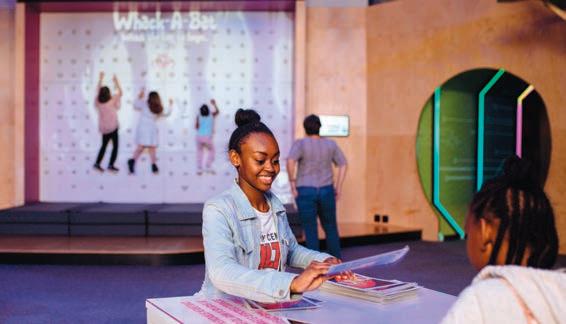


program provides newspapers and resources to more than 8,000 teachers and students each week throughout the school year, at no charge.

Teacher Mrs. Keys shows 8th grade College Prep Academy students Arlazza


Cell phones are constantly changing and evolving, offering many new features and designs.
These advances also bring about responsibility and expectation. Remember the following rules and guidelines when using your cell phone.
z Silence is Golden
When you are in public, your phone should ALWAYS be on silent.
x To Talk or Not to Talk—If you receive

Background Information:
In this experiment, you will explore the properties of static electricity.
Materials Needed: • Balloon • Unflavored Gelatin Powder • Paper Plate• Wool Scarf or Sweater
Process:
q Pour unflavored gelatin powder on a paper plate.
w Blow up a balloon, and tie it shut.
e Rub something made of wool against the balloon for 10 seconds. The balloon is now charged.

a phone call, it is not polite to answer your phone in a public place or in the company of others. You need to excuse yourself to a private location.
c Tasteful Texting
Be sure your texts are respectful. Do not text anything you would be embarrassed or ashamed to share with everyone face to face.
v Say Cheese—when taking pictures, you must ask the person their
permission before taking his or her picture. It is not acceptable to take a picture of a person without their consent or permission. Do not share or post photos that may embarrass someone. If in doubt, ask first.
b App Allure—When downloading apps, be sure you are mindful of the cost and the amount of data that it consumes. Also, be sure you have your parents’ permission before you download anything to your phone.
Learning Standards: I can read nonfiction text for main idea and supporting details.
r Hold the area that is charged (the part that you rubbed) above the plate of gelatin. What happens? Slowly raise the balloon. What happens? t Next, alter the experiment. Try using flavored gelatin that is sweetened and gelatin with artificial sweetener. Try replacing gelatin with salt. Try rubbing the balloon with a different material, like polyester or silk. Change one item in the experiment, create a hypothesis for how it will change the results, and repeat the experiment.
Learning Standards: I can follow sequential directions to complete an experiment. I can analyze results.


Jesse E. Russell was born in Nolensville, Tennessee, on April 26, 1948. He grew up in inner-city Nashville with his parents and ten siblings. Russell was an honor student and earned his bachelor’s degree from Tennessee State University in electrical engineering in 1972. He was the first African American to be hired by AT&T Bell Laboratories directly from a Historically Black College and University (HBCU). In 1973, he earned his master’s degree in electrical engineering from Stanford University.
While at Bell Laboratories, Russell worked in the cellular and wireless communication field, introducing digital cellular technology in the US. He holds three patents for cell phone technology systems. He served as vice president of Advanced Communications Technologies for AT&T from 1996 to 2000. Then, he became the president and CEO of incNETWORKS, Inc. — a company which develops wireless voice, video, and data communications equipment.
Russell is considered to be an inventor, engineer, and business executive. He has worked in numerous professional organizations, presented at conferences, and received many awards. Eta Kappa Nuand named him the Outstanding Young Electrical and Computer Engineer Award. In 1992, he was named U.S. Black Engineer of the Year. He is a member of The Institute of Electrical and Electronics Engineers, Inc, Eta Kappa Nu, and the National Academy of Engineering.
Learning Standards: I can read a biography about a person who has made a contribution in the fields of science, technology, and mathematics.


Use the newspaper to complete the following activities.
Activity One — Figurative
Use your math skills to compare these three cell phone plans and complete the chart.
Plan A = $30/month. The first 200 texts are free. Each additional text is 10 cents.
Plan B = $40/month. The first 1,000 texts are free. Each additional text is 10 cents.
Plan C = $65/month. The first 2,500 texts are free. Each additional text is 10 cents.
Analyze: Based on the results and your family’s use of texting, which plan would be best for you? Why?
Learning Standards: I

Nomophobia is the fear of being without your cellphone or losing your signal.

Language: The sports section is a great examples of figurative the sports section to find examples of idioms, similes, metaphors, and hyperbole.


Activity Two — Fractions to Decimals:

Use the newspaper to find examples of numbers that can be written as fractions, for example ½ dozen eggs, ¾ cup of sugar. Change these fractions to a decimal, ex: ½ = .5, ¾ = .75.
Learning Standards:
I can use the locate information.
I can identify figurative language. I can convert fractions to decimals.




A Fort Zumwalt South High School mother has spoken out after learning the school’s white principal used the word “negro” during Tuesday’s schoolwide morning announcements
Leah Lee-Burnett posted Wednesday morning about the incident on Facebook, and within hours the post had been shared over 500 times and had over 100 comments. She wrote the principal said “happy negro week” over the intercom.
But Fort Zumwalt South High School Principal Kevin Keltner contends this was taken out of context, telling The St. Louis American he used the word in reference to historical information about Carter G. Woodson, who launched “Negro History Week” in 1926.
Lee-Burnett, who is Black, is a mother to both a freshman and a senior who attend Fort Zumwalt South High School in St. Peters. She said she’s angry about this incident, especially given that her freshman son has been bullied by his white wrestling teammates who have asked him if they can call him the N-word.
“No wonder these kids are asking if they can call my son a [N-word], because the head of the school is using that [kind of] vernacular as well,” she said.
However, Janice Mathis, executive director of the National Council of Negro Women said she does not consider the word negro, used in a historical context, to be a slur.
“Black people have gone by many names,” she said, noting the evolution from colored people to Negro to now Black or African American. “At the time, the term Negro actually represented an improvement.”
Mathis said younger members of her organization, who are less familiar with the historical context, were less likely to prefer the term Negro.




“So it’s just an indication really that history matters,” she said. “And the more we know about where we’ve come from, the better we understand where we are.”
Lee-Burnett said she spoke with the freshman class principal, Angie Hahn, about Tuesday’s announcement but was unsatisfied with that conversation. She hopes to speak with Keltner, the Board of Education and the superintendent about what she says is an ongoing occurrence of race-related issues.
“I’m hoping that the school district will be held accountable for these types of racist antics because, again, it didn’t just start this year, my first experience was two years ago,” she said. “So, I can only imagine how many times this has happened since then and or before. So, I would like for the school and the school district to be held accountable. I would like a public apology to all of the students.”
Fort Zumwalt South High School has just under 1,400 students, according to the National Center for Education Statistics. Of those, approximately 89 are Black and 1,086 are white.
“We’re aware of some rumors among a few individuals regarding yesterday’s morning announcements at Fort Zumwalt South High School, and what you’ve described is in no way what was announced yesterday morning as part of our daily announcements,” Keltner wrote in an email to The St. Louis American. Keltner wrote that in honor of Black History Month, the school is highlighting an individual each school day who made a significant historical impact. He sent the biographical paragraph he said was read during the announcement Tuesday: “Carter G. Woodson was born in 1875. Neither parents could read or write. Mr. Woodson had to work to earn money for the family and did not start school until later than most children. His motto was “it is never too late to learn.” He became a high school teacher; and was sad to discover that none of the schools taught the history of Black Americans. He started the Association for the Study of Negro Life and History. On February 19, 1926, he established “Negro History Week.” Woodson chose this date to coincide with the birthdays of Frederick Douglas and Abraham Lincoln; two men who had greatly impacted the black population. Over time, “Negro History Week” evolved into the “Black History Month” that we know today; a four-week long celebration of African American History.” After learning of Keltner’s response to the accusations, Lee-Burnett said she still doesn’t believe this justifies his use of the word and thinks it’s absurd she’s having to debate its use in 2022. She also said that students are contradicting his account of what exactly was said.
Keltner did not immediately respond on whether he believes it was appropriate for him to use the word in any context.
“I hope it’s not just swept under the rug—this is another example of how Black lives don’t matter,” she said.
Chad Harrell filmed a group of skaters recently at Skate King. His online business, SkateLyfeCO, wheels and deals videos and merchandise to the roller skating community in St. Louis and throughout the U.S.

By Alvin A. Reid
The St. Louis American
Chad Harrell got on a roll when he decided to leave his first career choice behind and become an online entrepreneur.
“I was an AT&T technician, installing cable television and satellite. I hated it,” he said with a chuckle.
What was not humorous, Harrell said, was the mental stress the job was putting on him. He took a 30-day leave to figure out his next career move.
“I’ve been roller skating all my life and during those 30 days I skated almost every day,” he said. Fate stepped in, he explained, when some-
n “It’s not only part of the roller-skating community, it is a historic part of the Black community.”
– Chad Harrell, entrepreneur
one taped him doing some moves while skating backward at Skate King and texted the file to him. He posted it and soon more than 7,000 people had viewed it. He began videoing other skaters on his I-Phone, posting the videos “and it grew a community.”
“I have never taken a film class in my life. I enjoyed doing [the skating videos.] I was unhappy. I was leaving my job. I decided what to do,” Harrell said.
“I came back [to AT&T], resigned and on Oct. 12, 2017, I created an LLC and started SkateLyfeCO.com” Harrell’s site is at www.facebook.com/SkateLyfeCo/ He was out daily recording skaters at rinks including Saints and The Palace and within a year had 5,000 followers. Five years later, he has more than a half-million followers and almost 90,000 subscribers to its YouTube channel.
“It just took off,” he said.
To ensure a smooth path as a self-employed
See ROLLER SKATING, B2
Spire Men’s Program to expand
St. Louis American staff
St. Louis City Public Schools and Spire are in connection to help male students.
The Spire Men’s Program pairs company employees with male students at Sigel Elementary School who could face barriers to success.
“Spire already had a relationship with Sigel Elementary through its annual backpack giveaway program,” said Sarah Heaney, Sigel academic instructional coach.
“During the most recent giveaway, Spire employees asked if there were additional ways to support the students. The principal encouraged them to come talk to our males, and the program was birthed from there.”
Six Spire employees now serve as mentors and meet with two students twice a month for an hour. Discussion topics have ranged from class work to conflict resolution.
“As a company, when we see a need in our

communities, we act,” said Rex Thompson, Spire employee engagement specialist, Men’s Program coordinator and mentor.
“The best way to help advance communities is through children, so we were happy to volunteer. So far, it’s been going really well.”
Spire’s Rex Thompson, a mentor with the Spire Men’s Program, connects with Sigel Elementary School sixth grader Keith Rucker during one of their recent sessions at the school. The program pairs company employees with male students who could face barriers to success.
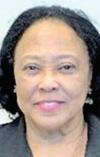
Heaney hopes the program produces positive skills the students can take back to their classrooms and use throughout the future.
“We’re excited that our students have some-
Carolyn Seward, founder and CEO of Family Workforce Centers of America, was recently named to the board of trustees of Wyman. She has managed field and staff operations for over 35 years and has 20 years of experience in total quality management evaluating and analyzing organizational data at for-profit and nonprofit businesses. In 2011, she established Family and Workforce Centers of America, a non-profit organization with a mission to continue to serve youth and families. Seward holds an undergraduate degree in business administration and economics and has a master’s in management and human resources from Webster University in St. Louis.
Yarbro promoted at KMOV

Latonya Yarbro was recently promoted to the position of senior producer at KMOV-TV. Prior to joining KMOV in St. Louis, Yarbro was a producer at Fox59 in Indianapolis. Yarbro has a bachelor of arts degree in broadcast journalism from Indiana University Bloomington where she was a Founders Scholar. She is a member of the Greater St. Louis Association of Black Journalists. Seward appointed to board at Wyman
Hawkins named to HNB board

Jeanetta Hawkins, founder and CEO of Personal Touches by Jeanetta, was named to the board of Habitat for Neighborhood Business. Hawkins is a special events design and party rental company with over 33 years of creative design experience. She works hard for corporations, social clients and nonprofit organizations by providing everything they need in order to have a successful event. PTBJ has serviced corporate and social events, grand openings, premieres, new product launches, press conferences, celebrity events, and marketing/branding for clients.
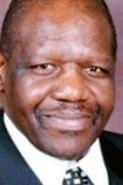
Christopher Hicks, an experienced, results-oriented, environmental, health and safety (EHS) professional, was recently named to the board of Wyman. He has extensive experience and expertise in management systems, regulatory compliance, process/project reviews, auditing, training, inspections, and incident investigations. He has worked for employers in the chemical, pharmaceutical, biotechnology, food, and steel industries. He holds a MS degree in industrial safety from the University of Central Missouri and a dual BS degree in safety management and environmental safety from Indiana State University.


First Mid Bancshares, Inc. has appointed Gisele A. Marcus to the company’s board of directors, effective January 25th, 2022. Marcus will also serve on the board of directors of First Mid Bank & Trust, which is a subsidiary of the company.
Marcus currently serves as a professor of practice at Washington University in St. Louis where she focuses on diversity, equity, and inclusion to prepare students with the tools and techniques for DEI in the workplace. Marcus also currently serves as the vice president of operations and client engagement at One Stone Development Company LLC, where she ensures operational efficiency and leads client development activities.
A five-time general manager, Marcus has worked with Fortune 250 companies, such as Johnson Controls, Thermo Fisher Scientific, and AT&T. Marcus has also held the role of chief operating officer of the St. Louis Regional Chamber..
“We are delighted to welcome Gisele to the First Mid team,” says Joe Dively, chairman and CEO at First Mid.
“As the former chief operating officer of the St. Louis Regional Chamber, she will be a strong advocate for this strategic growing market. Her role as an executive with success in solving talent and culture focused challenges will provide valuable insight towards making us a stronger employer and enhancing our employee engagement initiatives.”
“I am excited to join First Mid’s board of directors. This group of dynamic individuals is more than prepared to address the challenges facing the community banking industry today. Our commitment is to continue driving profitable growth for the bank while ensuring that we build and enhance our rela-
Continued from B1 body they can talk to about different things that are going on at school and learn some coping and self-regulation skills that they can take back into their classrooms,” she said. Cedric Young, Spire field supervisor, said his goal as a mentor is to have a real impact. “Through this mentorship pro-
Continued from B1 business owner and to avoid taking a tumble, Harrell knew he had to turn a profit. His business was a fit with the Facebook Partner Program (now known as Meta Business Partners,) and the wheels of success began spinning.
According to Meta’s website, its services include “helping grow your business, from running ads, to selling products, to engaging with customers.”
Harrell said it gathers and shares information including

tionships with our employees, our customers, our vendors, and the communities in which we deliver services. I will bring my enthusiasm, operational experience, and zeal for the community to this position,” stated Marcus.
Marcus earned her bachelor of science in management information systems and transportation distribution management from Syracuse University’s Whitman School of Management and her MBA in general management from Harvard University Graduate School of Business.
Marcus serves several volunteer organizations. She currently sits on the Board of Trustees for Syracuse University, serves as co-chair of International Trends and Services for the Archway (MO) Chapter of The Links, Incorporated, serves as chair for Delta Sigma Theta Sorority Inc., Kappa Lambda Chapter’s $1 million endowment cam-
gram, I want to put smiles on these guys’ faces and give them something to look forward to. If I can just reach one child, I think I’ll be greatly satisfied.”
A Spire Men’s Program will begin at Herzog Elementary later this school year.
Part of the Spire Serves community engagement program, the Men’s Program “is a strategic component of Spire’s corporate social responsibility efforts,” according to a Spire release.
data on who views his website, who clicks advertisements, and rate of clicks per minute.
Along with advertising revenue, SkateLyfeCO produces a skating fashion line which is available through the website.
Harrell said the roller-skating community, throughout the U.S. and the world, shares the positivity and “good feelings” skating brings to people.
“A lot of people may not understand why people skate. It’s fun. It’s something positive and it’s a community of people who care about each other.”
A 2020 American Sports Data survey concluded 10.8 million people ages 6 and above roller skate, using tradi-

paign at Syracuse University, and serves as finance board chair of the Children & Family Institute in Dallas, Texas. In addition, she is the past board chair of Black Repertory Theatre and past president of the Harvard Business School Club of St. Louis, Missouri. A voice for business culture, Marcus is a TEDx speaker on networking and relationship building.
Some national organizations she’s spoken for include the Association of Chamber Executives, National Sales Network, Toastmasters International District 25, and Syracuse University. She has been featured in Huffington Post, Black Enterprise, Milwaukee Business Journal, and St. Louis Business Journal, as well as a repeat guest on Good Morning St. Louis. A lover of international travel, her favorite continent is Africa, where she has explored eleven countries.
It includes employee volunteerism and donations to local organizations, enabling employees to use the strength of their collective energy to champion people and advance communities, the release says. To learn more about Spire’s efforts in the community, visit SpireEnergy.com/community
Photo caption: Spire’s Rex Thompson connects with mentee Sigel sixth grader Keith Rucker
tional quad-wheel skates. The activity draws skaters of all ages, something that appeals to the 38-year-old Harrell.
“I see a lot of different age groups. Sometimes they are older, sometimes they are younger. It depends on the nights; the music being played that evening. There is something for everyone, including families,” he said.
Harrell was raised in the Walnut Park neighborhood and began skating when he was 6.
“My mom took me to a birthday party,” he said. The cultural significance of roller skating is also part of the activity’s popularity, according to Harrell. The 2019 HBO documentary “United Skates,” explained the role it played in the quest for equality.
“In the segregated 1960s, most roller-skating rinks were off-limits to Black skaters, but that didn’t stop the Black community from embracing the pastime,” said the documentary’s writers.
“African American skaters had to stage protests to fight for admittance into roller rinks. Even then, they weren’t always allowed to skate with white skaters and had to participate on Black-only nights. From this, however, came the rise of the Black skate culture, which thrived throughout the 1970s and even helped give rise to rap and hip-hop of the 1980s.” Harrell said, “It’s not only part of the roller-skating community, it is a historic part of the Black community.”
n “If change comes, and I never coach again, it’ll be worth it.”
– Brian Flores on the consequences of his class-action discrimination lawsuit against three NFL teams and the league

By Earl Austin Jr.
The Vashon Wolverines entered the 2021-22 basketball season with a new look after winning the Class 4 state championship last year.
An outstanding senior class, which included Division I talents Nick Kern (VCU) and Keshawn Gilbert (UNLV) moved on This year’s edition has plenty of talent, but not much varsity experience.
Head coach Tony Irons has molded his group into one of Missouri’s top teams once again. The Wolverines entered the week with a 16-2 record and played its usual rugged schedule against teams from around the county. They have battled ranked squads from Illinois, Kansas, and Pennsylvania, and, without any seniors on the roster, the future is indeed bright.

Last Saturday, the Wolverines defeated Chicago St. Rita 49-42 in the featured game of the Vashon Winter Classic. St. Rita is a top team in the state of Illinois. The Wolverines defeated St. Rita earlier in the title game of the Tournament of Champions in Washington, Illinois during Thanksgiving weekend.
Vashon also won the Centralia Holiday Tournament in Southern Illinois in late December, becoming the second team from Missouri to win that prestigious trophy. McCluer North accomplished the feat in 2010. Vashon also finished third at the Bill Hanson Memorial Tournament in Pittsburg, Kansas in mid-January.
The one returning player who made an enormous difference in last year’s state championship run is 6’6” junior forward Kennard Davis Jr. He has been a consistent performer this year as a perimeter shooter, ball handler and rebounder. He leads the Wolverines in scoring at about 15 points a game. Davis leads a very athletic front line at Vashon which also includes 6’5” junior Jayden Nicholson, a transfer from St. Louis Christian Academy. Nicholson is a talented lefty who can score and slash to the basket. He scored a game-high 21 points in the victory over St. Rita last Saturday. Anthony Stanford and Cameron Stovall are a pair of 6’5” junior forwards who also contribute on a nightly basis.
The Wolverines backcourt includes junior point guard Mason Mosely, who made the All-Tournament Team in Washington, IL. The first-year trio of Trey Williams,

Christian Williams and Dierre Hill have all had big moments during the season. Trey Williams is an excellent shooter from 3-point range while Christian Williams is a talented point guard who can also shoot it from deep. Hill is a budding football standout who led the Wolverines to the Class 4 state quarterfinals on the gridiron as a freshman. He is also a tough defensive player on the basketball court. Sophomore Andre Aaron Jr. is another talented youngster in the backcourt.
Sydney Harris breaks Edwardsville record
Edwardsville High girls’ basketball standout Sydney Harris became the school’s career scoring
leader last Saturday in the Tigers’ victory over Vashon.
The 6’0” Harris scored 28 points to surpass former two-sport star athlete Emmonie Henderson as the school’s career leading scorer. Henderson, a 2013 graduate, finished her stellar career with 1,806 points. Harris enters this week with 1,807 points. Harris also surpassed Henderson’s single-season scoring record earlier this season. Henderson scored 539 points during the 2012 season. Harris is currently at 591 points. The Central Michigan recruit is averaging 23.6 points a game in leading the Tigers to a 21-4 record.
Short track speedskater
Maame Biney captured the heart of many fans during the 2018 Pyeongchang Winter Olympics but called her performance “disappointing.” She finished 14th in the 500-meter race, her signature event, and 31st in the 1,500-meter race. She is in Beijing for the 2022 Olympics, and she heads in with a full head of steam.
Biney placed first in the 500m race at the U.S. Short Track Olympic Trials in December. Yet, she told The Olympian she is entering the competition in a better frame of mind than in 2018.
Rameybasketball heads to Mid Missouri Terrell Ramey of Rameybasketball is putting on the Mid-Missouri Invitational tournament this weekend in Harrisburg, featuring several teams from St. Louis. The schedule of Saturday games is as follows: Cairo vs. Higbee (girls), 10 a.m.; Higbee vs. St. Elizabeth, 11:30 a.m.; Harrisburg vs. Capital City, 1 p.m.; Hickman vs. Soldan, 2:30 p.m.; Harrisburg vs. Bishop DuBourg, 4 p.m.; Pattonville vs. Mexico, 5:50 p.m.; Cardinal Ritter vs. Blair Oaks, 7 p.m.; and Hazelwood Central vs. Father Tolton, 8:30 p.m.
just because I had an injury and stuff like that. I don’t want to put a goal and say like, ‘Oh yeah, like I want to go and medal.’ I just want to be realistic in a sense and just say, ‘No, I just want to go out there and do the best I can and just be content with it.’”

“I am extremely excited to go to the Games and just show the world what we all have because we all have our strengths and all we need to do is just use them,” she said. “To even be here at this point is just amazing just because, literally in the summer, I didn’t think I would. I had a really hard time
Biney said being thrust into the spotlight took a mental toll on her, and she has learned to deal with anxiety and pressure better. In the years between Olympiads, she also learned she had a voice and views she should share with the world. George Floyd, a Black man, was murdered in Minneapolis by a white police officer, who stood trial and was found guilty. It had an impact on the young skater. “At first, I didn’t want to say anything just because I felt like it was a ‘my place’ as an athlete to say anything on my social justice matters,” she said. “But then like, I don’t

know it, just really hit me when George Floyd died, like that really hit me extremely hard. I was like, ‘No, this is affecting me. This is affecting every other Black person in America and really in the world.’ It’s not fair of me who has like 20-plus thousand followers on
Instagram to just stay completely silent.” Born in Ghana and raised in Reston, Va., Biney learned to skate when she was six. She saw few skaters like her as she entered competition. It did not deter her. “Being a Black person in
the skating community is definitely different,” Biney told the website Togethxr. “There’s not really anyone for me to look up to, and so I kind of had to find my own person by just doing my own thing and just not really worrying about what anyone else thought.” Hopefully, she’ll find herself on the medal stand later this month.
The Reid Roundup
So far, not so good when it comes to the NFL and prospective Black head coaches. After Sean Payton decided to step away from New Orleans, there were nine head coaching openings in the league. Chicago, Denver, Las Vegas, and the New York Giants filled their slots. None hired are Black….New Giants head coach Brian Daboll said he wants to keep Black defensive coordinator Patrick Graham if Graham does not get the open Minnesota Vikings head coaching position. I guess
that is good news…Byron Leftwich still seems to be the leading candidate to take over the Jacksonville Jaguars…I love ya Patrick Mahomes, but you were awful in the second half of the Kansas City Chiefs crushing AFC Championship game loss against Cincinnati. You gave great field position to the Bengals after a pass was batted in the air by a lineman and intercepted. It led to the tying touchdown. Then, you threw into heavy coverage in overtime and the resulting interception led to your season’s end…Getting back to Black coaching candidates, Chiefs offensive coordinator Eric Bieniemy didn’t do himself any favors with his effort, especially at the end of the first half…Aja Evans, a Black woman who competed with the Team USA women’s bobsled team in 2018, is an alternate for this year’s Games. She was selected to model Team USA’s opening ceremony fashion by designer Ralph Lauren
St. Louis American staff
Restoring Hope, the Urban League of Metropolitan St. Louis’ capital campaign, got a boost from Ameren Corporation this week when the company announced a donation of half a million dollars over five years. According to the Urban League, the campaign will help establish a hub in North St. Louis for critical programs and services that foster continual self-improvement, vibrant neighborhoods, and equitable opportunity for all. In addition to the Restoring Hope support, the Urban League is also receiving more than $185,000 in energy efficiency incentives from the Ameren Missouri BizSavers Program.
The Urban League’s new resource center in the old Sears building on North Kingshighway, a 205,000-square foot facility, has been an integral part of the neighborhood for generations. The renovated structure will provide space for education, basic needs fulfillment, financial services, health care services and events.
It will also house the Ameren Energy Efficiency Center of the Urban League Regional Headquarters, a space where community members can receive assistance with utility bills and apply for assistance programs. A check presentation with Urban League and Ameren officials was held on Friday, Jan. 21, to commemorate the donation and BizSavers incentives.

From left, Michael McMillan, president and CEO of the Urban League of Metropolitan St. Louis, Michael Moehn, executive vice president and chief financial officer of Ameren Corporation, and Patrick E. Smith, Ameren vice president of economic, community and business development, celebrate Ameren’s Restoring Hope pledge.
Brunch will take place March 30
In honor of Women’s History Month, the Missouri Minority Business Development Agency will host its 2nd Annual Tribute to Women Business Leaders
Brunch on March 30, 2022, from 10:30 a.m. to 1:00 p.m. in the Crystal Ballroom of the Marriott St. Louis Grand Hotel located at 800 Washington Avenue, St. Louis, MO 63101. This year’s honorees include Dr. Johanna R. Jones, president and CEO of Information Technology Senior Management Forum, Maureen
Brinkley, St. Louis district director of the Small Business Administration, Keisha Lee, Interim CEO of Annie Malone


Maureen Brinkley Cory Elliott
Children and Family Services, Carmen Jacob, president of NextGen Information Services, Cory Elliott, president of
CMT LLC, Dr. Tiffany Slater, president of HR Tailor Made, and Dr. Kimberly Beatty, chancellor of Metropolitan Community College.
“We are excited to have the opportunity to honor such a stellar group of women business leaders, social entrepreneurs, and educators,” said Todd Gilyard, Project Director for the Missouri MBDA. This year’s festivities feature a brunch buffet, entertainment, and tributes to the honorees. Attendees will have to present vaccination cards or negative test results within 24 hours of the event. Tickets for the event are $50 and may be purchased online at missourimbdacenter.com.
Greater St. Louis, Inc.’s
Diverse Business Accelerator (DBA) is now accepting applications for its Spring 2022 cohort. The 12-week program is open to racially, ethnically and gender-diverse entrepreneurs looking to grow their businesses. Throughout the program — the Spring 2022 cohort begins March 2 and ends May 11 — participants learn how to develop actionable business expansion goals, market and communicate their services, make meaningful business connections, and identify the capital and resources they need to support growth. All participants who complete the program receive $5,000 in non-dilutive capital.
Diverse Business Accelerator participants participate in weekly collaborative sessions facilitated by business coaches, consultants and mentors. They also receive nine hours of additional oneon-one coaching. Each cohort concludes with the Final

Pitch, a chance for participants to present their businesses to a panel of regional stakeholders for a chance to win $25,000 in equity-free capital.
“The experience was like an awakening and gave me a new perspective, while the strategic planning and tactical solutions I learned will prove instrumental in
scaling my business,” said Sheila Johnson, CEO, B.T.D. Painting & Construction, and winner of the 2021 Final Pitch competition
Greater St. Louis, Inc. is currently accepting applications through Tuesday, February 22, 2022. To qualify, applicants must have revenue of $500,000 or more, a business plan that demonstrates growth capacity, 51% minority ownership, and headquarters in the 15-county, bi-state St. Louis region. For more information, contact DBA Director Lakesha Mathis at 314-444-1165 or Lakesha@ GreaterSTLinc.com.



Launched The North Star after raising money on an anti-slavery speaking tour in Europe
By Adonijah Bourne
The Howard Center for Investigative Journalism
He boarded the northbound train in Baltimore dressed as a sailor. He carried questionable identification documents, and some travel money given him by the woman he soon would marry.
He transferred to a steamboat in Delaware, disembarked in Philadelphia, then made his way to a safe house in New York City. There the journey ended, and on that September day in 1838, free at last was Frederick Douglass. Not quite a decade later, in 1847, Douglass
had settled upstate in Rochester, New York, a last stop on the Underground Railroad route to Canada. Having raised enough money on an anti-slavery speaking tour in Europe, he launched his first newspaper, The North Star, from the basement of the building where he worshiped, Memorial AME Zion Church.
“To millions, now in our boasted land of liberty, it is the STAR OF HOPE,” he proclaimed in the premier issue.
Twenty years earlier, Samuel Cornish and John B. Russwurm had birthed Freedom’s Journal, the nation’s first Black-owned newspaper. Douglass echoed their insistence
St. Louis has always been a baseball town. Even on the hottest, muggiest summer days, St. Louisans flock to the ballpark to hear the crack of the bat or the satisfying thwack as another strike slams into the catcher’s mitt. But in the 1920s and early 1930s, the most exciting baseball in St. Louis wasn’t being played at Sportsman’s Park, the legendary home of the Cardinals and the Browns. No, from 1928 to 1931, the best baseball in St. Louis was being played at one of the most unique ballparks in baseball history—Stars Park.
Located at the corner of Compton and Laclede in Mill Creek Valley, a historic African American neighborhood, Stars Park was the
home of a storied Negro League franchise—the St. Louis Stars. Completed in 1922, Stars Park was one of the few stadiums in the entire country built explicitly for Negro League baseball. Known as a hitters park, the signature feature of Stars Park was the city trolley shed that served as the right field wall. While the shed was tall, it was also located a mere 250 feet away from home plate. Power hitters swatted the ball over the shed with relative ease, prompting awed cheers from the more than 10,000 fans who packed the stadium. These home runs came so frequently that, for several seasons, the Negro National League forced the Stars to count balls
that Black voices be heard on issues especially important to Black people, most of whom were enslaved in the South.
“It is neither a reflection on the fidelity, nor a disparagement of the ability of our friends and fellow-laborers, what ‘common sense and only folly denies,’ that the man who has suffered the wrong is the man to demand redress,—that the man STRUCK is the man to CRY OUT and that he who has endured the cruel pangs of SLAVERY is the man to advocate Liberty. It is evident we must be our own representatives, not

By Danielle Brown The St. Louis American
This month, PBS announced its offering plentiful programming and digital content to celebrate Black History Month in an effort to feature significant stories from the people and communities that shape our country’s history.
“PBS is thrilled to anchor this year’s Black History Month celebration with programs featuring powerful trailblazers including Fannie Lou Hamer, civil rights worker Wharlest Jackson and Black diplomat, Carl Rowan, who were each major influences throughout history and their contributions still resonate today,” Sylvia Bugg, Chief Programming Executive and General Manager, General Audience Programming said. “We present a variety of stories featuring and made by African Americans all year round and continue to highlight the breadth of these stories on PBS. org and the PBS Video app, in addition to our nationally scheduled broadcast programs.”
Bugg also said it was important to share these stories because PBS’ mission drives on promoting them throughout the year and not just for BHM.
“For me in general audience programming,


‘Citizen Ashe’ offers full view of a champion
By Brenda C. Siler Washington Informer
What makes a sports legend?
A new documentary, “Citizen Ashe,” takes an inside view of the life of a complicated man who navigated through race, tennis, success and a devastating health challenge. He is a giant among athletes. Ashe Ashe Jr. was the first Black player selected to the United States Davis Cup team. Ashe was the only Black man ever to win the singles title at Wimbledon, the U.S. Open and the Australian Open. He would have turned 78 this year. He struggled to balance those personal and professional categories he represented in life.
“Citizen Ashe” was produced by Magnolia Pictures, CNN Films and HBO Max. The documentary is now and airing on CNN and HBO Max.
“Your entire being is mentally and physically on automatic pilot while you are playing tennis,” said Ashe in a recording early in the film.
“Everything concerned is on the razor’s edge, and you forget what your name is.”
from C1
smacked over the wall as ground rule doubles instead of home runs!
Ashe was born in Richmond, Va. When he was 6 years old, his mother, Mattie, died at age 27. Arthur Ashe Sr., a strict disciplinarian, raised his sons Arthur Jr. and Johnnie, five years younger than his brother. Their dad worked several jobs, including as a playground superintendent. That playground had a tennis court. The seed was planted for what young Ashe would later pursue. He followed other Blacks in fields of sports.
“I want to be the Jackie Robinson of tennis,” Ashe is heard saying.
“Citizen Ashe” was co-directed by Rex Miller and Sam Pollard. John Legend is one of the executive producers.
Uncovering 47 boxes of notes and Dictaphone tapes from Harlem’s Schomburg Center for Research in Black Culture, home to Ashe’s archives, was the film project’s start.
On-camera interviews featured Ashe’s younger brother Johnnie Ashe, Ashe’s wife Jeanne Moutousammy-Ashe, tennis champions Billie Jean King and John McEnroe, Olympic medalist John Carlos and Ambassador Andrew Young.
African American St. Louisans loved the Stars. During home games, fans filled the huge grandstand of Stars Park to root for their home team. While the Stars struggled on the field during their first several years in

Ashe,
an award in St. Louis.
The film takes us through Ashe’s career growth while at the University of CaliforniaLos Angeles (UCLA) to his early pro-career during the 1960s, the height of the civil rights movement. He wanted to speak out more about equality.
“When Black students in the South were getting their heads kicked in, I didn’t like myself,” said Ashe about not firmly stating his views. “I’m now speaking out more. I was more single-focused about tennis. I felt very guilty about doing
that.” As his career progressed, he was one of the first Black athletes to speak out about Nelson Mandela and apartheid. “I sensed confusion on what an athlete should be, especially in an African American context,”
said Ashe. “Some people think we are all brawn and have no brains. I like to fight the myth.”
The film tracks Ashe’s career trajectory in the 1970s and meeting partner Jeanne Moutousammy. They married in 1977. In 1979, Ashe suffered a heart attack and had openheart surgery. Ashe showed his post-surgery scar while being interviewed calmly and matter-of-factly. He thinks about his death. “The little boy in me wonders if I will see my mother,” he said. “It makes the specter of death more palatable. Maybe I will, in some form, see her again.” Ashe retired from competitive play in 1980 at age 36. He remained active as a member and coach of the U.S. Men’s Davis Cup Team. Then came the HIV/AIDS diagnosis. Ashe contracted the virus when he had open-heart surgery. It was a time before screening tests were created for blood donations. On February 6, 1993, Ashe died from AIDSrelated pneumonia, “He was not only an extraordinary tennis player but a powerful and important activist,” said Pollard in his director’s notes from “Citizen Ashe.” “He was thoughtful, gentle and truly a man whose desire to do the right thing always seemed to motivate him on and off the tennis court.”
Stars Park, by 1929 they had become a juggernaut. They were led by three future Baseball Hall of Famers—the lightning fast James “Cool Papa” Bell, the power hitting George “Mule” Suttles, and the defensive

Enterprise is proud to celebrate Black History Month and pay tribute to those whose contributions continue to feed our efforts to address equality and inclusivity –two of the drivers behind our ROAD Forward Initiative. This five-year, $55 million commitment was created to help narrow social equity gaps by focusing on the key areas of early childhood development, youth health and wellness, and career and college preparation. Together, we are taking the lessons from those who have fought for equality in the past and paving the way to a stronger, brighter future.
Enterprise
wizard at shortstop, Willie Wells. Behind these team leaders, the Stars won Negro National League titles in 1929, 1930, and 1931. However, the Stars didn’t shine for long at Stars Park. The Negro National League
folded in 1931, and the Stars faded away. Cool Papa Bell and the other Stars signed on with other teams. Stars Park was sold to the city, and eventually demolished. While the Stars may have dimmed, baseball is still being played
where Stars Park once stood. Today, that ground serves as the baseball field for the Harris-Stowe State University Hornets.

it was important to use these heritage months as an opportunity and also recognize that we present content across other months throughout the year,” Bugg said. “We ensure that we provide content that is educational, informative, and engaging. We’re really excited about the slate that we have for Black History Month and we look forward to continuing to present these kinds of themes across all of our schedules including our digital and social platforms as well.”
The amount of stories in Black History is limitless and Bugg said the process PBS went about selecting stories was by looking at content themes that resonate with issues people care about today.
“Often this is through a reflective lens across history,” Bugg said. “I say it a little bit of how it ebbs and flows in terms of production timelines, but also we’re looking at the wide swath of programming. We serve a general audience so when we’re looking at content for BHM specifically it does span the art and history.”
Bugg said one of the films part of PBS’ BHM pipeline is

“Fannie Lou Hamer’s America: An America Reframed Special,” which premieres Feb. 8. “We’re very proud to work with America Reframed, which is from the World Channel in Boston and that piece was produced by Hamer’s great-niece Monica Land; co-produced by Selena
exclusively but peculiarly—and distinct from but in connection with our white friends,” he wrote.
Implicit in Freedom’s Journal and The North Star’s emphasis on the role of Black journalists was the importance of the space in which the news is written, and the synergy involved in creating “a medium for Black writers to tell their own stories,” said Christoph Mergerson, a professor of race and media at the University of Maryland.
“When you’re amongst people who know you, you
can talk in a certain shorthand. You can say things, you can speak in a certain way where you’re going to be understood, where you might not [in] other audiences. You can say things sometimes more bluntly,” Mergerson said in an interview.
“When you read what these men and women wrote back then, there was a desire to be heard and to be heard clearly, and not worry too much about the respectability, politically, of what they were saying,” he said. “These were people who meant to have their freedom and they were meant to tell whoever they wanted to about it.
“One is struck by the intensity of the appeal,” Mergerson said. “There’s a lack of sugar-coating reality that
Lauterer; and directed by Joy Davenport,” Bugg said. “That piece of content was done through really careful curation with the production team and luckily the timeline aligned with this time of year as we look at the strategic placement of our content as well.”
Bugg said the network will also present a profile on Marian
happened in other countries and other contexts.”
Freedom’s Journal survived for just two years; The North Star lasted four. In 1851, Douglass merged it with The Liberty Party Paper, also an abolitionist newspaper. The new publication was named, accordingly, the Frederick Douglass’ Paper The Paper began as a weekly, but evolved to a monthly. And as the nation headed toward Civil War, it focused on the recruitment and acceptance of Black troops—an issue that would re-emerge in the aftermath of World War I.
Douglass’s third newspaper was The New National Era launched after he moved to the District of Columbia in 1870. Like The North Star, it lasted
Celebrate Black History Month with lectures, education programs, and more! All programs are FREE!
Anderson, “AMERICAN MASTERS’ “Marian Anderson: The Whole World in Her Hands,” giving an up close and personal exclusive on the life, legacy, and career of the Metropolitan Opera singer airing on Feb. 22. Hometown music giants, Chuck Berry from St. Louis, and East St. Louis’ own Miles
only four years. Its collapse ended his newspapering career.
“A misadventure though it was, which cost me from nine to ten thousand dollars, over it I have no tears to shed,” he wrote later in “Life and Times of Frederick Douglass,” his third autobiography.
“The journal was valuable while it lasted, and the experiment was full of instruction to me, which has to some extent been heeded for I have kept well out of newspaper undertakings since.”
In 1895, Ida B. WellsBarnett published “The Red Record: Tabulated Statistics and Alleged Causes of Lynching in the United States.” Douglass wrote the book’s foreword as a letter to the investigative reporter, and a
Davis make their way through PBS’ storytelling on prominent Black figures.
“We were so thrilled to bring an encore premiere of IN THEIR OWN WORDS “Chuck Berry” it was part of the limited series of profiles,” Bugg said.
“He’s a legend in his right and the PBS special will discuss the impact of his lyrics, his
commentary on her work.
writing, and how he birthed the renaissance in popular music we know as rock music.”
PBS also has its Black Culture Connection channel, a curation of articles, and a playlist included on the website such as AMERICAN EXPERIENCE “The Murder of Emmett Till” and THE BLACK CHURCH: THIS IS OUR STORY, THIS IS OUR SONG.
“It reminded me of my childhood growing up in the Black church,” Bugg said. “It lent itself to other audiences wanting to learn more about it and how influential the music was, which often soothes the soul and the spirit.”
For more information about all the BHM programming visit PBS.org, the PBS Video app, and streaming services including Roku, Apple TV, Amazon Fire TV, Chromecast, and VIZIO. PBS station members can also view the majority of programs via Passport (contact your local PBS station for details).
“If the American conscience were only half alive, if the American church and clergy were only half Christianized, if American moral sensibility were not hardened by persistent infliction of outrage and crime against colored people, a scream of horror, shame, and indignation would rise to Heaven wherever your pamphlet shall be read.
“But alas! Even crime has power to reproduce itself and create conditions favorable to its own existence. It sometimes seems we are deserted by earth and Heaven—yet we must still think, speak and work, and trust in the power of a merciful God for final deliverance.”
THURSDAY February 17 | 6:30pm
The Legacy of Homer G. Phillips Hospital
Recognizing “Black Health and Wellness” as the national theme for Black History Month 2022, we’ll explore the significance of Homer G. Phillips Hospital.
Complete schedule at mohistory.org/black-history-month • presented by
THURSDAY February 24 | 6:30pm
Race, Violence, and Justice: The Mink Slide Salon
Presented in collaboration with the Portfolio Gallery and Education Center
Featuring a clip from the film The Mink Slide, followed by a keynote from Dr. Geoff Ward of Washington University in St. Louis.
All programs subject to change. Please check mohistory.org/ black-history-month for the most up-to-date information before your arrival.
• 314.746.4599 • mohistory.org

Mae Jemison was born October 17, 1956, in Decatur, Alabama. Early in Jemison’s life her family moved to Chicago, Illinois, for her mother’s teaching career. Inspired by her mom’s knack for math, and African-
American actress Nichelle Nichols’ portrayal of Lieutenant Uhura on Star Trek, Mae Jemison was a child when she made the decision to go to space.
Jemison’s parents fostered her interests as an aspiring scientist but other authority figures in her life were not as supportive. Instead of an astronaut, her teachers assumed Jemison wanted to be a nurse when she shared her interest in science.

In her own words, Jemison was “naive and stubborn enough” to leave home for college earlier than usual. She studied first at Stanford University then later graduated with an M.D. from Cornell Medical School. Jemison also served as a medical officer in the Peace Corps and studied vaccines for the Center For Disease Control.



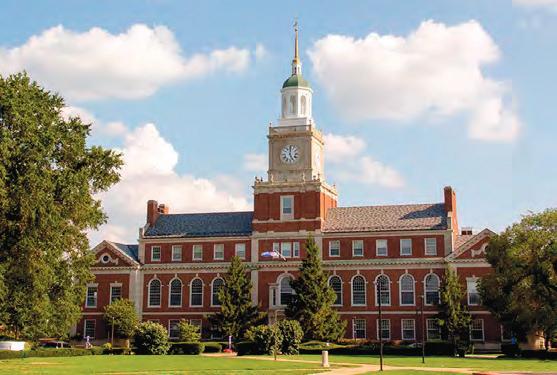


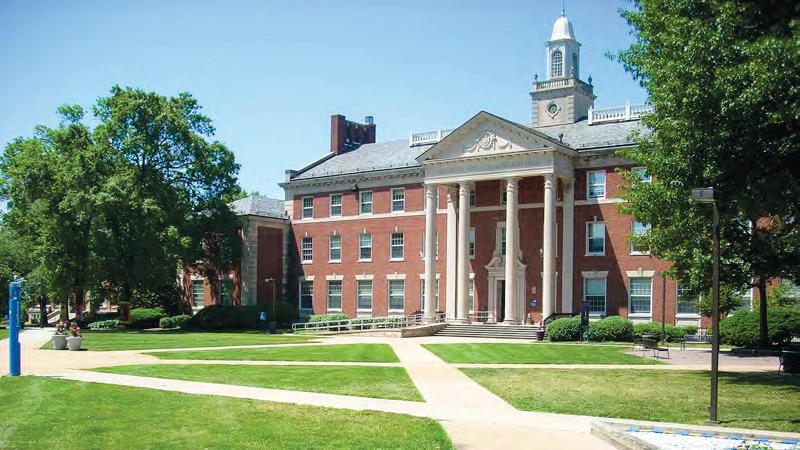

Mae Jemison was responsible for the health of Peace Corps volunteers serving in Liberia, Sierra Leone and refugee camps in Cambodia. When Jemison’s service ended she returned to the U.S. and began studying engineering in hopes of joining the space program. After being rejected, she reapplied, determined to break barriers. Mae Jemison became not only the first Black Woman Astronaut but the first black woman to go to space.

By Ahnayah Hughes Howard University News Service
Most anyone who was there will tell you it was a remarkable weekend they will never forget.
First, there was the celebratory concert featuring artists Mary J. Blige, Jamie Foxx, Usher, Common, NeYo, Christina Aguilera, Gladys Knight, Shirley Caesar, Chloe x Halle, Fantasia, John Legend, Mary Mary, Donnie McClurkin, Robert Glasper, John Batiste, Herbie Hancock and Cynthia Erivo, The next day was the grand opening.
Three dramatically different American presidents– Bill Clinton, George W. Bush and Barack Obama – gathered for the affair.
Leading government officials and entertainment, business, cultural and civil rights icons -- from U.S. Supreme Court
Chief Justice John Roberts to actors Angela Basset and Robert DeNiro to former American Express chair and CEO Ken Chenault and Johnson Publishing Company
owner Linda Johnson Rice to U. S. Rep. John Lewis -- took the stage while scores of other celebrities were sprinkled throughout the audience.
Actor Will Smith and entertainment mogul Oprah Winfrey read the poetry of Langston Hughes and Maya Angelou, and artists Stevie Wonder and Patti Labelle performed before Obama gave the keynote speech.
And then, led by the president and the first lady, hundreds took the first official steps into the National African American Museum of History and Culture.
On that day, Sept. 24, 2016, the museum opened its doors as the largest institution dedicated
to exploring, educating and celebrating African-American life and its global impact in history.
Last year the museum celebrated its fifth anniversary. It is one of the most popular sites on the National Mall, according to the Smithsonian’s 2020 visitor statistics, even more popular than the National Museum of American History, the National Zoo and the National Air and Space Museum.
Between the museum’s opening in September 2016, to March 2020 the museum has received over 7.4 million visitors from across the globe, officials reported.
The curator of American slavery at the museum, Mary Elliot, said that the success of the museum speaks to its relevance and necessity. “If you don’t know the history, then you can’t understand where we are today,” Elliot said. “And you don’t know how to make change, or why to make change.
“This is not a segregated history. This is everyone’s history. This is an American story, seen through the AfricanAmerican lens.”
The site has become hub for learning and preserving African American history thanks to the thousands of Black donors across the nation who contributed to its collections and fundings, including highdollar donors like the Oprah Winfrey Charitable Foundation, who donated over $21 million dollars.
African Americans represented 74% of the individuals who gave $1 million or more, including Alfred Street Baptist Church Alexandria, Virginia, whose $1 million donation, the pastor said, included individual donations as large as $20,000 and as small as 50 cents.
Among those donors is the Jack and Jill of America Inc., an




“I hope we can resume the tours next year,” Henry said. “It has been so rewarding, fulfilling and mind expanding.” For Amos, the museum is especially personal. She said the 1853 slave cabin from Edisto Island, South Carolina, displayed in the museum was exactly as the one her grandmother described. “This is a living museum with living history,” she said. “This one breathes.”
Jacqui Rivera, who traveled from Florida to visit, said she was near tears in the museum’s History Galleries, which takes visitors up from three levels underground takes viewers from the brutal history of slavery through African American life to the present. “I knew once I started crying, I would have wanted to leave and not see anything else,” she said. “So instead, I just felt it in my heart.”
organization of Black women founded in 1938 that teaches leadership development, cultural heritage and community service to the children of the mother who are members in its 252 chapters nationwide.
Today, the museum serves thousands of people daily, while also hosting numerous school tours of all grade levels, senior visits and international guests. It also hosts lectures, movie screenings, book signings and workshops.
The museum has about 3,000 objects on display from its collection of more than 37,000, including a 1922 Jim Crow


Join SLPL for a series of online adult, teens and kids programming throughout the month celebrating Black History Month and focusing on health and wellness.
REGISTRATION IS REQUIRED. Visit the Events Calendar at slpl.org for a list of programs and to register.

railroad passenger car, a 1944 open-cockpit airplane used to prepare Tuskegee Airmen for World War II combat duty and artworks by Black artists Charles Alston, John Biggers, Elizabeth Catlett, Jacob Lawrence, Lorna Simpson, Romare Bearden, Archibald John Motley Jr., Henry O. Tanner and Frederick C. Flemister, Kehinde Wiley and Amy Sherald.
Tanish Glover, who was visiting the museum with her family, said the museum felt like a special space especially for them.
“I came here to see a museum that was for us and about us,” said Glover, a as she toured the museum’s Community Galleries, a third-floor exhibit dedicated to sports, activism, military service and achievement in various careers. “Most times in museums, I’ll just glance and move on to the next thing.” she said, “but here, I’m really taking the time to read
everything and take it all in.”
Elliott said that typical dwelling time in the average museum is one and a half to two and a half hours. “People stay in our museum for six hours,” she said. “Most museums don’t have as much text, but I knew people would want to read and understand.”
The museum serves as a learning center even for Dyane Amos and Jackie Henry, who work as volunteer guides officially called docents in the museum’s Freedom and Slavery Exhibition.
“When this opportunity came, I was excited and nervous, because there’s so much responsibility translating the mission of the museum,” Amos said, “but I feel beyond honored to do it.”
The two said they have worked together at the museum since it opened but have not been doing tours since the pandemic began in March of 2020.
“The beginning was hard to walk through, but when you come up you feel lighter walking through.” By then, Rivera had passed through the painful past and was standing among the famous “Mothership” spaceship used by the band Parliament Funkadelic, rock and roll pioneer Chuck Berry’s rubyred 1973 convertible Cadillac Eldorado and hundreds of other music artifacts on the museum’s fourth level dedicated to arts and culture.
Courtney Spencer visited the museum with her husband, Michael, and their two daughters. She said she also found it difficult starting at the museum’s lower levels. “It was emotional at the bottom, but as you made your way towards the top, you saw the progress,” Spencer said. “It felt better,” Elliott said it was important in curating the museum to emphasize the idea of pride in Black people surviving. “It’s important to take pride in our history and not lean into the narrative that we are just victims,” she said. “We were, and it was a horrible, terrible thing. But we have to take ownership of our strength as well.”
By Evie Hemphill
St. Louis Public Radio
In 2020, cultural anthropologist Maureen Mahon published “Black Diamond Queens,” a book delving into the pivotal yet often underappreciated influence of African American women on rock ‘n’ roll. Mahon details the work of singers including Big Mama Thornton and LaVern Baker as well as groups like Labelle and the Shirelles — and, of course, Tina Turner.
But after finishing that book, Mahon found herself eager to keep digging into Turner’s early life and influences — particularly the buzzing East St. Louis club scene where a young Anna Mae Bullock first crossed paths with Ike Turner and got her start as a teenager.
“So many African American artists were a part of [the St. Louis scene],” Mahon recently said on St. Louis on the Air. “It was a really vibrant scene in the 1940s and 1950s.”
Mahon, who is an associate professor in New York University’s Department of Music, explores that history in a recently published Oxford American deep dive, titled “Manhattan in East St. Louis: Ike & Tina Turner and the scene that formed their art.”
The story takes the two sides of cover art for the duo’s 1973 album “Nutbush City Limits” as a jumping-off point. The album cover depicts Tina Turner in a country setting, propping her bare foot on the grill of a 1950s-style Chevy truck. The back features the singer with an automobile again — but this time it’s a Rolls-Royce, and Turner sports heels and a fur coat.
“It is an image of the
kind of arrival that African American migrants leaving the South might have dreamed of achieving, heading out west to Los Angeles where the Turners put down roots in the early 1960s,” Mahon writes in the Oxford American feature.
“Between the truck and the Rolls, Tina and Ike met and forged their professional and personal partnership in the Up South metropolis of St. Louis, or more specifically, East St. Louis, Illinois, across the Mississippi River.”
On St. Louis on the Air, Mahon noted that St. Louis was a hub during the Great Migration, as many African Americans left the South between the 1920s and 1950s. Bullock’s own arrival in the Gateway City was a part of that.
Bullock’s mother had already relocated to St. Louis before Bullock, who was raised by grandparents and other relatives in Tennessee, eventually rejoined her mother and sister in St. Louis after her grandmother’s death. In some ways, what the 16-year-old girl found in her new home wasn’t so different from her experience of Jim Crow segregation as a child.
“‘Up South’ was a term that those Black migrants from the South used to describe what they found in those northern Midwestern and western cities,” Mahon said. “They found that there was still segregation, there was still racism, there were still very harsh limits on African Americans. Housing was segregated. … Trying to use humor to describe the situation, instead of saying they were up north, which would have been the common thing to say, they said they were ‘Up South.’” In the St. Louis music scene, though, Bullock found a new

world — one the young music lover started exploring even before she was old enough to do so legally.
“What I’ve come to understand is that there were music clubs on both sides of the river. But the clubs in St. Louis closed down maybe at
around midnight, maybe around one in the morning,” Mahon said. “Things kept going in East St. Louis. East St. Louis was a different kind of town. It was what people described as a wide-open town. And it was a place where the rules were just not as strict.”
A curious teenager who loved to sing and listen to the radio, Bullock would get dressed up with her older sister Alline, who told her about “this amazing musician named Ike Turner.”
One night, the sisters managed to get into Club
Tina Turner dancing to “Proud Mary” during an ABC Television Network special titled “Good Vibrations from Central Park” airing on Thursday, August 19th, 1971. Photograph by unknown, 1971.
Missouri History Museum Photograph and Print Collection.
Manhattan on the east side, where Turner’s band was the house band. Before long, a teenage Bullock would be on the stage with twentysomething Turner — and soon become Tina Turner.
The club also later inspired a track on “Nutbush City Limits,” with Turner’s lyrics for “Club Manhattan” recalling a “swinging little club” with “women dressed in satin,” along with “the man on the stand, children … Ike Turner and the Kings of Rhythm.”
“She talks about what a Black club was like in the 1950s,” Mahon said of the song. “And so she just evokes that scene really well in a very concise way in the song.” Mahon credited St. Louisarea historical societies and librarians for helping her research for the Oxford American piece. She said she still hopes to visit in person once pandemic conditions allow, “just to find out more about what other clubs were there [and] what kinds of things people were saying about the clubs.” She added: “Because there was so much going on in the clubs. … It was a really vibrant town. And Tina Turner at a very young age was a part of that.”
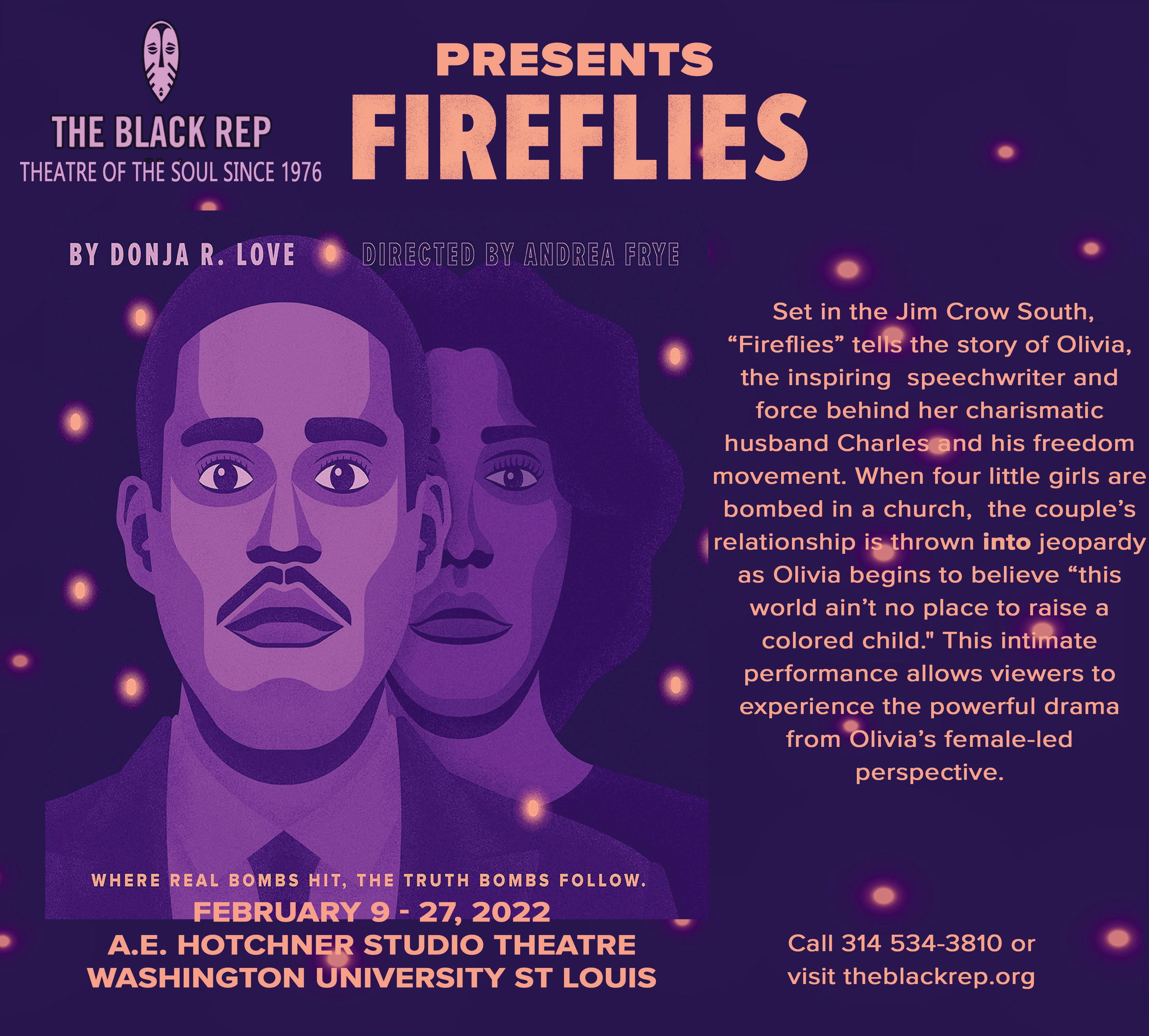
Missouri Historical Society
In 1954, a group of St. Louis community leaders gathered at the Statler Hotel to attend the presentation of the first Griesedieck Achievement Award. Founded by the Griesedieck Brothers Brewery, the award was intended to be an annual event to honor an individual, regardless of race, color, or creed, for “meritorious and unselfish” service to their community.
The first recipient was George Owens, a lifelong resident of St. Louis who made the Ville neighborhood his home for most of his adult life. As a young man, Owens worked as a hydraulic press operator and a wagon driver before beginning what would be his primary occupation as a school bus driver for St. Louis Public Schools.
In 1926, at the age of 27, Owens started driving children to the newly opened Charles Turner Open Air School for Crippled Children. Open-air schools were popular in the 1920s. Designed with many doors or large windows that were kept open at all times of year, the fresh air was believed to act as a cure or preventative for tuberculosis. The school had a wing of open-air classrooms as well as rooms and accommodations designed for children who were deaf, blind, or disabled. Turner and Elias Michael Open Air School were the first public schools in St. Louis built specifically for students with special medical and physical needs. During a time of school segregation, however, Turner School was intended to serve all the Black children in the St. Louis area and Elias Michael School served the white children.
In fact, Turner was only built after concerned parents lobbied the Board of Education
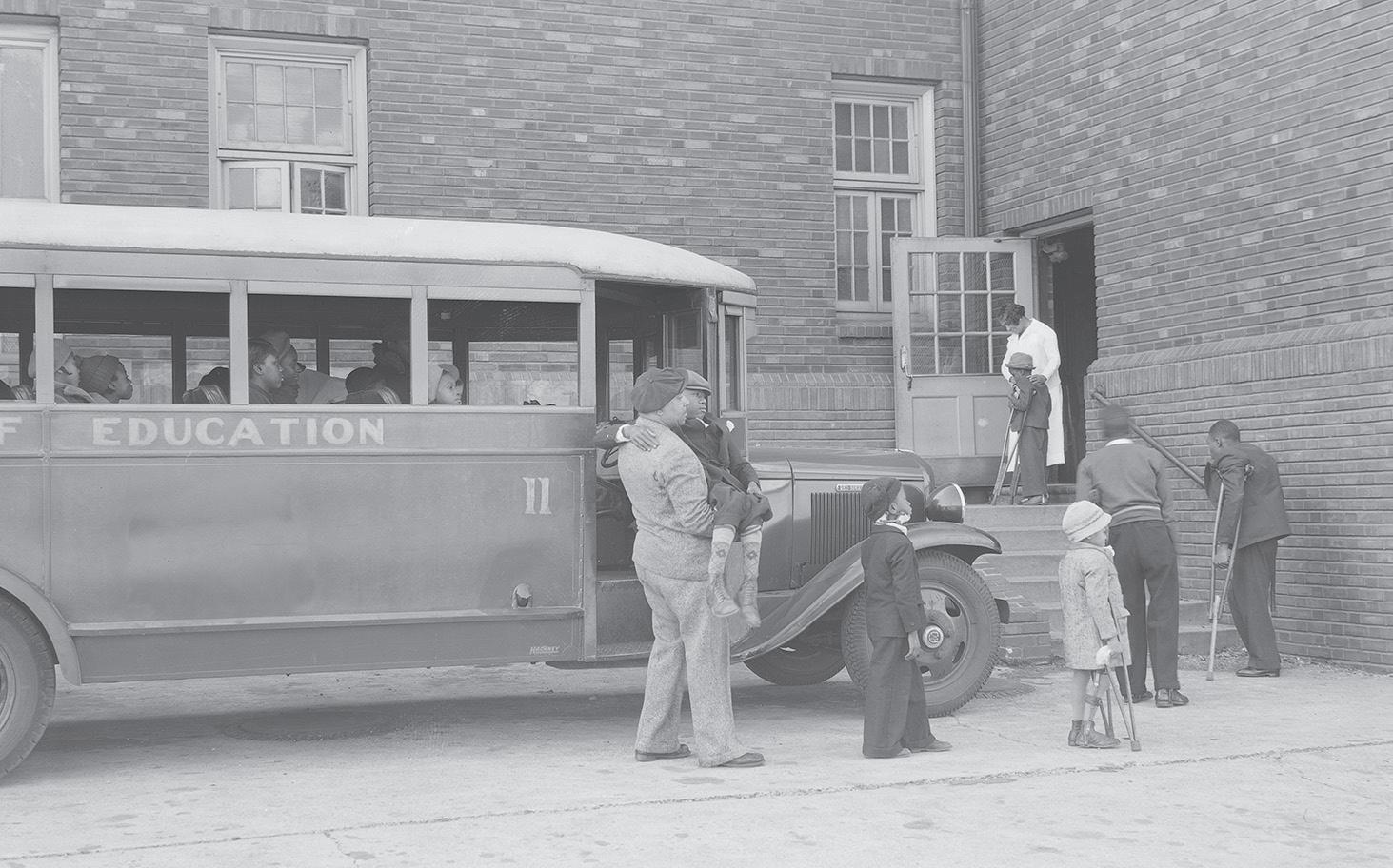
By Chad Davis St. Louis Public Radio
St. Louis-area artists aim to honor the historic contributions of Black St. Louis women with the project, Black HerStory.
The Griot Museum of Black History will coordinate the work through a $100,000 grant from Monument Lab, a Philadelphia-based nonprofit. Monument Lab’s Re:Generation initiative features artists from 10 cities who will use public art installations to reimagine monuments in cities across the country.
to understand that nobody succeeds without the help of other people,” Conley said. Conley said the museum and artists are still in the planning stages, but they aim to install monuments or markers at streets and other locations across the St. Louis region in the spring.
for years to build a school for Black children with special needs. It was named after Charles Turner, a noted entomologist, board member of the Urban League, and a strong advocate for the school.
George Owens was one of two bus drivers who worked to bring Black children from all around St. Louis City to the Ville, where Turner was located at 4215 West Kennerly Avenue. For decades he drove a regular route and never had a major accident. In the days before chair lifts, he had to pick up and carry some of the children to help them on and off the bus every day.
By 1940 he was living just a few blocks away from the school and right across the street from St. Matthew the Apostle Church with his wife and young daughter, Daisy.
In his free time, to help the children, he designed and built crutches and other devices from scraps and cast-off material like broomsticks that he collected.
When the Griesedieck Brothers Brewery named Owens as the first recipient of their service award, Owens had been serving the children of Turner School for 28 years. He had safely and reliably driven students to school, helped them on and off the bus every day, and dedicated much of his free time to helping them. When asked what his motivation was, Owens revealed it came from a deep faith, quoting the Bible: “Inasmuch as ye do it unto one of these, the least of my children, ye do it also unto me.”
The same year that Owens received his award, the Supreme Court struck down school segregation in Brown
vs. Board of Education. In response, the St. Louis Board of Education immediately set up a plan to transfer all the Turner School students to the Elias Michael Open Air School.
The Turner School building in the Ville was converted into a regular elementary school, but Owens apparently remained dedicated to his students. He also transferred to the Michael School, though there he worked as a custodian instead of a bus driver.
George Owens was still living in the Ville and working for children with disabilities when he passed away in 1964 at the age of 64. In honoring a person for “meritorious and unselfish service to their community,” it would be hard to imagine a more deserving candidate.
Artists and activists wanted to bring attention to the role Black women have made in the region, said Lois Conley, founder and executive director of the Griot Museum of Black History.
“I really would like to see us do something around Black women in St. Louis particularly because even at the Griot in our interpretive exhibits, we don’t have a lot of content on Black women,” Conley said.
Conley said the project could include the contributions of abolitionist Mary Meachum and Pearlie Evans, civil rights activist and aide to former U.S. Rep. Bill Clay, Missouri’s first African American member of Congress.
“Those are the kinds of stories that we want to talk about and want to shed some light on so that folks begin
“Monuments and memory markets have been so poorly representative of minority groups historically that I think this is a wonderful opportunity for us,” Conley said. Conley met with artists this past spring to come up with ideas. The artists include Eric Ellingsen, Precious Musa, De Nichols, Andrew Olden, Tracy Williams, Alana Marie Woodson and Darian Wigfall. Wigfall is the visual and audio collaborator for the project. He wants the monuments to be permanent fixtures that will educate generations.
“My hope is that, you know, people will continue to visit these spaces and learn about these women and then be inspired to do something further,” Wigfall said. “A lot of the women that we’re going to be covering have very inspirational stories, so I want people to take those away and maybe create more programming or create more monuments or however they are inspired to continue to work.”


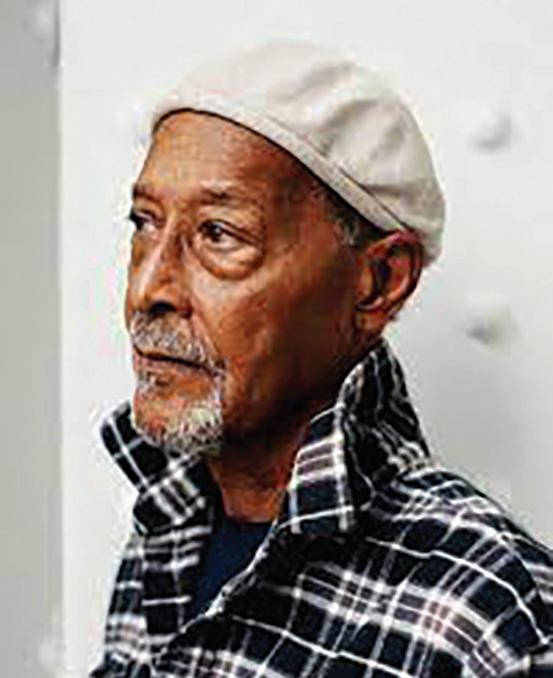
By Kenya Vaughn The St. Louis American
He is a gifted visual artist, but Oliver Lee Jackson possesses an additional ability to use language to provide a unique perspective for observing art. His discourse on what compels him to create provides a deeper level of understanding about what artists intend to achieve with their personal creative responses to the world as they see it.
That was the case recently when the St. Louis native and Vashon High School graduate discussed select works that are currently on display as part of the programming organized
The Hard Blues (for K.C. Lyle).’ Recorded on Mbari Records in 1972. Performed as an overture in ‘The Last Supper at Uncle Tom’s Cabin: The Promised Land,’ Hemphill’s 1990 award-winning collaboration with Bill T. Jones. Also on ‘Coon Bid’ness, Dogon A.D.’ (2011 reissue), ‘Georgia Blue, Fat Man and the Hard Blues,’ ‘The Hard Blues: Live in Lisbon,’ and ‘Flux’ (Jazz Composers Alliance Orchestra). Copperplate gravure: Black and red ink on paper with chine collé, 15 in. x 12 in. The work is included within the ‘Dear Friend’ folio.
around The Saint Louis Art Museum presentation of “Oliver Lee Jackson.” The exhibition is curated by Simon Kelly, curator of modern and contemporary art, and Hannah Klemm, associate curator of modern and contemporary art, along with research assistant Molly Moog. “Oliver Lee Jackson” is free and open to the public and will be on view in Galleries 249 and 257 through February 20, 2022.
During the virtual program that took place via Zoom in December, Jackson discussed some pieces that spanned more than five decades with Harry Cooper, senior curator and head of modern art at Washington, D.C.’s National Gallery of Art. Jackson’s work was exhibited at this prestigious national venue for more than five
through $40,000 NEA grant
Commissioned piece debuts May 6
By Jeremy D. Goodwin
Louis Public Radio
A $40,000 grant from the National Endowment for the Arts will boost the St. Louis Symphony Orchestra’s efforts to showcase Black artists. The organization will use the money to commission a new work that its IN UNISON chorus will perform with the orchestra. The May 6 concert at Powell Hall will be the first time in
over a decade that IN UNISON has joined the orchestra for a classical concert.
“It just really broadens our footprint. It kind of expands our exposure with more symphonygoers. It just exposes us to a few more people,” said Kevin McBeth, chorus director.
The IN UNISON chorus focuses on work by African and African American composers. The centerpieces of its season typically include a See IN UNISON, D3
months in 2019.
The conversation was a master class about creative intention.
“In this painting, I wanted it to be beautiful –but awful – beautiful, but awful,” Jackson said while describing a work from his famed Sharpeville Series. “This back and forth of just the way that the flamelike application of the paint around the figuration is beautiful in itself, but the addition of the figuration adds up to another figuration and they should be quite mixed in terms of experience.”
The paintings were inspired by photographs of the Sharpeville massacre in1960, when 250
See Jackson, D8

By Dwight Brown NNPA News Wire Film Critic
At the last minute, due to Omicron concerns, the 2022 Sundance Film Festival morphed from an inperson and virtual event to a purely digital experience. Thanks to streaming, Black filmmakers and Black films were on center stage all over the world. These five films, in alphabetical order, thrived at Sundance. Here my reviews.
Aftershock (***)
According to WHO, the U.S. ranks 60th on the list of countries with the lowest maternal mortality ratio. The Population Reference Bureau cites, “Black women are three times more likely to die in pregnancy postpartum than white women.” Directors Paula Eiselt and Tonya Lewis Lee’s illuminating documentary breaks down the contributing factors and viable solutions for maternal mortal-

IN UNISON tenors and altos performing during SLSO’s Gospel Christmas at Powell Symphony Hall on Dec. 9, 2021. A $40,000 grant from the National Endowment for the Arts will finance a new work, “Home,” that IN UNISON will perform with the St. Louis Symphony Orchestra on May 6.



The exhibition simply titled Oliver Lee Jackson is synonymous with the renowned St. Louis-born artist of the same name. The Saint Louis Art Museum opened an extraordinary exhibition of works by the renowned artist Oliver Lee Jackson (b. 1935) this past July with 12 large-scale artworks. On view in Galleries 249 and 257, Oliver Lee Jackson is a must-see or merits a repeat visit before the exhibition closes on February 20.
A graduate of Vashon High School, Jackson studied art at the Illinois Wesleyan University and earned a Master of Fine Arts degree from the University of Iowa, graduating in 1963. Returning to St Louis, Jackson became involved in developing arts programs for under-resourced communities.
From 1963 to 1964, Jackson was assistant director of the People’s Art Center, one of the city’s first interracial art centers, which offered free art classes to children and adults. Jackson was also an active member of the Black Artists Group founded in St. Louis in 1968.
The Oliver Lee Jackson exhibition presents a retrospective selection of paintings, drawings, and prints covering more than five decades of Jackson’s work, from the mid-1960s until 2020. It offers the opportunity to trace the artist’s evolution over his career in St. Louis before he moved to California in 1971.
The artworks in the exhibition demonstrate Jackson’s significance as a highly experimental artist who works in various media. Many of the objects on view are generously loaned

by Donald M. Suggs, a local collector and close friend of Jackson.
Jackson’s artistic practice is informed by his deep understanding of global art history – from early European paintings to African art, describes his work as having an “African sensibility.” Some of the earliest works in the show are politically charged images from his Sharpeville Series of the early 1970s in which Jackson responded to the 1960 massacre of 69 peaceful protesters in
the South African township of Sharpeville located just outside of Johannesburg. In later paintings, Jackson’s meanings are more open-ended. In Alchemy, “paint people” appear within webs of silvery enamel paint and collage additions. Untitled, a colorful watercolor, was a work in Jackson’s Currents exhibition at the Saint Louis Art Museum in 1989, underscoring Jackson’s long-standing connection to both the museum and the artist’s hometown.
Art Speaks: But You Feel Me February 10, noon – 1pm, Free
Join Shaka Myrick, the inaugural two-year Romare Bearden Graduate Fellow, as she discusses artworks by Oliver Lee Jackson, exploring his techniques and narratives about historic Black experiences. This virtual program will take place via Zoom and will include opportunities for participants to ask questions with the Q&A feature.
Visit slam.org to register to receive the Zoom link. The capacity for the live program is limited.
Continued from D1
gospel Christmas performance and a concert celebrating Black History Month.
Nathalie Joachim, a Brooklyn-based composer, flutist, and vocalist, will compose the new piece. She has already conducted several interviews with members of the chorus and will incorporate their words into the composition, titled “Home.” The Haitian American musician is a member of Eighth Blackbird, an innovative chamber group that has won four Grammy Awards. Her solo debut, “Fanm D’ayiti,” earned a Grammy nomination for best world music album in 2019. St. Louis Symphony Music Director Stéphane Denève has emphasized the importance of IN UNISON since starting his job in 2019, inviting the ensemble that year to perform for the first time as part of the orchestra’s annual Forest Park concert. The organization has com-
missioned pieces for the chorus just twice before, on the occasion of its 10th and 15th anniversaries. Robert Ray founded the chorus in 1992, with singers from local, Black churches. Musicians and scholars consider his “Gospel Mass” to be a landmark union of African American musical styles, European classical music, and Catholic liturgical music. McBeth has led IN UNISON since 2010.
“People come to see artists and music where they see themselves,” President and CEO Marie-Hélène Bernard said. “This is a complete recognition and support of great music by great artists, but it’s also supporting Black artists and how they are contributing to creating a really interesting catalog of music for symphony orchestras.” Bernard said in 2019 that the audience for a typical classical concert at Powell Hall is about 7% to 10% people of color, with that share rising to about 15% for other performances, like family concerts. Audiences for IN UNISON’s usual pair of annual concerts at Powell Hall
are predominantly Black. The chorus performs other concerts in local churches.
St. Louis Symphony announced nearly $200,000 in grants last July, most of it dedicated to the chorus and associated community programming. Some of the funds support a mentorship program for young African American musicians.
“We’re known for symphonic gospel, spirituals, those kinds of things,” McBeth said. “But we like doing Bach and we like doing Handel, so this is a little bit of a crossover for us, but it’s an expansion of what we’ve been doing.”
McBeth said Denève approached him to discuss new opportunities for IN UNISON.
“There was a conversation about really wanting to continue to expand the breadth and depth of what the IN UNISON chorus has done with an orchestra. And this commission is one of those ways to do it. “
Jeremy D. Goodwin is arts and culture reporter at St. Louis Public Radio.


By Ellen Kunkelmann
Missouri Historical Society
The Missouri History Museum will celebrate Black History Month with a series of programs for people of all ages. On February 17 from 5:30 to 8:00pm, join us for Thursday Nights at the Museum, a series featuring happy hour, pop-up activities, live entertainment or performances, a featured presentation, and the chance to explore the Museum’s exhibits.
In keeping with the national theme for Black History Month 2022, “Black Health and Wellness,” the February 17 program will explore the legacy of Homer G. Phillips Hospital and the Black medical professionals who worked there and championed it. Homer G. Phillips was the first teaching hospital west of the Mississippi River that served Black residents, and more Black doctors and nurses earned their degrees there than at any other teaching hospital in the world.
Come early for cocktails and snacks available for purchase from Café St. Louis by Pure, and be sure to stop by the information tables and the Historians’ Corner to meet MHS Public Historian and St. Louis American contributor Cicely Hunter and Museum educators.
At 6:30pm, Dr. Priscilla Dowden-White will give a presentation on the hospital’s history, followed by a panel of contemporary Black medical practitioners who will discuss their experiences in the profession and the issues that persist today. This program takes place in person at the Missouri History Museum but will also be streamed.
On February 18 and 19 from 10:00am to 2:00pm, families and students from PreK through 12th grade can join our February History Exploration Days, “Protests and Progress: St. Louis Neighborhoods,” to learn more about past and present communities within our city and the complicated histories around them. Students can take a walk through the Missouri Historical Society’s photo collection as they explore the historic Black neighborhood Mill Creek Valley, which was demolished in the mid-20th century; hear about current neighborhoods and their efforts to continue to build community; create oral histories or songs about their own neighborhood; and more! On Friday morning, join us for a special storytelling to learn about community, protest, and St. Louis neighborhoods
through children’s books. Story time takes place in person at 10:30am and virtually at 11:15am. The following Thursday, February 24, the theme for Thursday Nights at the Museum is Race, Violence, and Justice: The Mink Slide Salon. St. Louis filmmaker Owen K. Woodard will screen a clip from his film The Mink Slide, named after the African American business district in Columbia, Tennessee, where Black veterans stood up against oppressive forces in 1946. Keynote speaker Dr. Geoff Ward of Washington University in St. Louis will speak about racial violence within American history, how it relates to Missouri’s history, and how reconciliation and healing can begin.
Join us in the Grand Hall before the program for live music by singer Dr. Marty K. Casey and guitarist Leland Crenshaw, and visit the Historians’ Corner to view newspaper accounts of the East St. Louis race riots and the Mink Slide uprising. Beverages and snacks will be available for purchase from Café St. Louis by Pure. This program, presented in collaboration with the Portfolio Gallery and Education Center, takes place in person at the Museum but will also be streamed.
Finally, save the date for the St. Louis Regional STEAMaster Competition on Friday, March 4. The STEAMaster Competition remixes science education by encouraging student mastery in science, technology, engineering, art, and math (STEAM). On March 4, finalists from local St. Louis schools will demonstrate their science know-how through dazzling rap or poetry on stage for a chance to become the next STEAMaster of St. Louis. This program begins at 6:00pm.
All pre-scheduled public and member virtual programs at the Missouri History Museum have automated closed captioning available. In addition, ASL interpretation is available for programs with two weeks’ advance notice. Email access@ mohistory.org to request ASL interpretation or with other accessibility questions.
Support for Black History Month educational programs was provided by Ameren Missouri, presenting sponsor.
Visit mohistory.org for the most up-to-date information about in-person programs and COVID-19 precautions at the Missouri History Museum. Registration is no longer required for History Exploration Days, but please check in at the Welcome Desk when you arrive.




St. Louis American staff
After a January 18 protest and ongoing demands Samuel Miller’s name be removed from a campus chapel, the Association of Black Seminarians at the Princeton Theological Seminary (PTS) convinced the seminary’s board to act.
According to The Princeton Seminary Slavery Audit Report, Miller owned slaves during his early life and used slaves as laborers while at Princeton.
“On Jan. 25, the Board of Trustees unanimously voted to disassociate the name of Samuel Miller from the chapel. The Seminary’s place of worship will now be known as the Seminary
Chapel,” M. Craig Barnes, Princeton Theological Seminary president, said in a statement. “The Board joins me in being grateful for the prophetic voices of our students, especially the leadership of the Association of Black Seminarians (ABS). It has been a moving testimony of covenant community to see how diverse students united to lament the pain of having to worship in a chapel named for a slaveholder, opponent of abolitionism, and advocate for the American Colonization Society, which sought to send freed Blacks to Africa.”
In a petition delivered to the board Jan. 18, the ABS stated, “The Seminary is a covenant community, aimed to be sacred and uplifting, with our

that
not allow them to worship in a place bearing the name of a slaveholder. Our entire community should be able to worship each day
need.”
Directive #2 “Pray about everything.”
About some things? No, everything. About a few things? No, everything! Little things? Everything. Big things? Everything.
By Rev. Michael W. Eagle, Sr.
As 2022 enters its second month, Black History Month, I will be following four directives.
Directive #1: Don’t worry
Have enough nerve to believe that this year will be better for you than last year. Have a great expectation about it, without worrying about it!
Matthew 6:25–27 says, “That is why I tell you not to worry about everyday life – whether you have enough food and drink, or enough clothes to wear. Isn’t life more than food and your body
more than clothing? Look at the birds. They don’t plant, harvest, or store food in barns, for your heavenly Father feeds them. And aren’t you far more valuable to Him than they are? Can all your worries add a single moment to your life?” Don’t worry!
Worry is destructive – not constructive. It damages health, disrupts productivity and negatively affects how you treat others. Worry reduces the ability to trust in God! Don’t let worry saddle you. “Don’t worry about anything; instead, pray about everything.”
There is an alternative. The Bible says, “instead, pray…”
Pray about everything. Your finances, health, relationships, jobs, schooling, the roof over your head, and clothes on your back, how to treat your enemies, completing your goals, objectives, and what God wants out of your time on this earth!
Dear Lord, “give us this day our daily bread.” Luke 11: 3
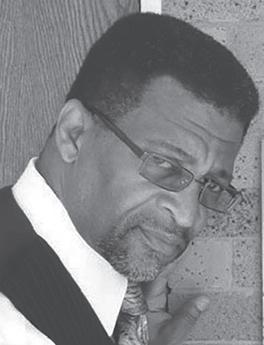
Pray how to talk about Christ to strangers, how to stay safe from viruses, and uplift somebody’s spirit. Pray, “Our Father who art in heaven, hallowed be thy name. Thy kingdom come; thy will be done on earth as it is in heaven.” Pray about everything!
Directive #3: “Tell God what you


at 23 locations. Camps and ages vary by location.
“Ask and it will be given to you; seek and you will find; knock and the door will be opened to you. For everyone who asks receives; he who seeks finds, and to him who knocks the door will be opened.” Matthew 7:7
But, tell God what you need, not what you want. Tell Him what you need! What you need in many cases is different from what we want.
Directive #4: “Thank Him for all He has done.”
Thank Him for blessings seen and unseen! Known and unknown! Blessings remembered and blessings forgotten! Blessings acknowledged and blessings ignored!
Thank Him for waking us up this morning and starting us on our
On Jan. 25, the Princeton Board of Trustees unanimously voted to disassociate the name of Samuel Miller from the chapel. The Seminary’s place of worship will now be known as the Seminary Chapel.
Photo courtesy of wikipedia.com
without the reminder of the sins of the Seminary that continue to enforce the psychological chains of slavery.” Barnes said, “we are not trying to remove (Miller, a founder of this institution) from our history. Yet the Board chose to disassociate his name from a place of tribute in the chapel, where the community gathers into the one body of Jesus Christ. As part of the historical audit, we want to ensure future generations will always know Samuel Miller’s story and the reasons why this generation believed that it was no longer appropriate to have his name synonymous with community worship.”
way!Thank Him that He can make a way, somehow! Thank Him that we “can do all things through Christ, which strengthens us!” Thank Him for His grace, His mercy, His healing, forgiveness, and love! Thank Him for the anointing of the Holy Spirit and thank Him for Jesus! Thank Him for Jesus! Thank Him for Jesus! Thank Him for Jesus! Thank Him for Jesus!
Lord, I thank you for Jesus! “Don’t worry about anything; instead, pray about everything. Tell God what you need and thank Him for all He has done.”
Four directives for helping through 2022 – we are not to worry about anything; we are to pray about everything, we are to tell God what we need, and thank Him for all He has done!
The Rev. Michael W. Eagle, Sr. is the pastor of Grant AME Church in Long Beach, Calif. This commentary originally ran in the Los Angeles Sentinel.

VA St. Louis Health Care System wants you to know the latest to prepare for your visit with us:
- Please try to come to your appointments alone. If you need assistance, one caregiver is allowed with a Veteran for outpatient appointments.
- If you have COVID-19 symptoms, or have been exposed or recently diagnosed with COVID-19, call your primary care team at 314-652-4100 or use MyHealth Vet to make an in-person or telehealth appointment.
- If you think that you have been exposed to COVID-19 but do not have symptoms, please help us and get tested at a community testing site.
- Due to recent surges in COVID-19 cases, cloth masks are no longer acceptable when visiting us. A screener will provide you a medical grade mask to wear while at our clinics and hospitals.
- For the safety of all our patients and staff, only one visitor is allowed per patient per day.
- Call our new VA Info Line at 314-289-6523 for the latest info to plan your visit!


https://www.va.gov/st-louis-health-care/ https://www.facebook.com/VAStLouis

The City of Richmond Heights is accepting applications for the position of Police Officer, $60,667 DOQ. To apply go to https://richmondheights. applicantpro.com/jobs/ . Applications will be accepted from January 18 to February 25, 2022.
EOE M/F/D/V
Full Description and Apply for this and other open positions at https://www. employmentstl.org/ come-work-with-us. Other positions include: Housing Specialist, Behavioral Health Career Specialist, Licensed Counselor. Also hiring for Patient Access and Environmental Services positions at major St. Louis area hospital.

DIRECTOR OF PLANNING AND DEVELOPMENT SERVICES, CIVIL ENGINEER, PRINCIPAL CIVIL ENGINEER, AND MUNICIPAL SERVICE WORKER II-PARKS
The City of Clayton is now hiring for Director of Planning and Development Services, Civil Engineer, Principal Civil Engineer, and Municipal Service Worker II-Parks. Apply: www.claytonmo.gov EOE
The City of Northwoods has positions in the public works dept. for skilled and semi-skilled laborers. Daily tasks include maintenance of park grounds, municipal facilities, and city streets.
Duties also include special event set up, sign maintenance and code enforcement for vacant/delinquent properties. Individuals must have laborer experience, a current driver’s license, and the ability to read/interpret equipment operations manuals. Prior public works experience is a plus. Applications will be accepted until the positions are filled.
Location:
Single Specialty Endoscopy Center located in Central West End
G. I Registered Nurse:
Skills:3-5 years of GI experience. ACLS certified. MO licensed. Detailed oriented, in assessment, implementing and recording, comprehensive nursing care in GI setting. Colonoscopy, with biopsy, EGD, PEG Resume: nanette.escueta@cweestl.org
G.I. Technician:
Skills: GI experience. Knowledge, preparation, Set-Up, GI cases & Sterile technique. BLS certification. Decontamination and high-level disinfection. Preparation, GI set up, infection prevention and sterile techniques. Resume: nanette.escueta@cweestl.org
Apply at: The City of Northwoods 4600 Oakridge Blvd. Northwoods, Mo. 63121. Or send resume to: cityadmin@cityofnorthwoods.com Call City Hall 314-385-8000 for details/directions.
The City of Northwoods has an opening for a full time Office Assistant. This position is responsible for supplying support for all municipal functions, including housing data entry, accounts payables/receivables, and processing of city licenses and permits.
Responsibilities also include answering phones, event planning, appointment scheduling and other community service related tasks. The model candidate will have a high school diploma or equivalent, an Associate’s Degree, and/ or considerable experience in the secretarial and clerical fields. Previous experience in local or state government is ideal.
Apply at: The City of Northwoods 4600 Oakridge Blvd. Northwoods, Mo. 63121. Or send resume to: cityadmin@cityofnorthwoods.com Call City Hall 314-385-8000 for details/directions. EQUAL OPPORTUNITY EMPLOYER
Medical Assistant (MA) Requirements 2-3 years’ experience working in outpatient setting, BLS certification. Good people skills, Familiar with intake of insurance information, scheduling, follow up appointments, HIPPA, Privacy Act. Resume: rachel.demouchet@cweestl.org ST. LOUIS
Cor Jesu Academy, an all-girls’ Catholic college-preparatory school in Affton, is currently seeking applicants for the position of College Counselor beginning with the 2022-23 academic year. The College Counselor will be responsible for working closely with students and their families to educate and successfully guide them through the college search and application process. Offering information, resources and support for students/families in both group and one-on-one settings, Cor Jesu college counselors work collaboratively in seeking to assist each student in finding her “best fit” college choice. For more information, visit www.corjesu.org/careers#CCW or email Cynthia Wilhelm, Director of Cor Jesu’s Career, College and Wellness Center, at cwilhelm@corjesu.org
The City of Jennings is accepting applications for the position of Permit Clerk in the Building Department. Duties include serving customers in person and by phone, maintaining files, entering information into the computer and issuing permits. Good computer and customer service skills required, familiarity with building permits and zoning codes preferred. Hours of work are 8:30 a.m. to 5:00 p.m., Monday through Friday. Starting salary of $28,541 (GS-8). Application available at Jennings City Hall or online at www.cityofjennings.org Application and resume MUST be submitted together. NO RESUMES ACCEPTED WITHOUT COMPLETION OF OUR APPLICATION! Completed applications with resumes may be delivered to City Hall, mailed, emailed to jobs@cityofjennings.org or faxed to 314-388-3999.
The City of Jennings is accepting applications for the position of Administrative Assistant I in the Building Department. Duties include assisting with routine clerical and administrative work in answering phones, receiving the public, providing customer assistance, data processing, and bookkeeping. Assists in the sewer lateral program, processing permit applications, monitoring progress for status reports and maintaining records of the permit process. Minimum two years office experience required, with excellent clerical, computer and customer service skills and attention to detail. High school diploma or GED equivalent. Starting salary $31,152 (GS-10-C). Application available at Jennings City Hall or online at www.cityofjennings. org. Application and resume MUST be submitted together. NO RESUMES ACCEPTED WITHOUT COMPLETION OF OUR APPLICATION! Completed applications with resumes may be delivered to City Hall, mailed, emailed to jobs@cityofjennings.org or faxed to 314-388-3999.


St. Louis Community College is seeking excellent candidates for multiple full-time faculty positions to start in August of 2022. These positions will be located on one of the four campuses of St. Louis community College: Florissant Valley (FV), Forest Park (FP), Meramec (MC) or Wildwood (WW). The disciplines for the anticipated opportunities are listed below along with the campuses:
Art (FP)
Biology (FP, MC, & WW)
Chemistry (FP & WW)
English (FV, FP, MC , & WW)
Geology (MC)
History (FV, FP, & WW)
Horticulture (MC)
Information Systems (MC)
Math (FP)
Philosophy (FV & WW)
Physics (MC)
Psychology (FV, MC, & WW)
Sociology (MC & WW)
Surgical Technology (FP)
There may be opportunities in disciplines not listed above. If you are interested in contributing to the vision of STLCC apply for these positions at STLCC, or to learn more about the College please visit the link - https://stlcc.edu/careers/
(CONTINUED)
Criminal Justice Ministry seeks a Case Manager for our Release to Rent Reentry Housing Program. Details at www.cjmstlouis.org. Experience working with the previously incarcerated, reentry housing, and case management is preferred. Second chance employer. Comprehensive benefits package. Send resume to apply@cjmstlouis.org
East-West Gateway has an opening for a GIS Planner. Applications are due by 3/3/2022. More information can be found at https://www.ewgateway.org/ careers EOE
Alberici Constructors and the Saint Louis Zoo seek bids from qualified construction firms to submit proposals for a project at the Saint Louis Zoo WildCare Park.
The project consists of the interior fitout of a barn and includes the following categories of work: Fencing, Concrete, General Trades, Insulation, HVAC, Plumbing and Electric.
To request bid documents, please send an E-mail to stlzoobids@alberici.com
Great Rivers Greenway is requesting sealed bids for two(2) pickup trucks. Go to www.greatriversgreenway. org/jobs-bids and submit by February 17, 2022.
The St. Louis Development Corporation (“SLDC”) of the City of St. Louis is requesting qualifications for grass maintenance and trash and debris removal.
The complete RFQ can be viewed online at www.stlouis-mo.gov/sldc
The funding of this project, is financed in part through a grant from the Department of Housing and Urban Development and the Community Development Administration under the provision of Title 1 of the Housing and Community Development Act of 1974 (Pub. L 93-383 42 USC 5301 et seq) and/or HOME Title II of the National Affordable Housing Act of 1990, as amended (Public Law 101-625).
Confluence Academies is seeking bids for Custodial and Maintenance services beginning with the 2022-2023 school year. Interested contractors should visit our website, www.confluenceacademy.org for more information and proposal requirements. A mandatory prebid walk thru of all campuses will be held on Wednesday February 9, 2022 at 9 AM. Bids are due Wednesday February 23, 2022 by 12 noon at our Resource Office.
Notice is hereby given that the Metropolitan St. Louis Sewer District Requests for Quotes, Bids and Proposals are posted online for public download. Please navigate to www.msdprojectclear.org > Doing Business With Us > View Non-Capital Bids (commodities and services) or >Visit Planroom (capital construction bids)
Metropolitan St. Louis Sewer District is an Equal Opportunity Employer.
Section 3 / MBE /WBE Encouraged 118 Units Multi Family –KANSAS CITY, MO For Bid Information: 636-931-4244 or zventura@vendev.cc
Double Diamond Construction 1000 A Truman Blvd. Crystal City, MO 63019
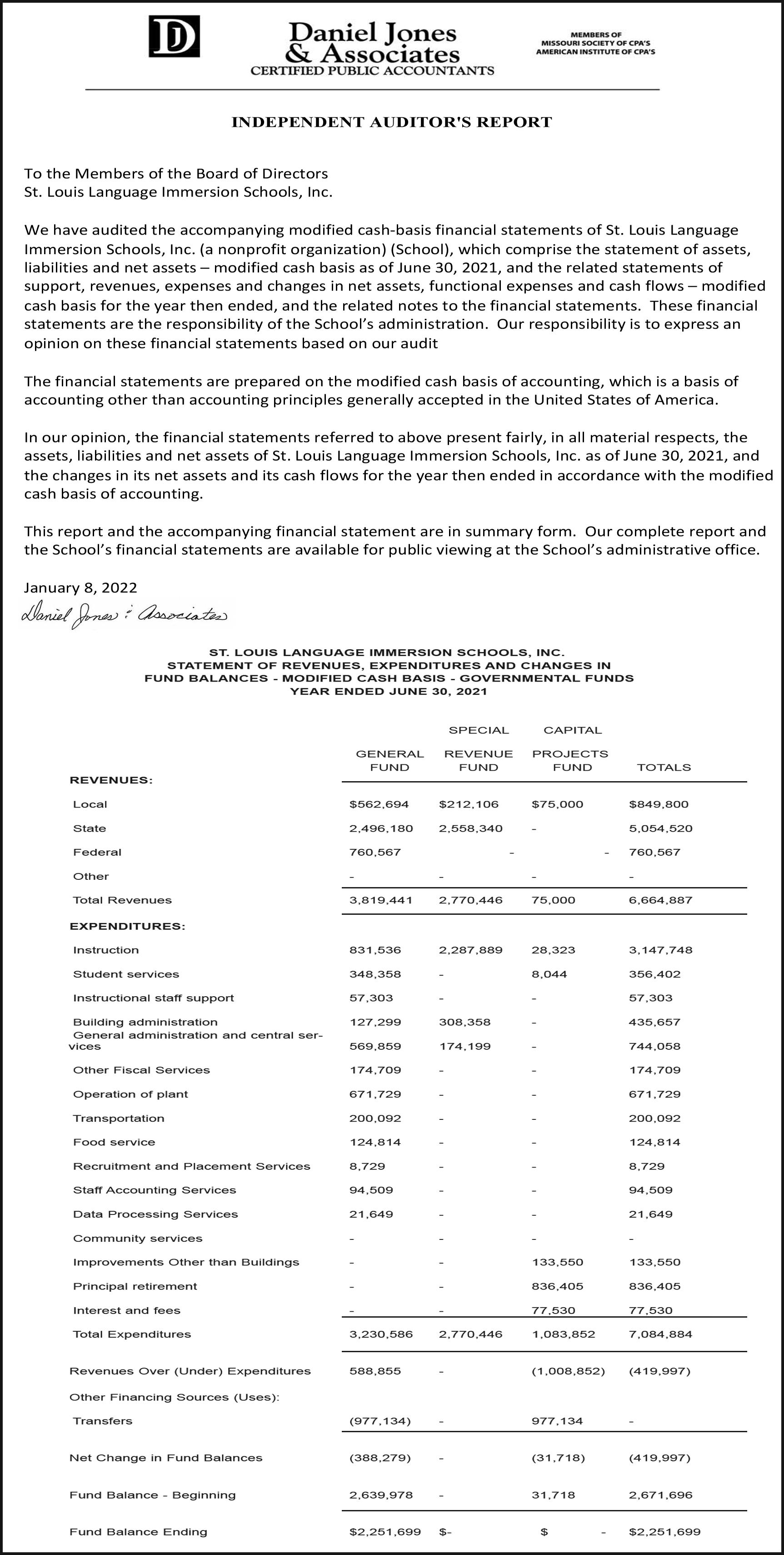
Bids for REBID: Replace and Install Generator, Missouri State Highway Patrol General Headquarters, Project No. R2109-01, will be received by FMDC, State of MO, UNTIL 1:30 PM, 3/3/2022 via MissouriBUYS. Bidders must be registered to bid. For specific project information, go to: http://oa.mo.gov/ facilities
Bids for Replace 6 Gates & Controllers Fulton Reception Diagnostic Correctional Center, Fulton, Missouri Project No. C1918-01 will be received by FMDC, State of MO, UNTIL 1:30 PM, March 3, 2022. For specific project information and ordering plans, go to: http://oa.mo.gov/ facilities ADVERTISE YOUR BID NOTICES PROPOSALS AUDITS WITH US
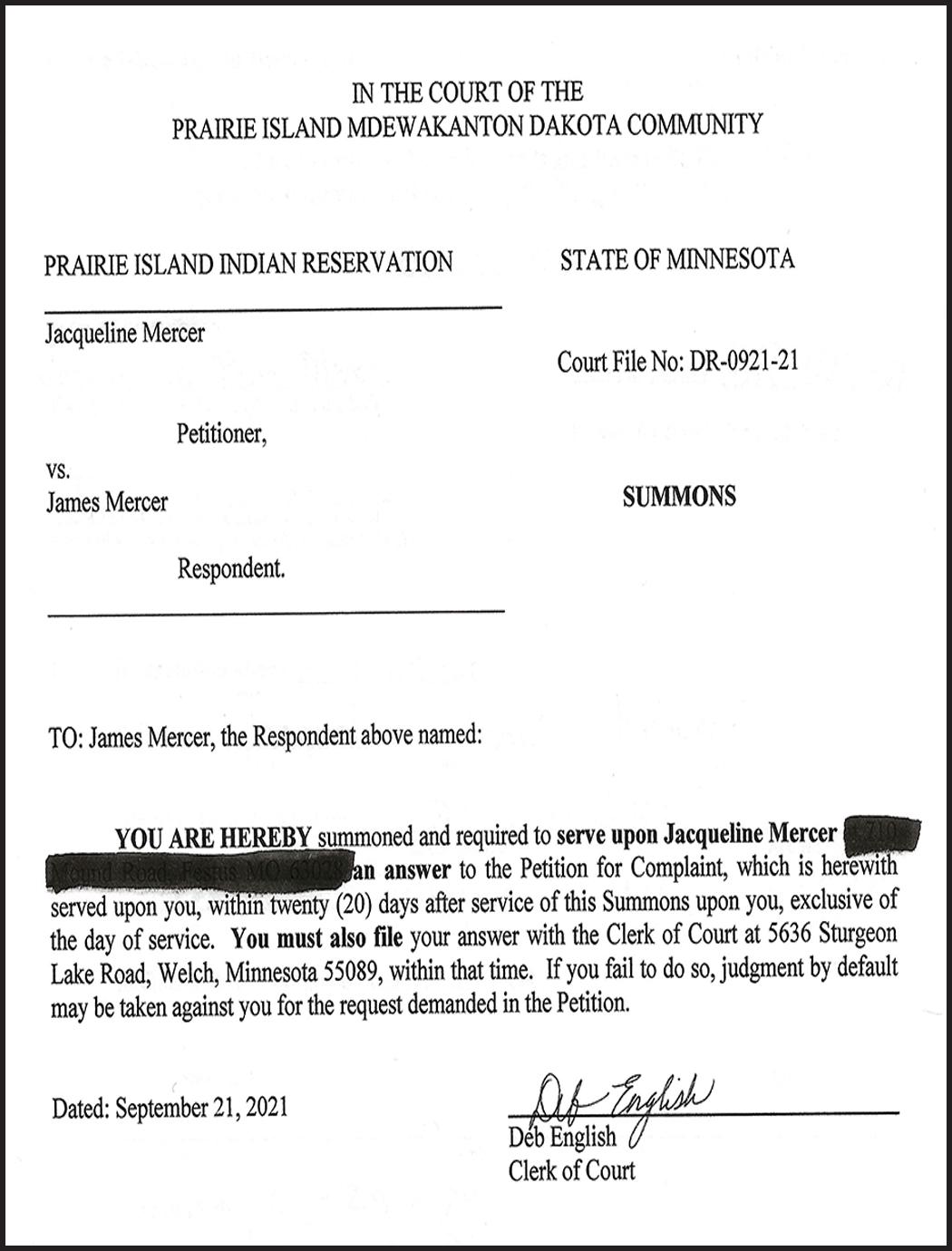
Responses for St. Louis Community College on RFP B0004151 for EMS Equipment & Supplies will be received until 3:00 PM (CST) on March 4, 2022. Go to https://stlcc.bonfirehub.com for bid document and submission.
RFQ FOR MARKETING & BRANDING CONSULTING SERVICES
This RFQ is being reposted with an addendum solely to clarify and incorporate a minor expansion of the scope of work related to video/graphic-related services. All prior responses will still be considered as they were submitted, and timely respondents do not have to do anything further to remain in consideration for the short list. However, should respondents choose to update their responses based on the addendum, those updated responses will also be considered. Additional submissions will be permitted through 4:00 PM on February 4, 2022.
NOTE: Due to rise in Covid-19 cases ALL proposals are to be sent electronically. Proposals should be emailed to the attention of: Daffney Moore, Chief of Staff mooreda@stlouis-mo.gov St. Louis Development Corporation 1520 Market Street, Suite 2000 St. Louis, Missouri 63103-2630
VIDEO & GRAPHIC RELATED SERVICES
Media Production
• Write, edit and create layouts for district publications, information displays, TV scripts and the organization external web site and Intranet; assist in the production of multimedia presentations.
• Consult with personnel to determine needs; communicates with personnel to maintain customer satisfaction; works closely with executive and marketing staff to ensure brand consistency and marketing materials align with organization mission.
• Maintain integrity of organization brand by monitoring district logo usage.
• Work with community partners and schools on development of marketing materials.
• Take photographs for publications.
• Assist in crafting marketing messages when appropriate.
• Monitor the supply of publications and brochures and notify appropriate personnel of needed reprints or revisions.
• Maintain confidential information appropriately and exercise good judgment when communicating with the public.
• Additional responsibilities as needed
Graphic Designer
• Design web pages, brochures, logos, signs, books, magazine covers, annual reports, advertisements, and other communication materials.
• Work with other creative team member to produce content
• Create guidelines for how logos and other branding materials should be displayed and used
• Help make design choices (e.g. fonts, sizes, colors) for readability of all content for organization use.
• Oversees all graphic design needs and execute design projects from start to finish.
• Lead creative campaign creation and update marketing calendars. Align with PR, social media, design, and digital marketing
• Produce drafts for review by clients and make revisions based on the feedback received.
• Review final productions for errors and ensure that final prints reflect client specifications.
Videographer
• Film videos on location. Assembling raw footage and transferring or uploading to a computer.
• Assist in pre/post production script/screenplay planning and execution with creative team
• Plan the shoot with the creative team and the client.
• Edit footage in post-production. Including inputting sound and graphics to enhance footage. Which may include music and voice-overs.
• Digitally splicing film and video and synchronizing them into one rough cut file
• Improving lighting and correcting lighting, coloring, and faulty footage
• Executing final cut of video in format compatible for social media, TV, and monitor display.
business enterprises for relevant phases of work for Metropolitan St. Louis Sewer District, Lower Meramec WWTP Expansion Phase II, Contract Letting No. 12255-015.1. Interested parties should contact the Goodwin Office at (636) 931-6084. A pre-bid meeting for all interested MBEs
> Proposal for Elevator Services
> Proposals will be received by City of St. Louis Treasurer
UNTIL 3:00PM 2/28/2022
> For specific project information, go to > https://www.stltreasurer.org/ Request for Proposals/
Date of Issuance: January 19, 2022
Proposal Due: February 18, 2022 at 5:00 pm CST
The City of St. Louis has issued a Request for Qualifications (RFQ) to compile an approved list of law firms to perform various legal services at the request of the City Counselor. This RFQ may be found at https://www.stlouis-mo.gov/ government/departments/counselor/index.cfm under “Procurement”, on the City’s procurement page (https://www.stlouis-mo.gov/government/ procurement/), and by emailing Nancy Walsh at walshn@stlouis-mo.gov. The deadline for questions regarding the RFQ is Friday, February 11, 2022.
The deadline for submitting a sealed statement of qualifications is 5:00 pm on Friday, February 18, 2022. The statements of qualifications must be submitted in strict accordance with the instructions in the RFQ. The City shall not be bound based on any SOQ/proposal submitted. Minority and Women-Owned Business Enterprises are encouraged to apply
ITB #: 57822365
Harris-Stowe State University (HSSU) is requesting proposals for the Audio and Visual services required for Vashon Community Center Renovation-Wolff Jazz Institute project. Proposals must be emailed no later than 2:00 p.m. on Wednesday February 16th, 2022, to Corey Freemen at freemanc@hssu. edu. Responses to the RFP will be opened and read at a virtual bid opening on Wednesday February 16th, 2022, at 2:15 p.m.
A pre-bid conference and walk-through will be held on February 9th, 2022, at 2:00 pm. at the Vashon Community Center located at the intersection of Market and Compton. Masks will be required for entry into the facility and at the pre-bid conference and walk-through. Social Distancing will also be required in the facility.
A copy of the Request for Proposals and the bidding documents can be obtained by contacting Corey Freeman at email address: freemanc@hssu.edu or calling (314) 340-3325. Please copy Ryan Wilson with NAVIGATE Building Solutions at ryan@navigatebuildingsolutions.com. The bidding documents will be available on February 3rd, 2022. The University reserves the right to reject any and all proposals and to waive all informalities in proposals.

St. Louis Community College will receive separate sealed bids for Contract No. F 22 401, Childcare Expansion and Athletics Renovation, St. Louis Community College at Forest Park, until 2:00 p.m. local time, Thursday, February 10, 2022. Bids will be opened and read by the Acting Manager of Engineering and Design, 5464 Highland Park Drive, St. Louis, MO 63110-1314 Specifications and bid forms may be obtained by emailing Angie James at ajames84@stlcc.edu
Pre-bid Meeting: Tuesday, February 1, 2022
9:30 a.m. South East side of Athletics Building at Forest Park Campus
An Equal Opportunity and Affirmative Action Employer
Responses for St. Louis Community College on RFP B0004154 for preplacement physicals & Immunizations will be received until 3:00 PM (CST) on March 4, 2022. Go to https:// stlcc.bonfirehub.com for bid document and submission.
The Saint Louis Zoo seeks bids from qualified firms to submit proposals for Re-Roofing of the Antelope House and Goral Barn RFP 2022. Bid documents are available as of 2/2/2022 on the Saint Louis Zoo website: stlzoo.org/vendor
For Multi-Functional Printer Fleet (RFP)
Better Family Life, Inc. is Requesting bid responses to the following Request for Proposals. Please click on the item that may interest your company for more details. All questions should be submitted to the Point of Contact according to each RFPs instruction.
Request for full proposal may be obtained via download from our website @ www.betterfamilylife.org
All request should be sent directly to https://www.betterfamilylife.org/rfp. rfp@betterfamilylife.org
The deadline for submitting proposals is, 4:30 p.m., February 3, 2022 at Better Family Life, Inc. 5415 Page Blvd. St. Louis, MO 63112
Paric Corporation is seeking proposals for the following project: THE BRIDGE APARTMENTS
PARIC Corporation is soliciting bids for the CORE AND SHELL ONLY for THE BRIDGE APARTMENTS. This is a five story structure located on Delmar Ave scheduled for a 04/1/2021 tentative construction start. Access to documents is available from our Smartbid link, if you have not received a bid invitation send your company information to tlalexaner@paric.com
The Core and Shell consisting of Site & Civil Drawings, Structural Foundation Drawings and Structural Steel. The last day for questions is currently 2/26/22.
BIDS WILL BE DUE ON MARCH 03, 2022
Send all questions to Cory Paschen CPaschen@paric.com.
Goals for Construction Business Enterprise
Sealed bids for the above project are being requested from the Ferguson Florissant School District and will be received and publicly opened on Friday February 18, 2022 @ 1:15 pm CST at the Operation and Maintenance Dept. located at 8855 Dunn Rd. (REAR) Hazelwood, MO 63042. Pre Bid Meeting Thursday February 10, 2022 @ 9:00am at Cross Keys Middle School 14205 Cougar Dr. Florissant, MO 63033 Bid specs must be obtained at http://new. fergflor.k12.mo.us/facilities-rfq Contact Matt Furfaro at mfurfaro@fergflor.org for further information/questions.
ADVERTISEMENT FOR BIDS
Sealed BIDS for Bid 22-115 - Painting-Sealing - 370 Lakeside Park Pavilion Structures will be received by the City of St. Peters, Purchasing Department, City Hall, One St. Peters Centre Boulevard, P.O. Box 9, St. Peters, Missouri 63376 until 2:00 PM local time, February 10, 2022 and then opened and read aloud.
Contract Documents will be available on January 27, 2022 and may be obtained from the City of St. Peters, One St. Peters Centre Boulevard, St. Peters, MO 63376 or requested in writing to Bids@stpetersmo.net under the subject line “Bid 22-115 - Painting-Sealing - 370 Lakeside Park Pavilion Structures”.
All questions regarding this project shall be submitted to the City of St. Peters Purchasing Department in writing to Bids@stpetersmo.net under the subject line “Bid 22-115 - Painting-Sealing - 370 Lakeside Park Pavilion Structures” or by mail to City of St. Peters Purchasing Department, One St. Peters Centre Boulevard, P.O. Box 9, St. Peters, MO 63376 before noon local time, February 3, 2022.
The City reserves the right to waive any informality in bidding, and to accept the bid most advantageous to the City.


or intention to make any such preference, limitation, or discrimination. “We will not knowingly accept any advertising for real estate which is in violation of the law. All persons are hereby informed that all dwellings advertised are available on an equal opportunity basis.”
ity in the aftermath of two specific women’s deaths. Shamony Gibson and Amber Rose Isaac both died after labor and a grassroots movement for birth justice and equity, in their honor, is heroically launched by Omari Maynard and Bruce McIntyre, the fathers of their children. Watching the consciousness-raising support groups of widowed Black men is as inspiring as a thousand Million Man Marches. Very solid doc filmmaking instincts reflect an empowering movement born from painful experiences.
Descendant (***1/2)
A yearning for a definitive history is the driving force behind this heartwarming doc. The Cotilda schooner was the last American slave ship to bring Africans to the U.S. The imprisoned captives from Benin arrived in Mobile Alabama in 1860. The Black
descendants of that ship settled in Africatown, which has since been parceled away by public domain highway projects, a lumber yard, and other businesses. Still the proud residents keep their history alive, orally, passing on info, names and dates to future generations who become historians and record keepers. Director Margaret Brown captures the spiritual experiences of these chosen Alabamians. She films their interviews just as a white journalist and white owner of a mechanic’s shop decide to look for the ship that was burned by its owner Timothy Meaher and hidden in neighboring swamps.
jeen-yuhs: A Kanye Trilogy (***)
Ten minutes into this lively documentation of 21-year-old Kanye West, the unsettling contrasts between this hopeful, humble adolescent, and his embittered and inflated persona these days is quite jarring. Chicago public access TV host Coodie chronicled West’s pilgrimage from Chicago to New York in the late ‘90s as he tried to transition from music producer to superstar rap-
Cooper pointed out Jackson’s propensity for inserting figures within his work that fosters a multiplicity that keeps the viewer engaged – and drawing a new experience with each viewing – as they moved on to discuss additional works from the exhibition.
South Africans were killed or wounded for protesting apartheid non-violently.
For the viewer – and Jackson counted himself as one – his aim was to unearth a sense of urgency as viewers grasp the tragic reality that inspired the art.
“The sense of urgency in the paintings that we’ve looked at was fundamental,” Jackson said. “This is to make the experience very rich in terms of the emotional shifts that the event would arise for a person in that situation – a type of urgency and feelings that keep shifting in many ways from being elegant, desperate and strong at the same time.”
“Personally, I go back and forth and when I’m experiencing your work,”
Cooper said. “ I often don’t try too hard to find the figures right away because there is so much to see.”
“I don’t think that there is ever anything hidden in a painting, but you have to learn it’s vocabulary,” Jackson responded. “Each work has a kind of vocabulary that is determined by the effect of the field you want to pull the viewer into.”
He likens his paintings to making a world.
“And in this world, everything has to augment the thrust of the work,
per. Fuzzy-looking footage reveals all. Consider Coodie’s homage to be more like a home movie/travelogue with famous people (Damon Dash, Pharrell) than a typical doc. No video tricks. No gimmicks. No mounds of news footage, interviews etc. Just largely an unfiltered look at West fighting for a record deal at hop-hop’s holy grail, Roc-A-Fella Records.
The most touching scenes are West and his wise, nurturing school teacher mother who wants him to remain humble: “You can stand on the ground with your head in the air at the same time.”
The most awkward scenes are watching Jay-Z, RR’s CEO, keep Kanye at bay: he wants the milk (West’s “jeen-yuhs” producing) but not the cow (Kanye as a rapper). The fly-on-the-wall filmmaking lets you cavort with family, friends, adversaries, mentors, and hangers-on. Discovering West’s middle-class background explains his early brand of rap and its often-spiritual elements, which are evidenced in the making of his classic hit “Jesus Walks.”
African immigrant stories often
but belong to that world – so that the aesthetics cannot step outside of it,” Jackson said. “ They need to be beautiful, but the beauty inside that particular modality. It’s making a fluid figuration with a field.”
Jackson went deeper as he discussed the process of creating imagery.
“The word drawing itself is to pull forth an image,” Jackson said, “ When you are drawing, you are doing two things simultaneously – you are marking what can be marked to bring forth what can be seen. While you are drawing out, you are also marking in. It’s an interesting dynamic. You are marking by drawing on it, but at the same time the marks must bring forth something.”
During the talk Cooper and Jackson also mentioned paintings and sculptures featured in the “Oliver Lee Jackson: Any Eyes” exhibition, curated by his longtime collaborator Diane


possess an innate appeal. In this instance, Senegalese writer/director Nikyatu Jusu’s odd mixture of horror, thriller, romance, and muddled family drama has the opposite effect. Aisha (Anna Diop), a twentysomething from Senegal, leaves her young son behind to find work in New York. A white couple (Michelle Monaghan and Morgan Spector) hire her to tend to their young daughter Rose (Rose Decker).
The wealthy spouses are lax with pay, Aisha loses communication with her son and weird visions of a boy in rain haunt her.
Supernatural aspects and cryptic images have no context for 90 minutes of this 97-minute motion picture. Regardless of the iffy narrative choices, Jusu and cinematographer Rina Yang make a very attractive film that displays their excellent taste in staging, composition, angles, lighting, etc. Scenes look fresh and modern
Really?! Is there some explosive secret about the shamed comedian that has yet to be revealed? Stand-up comic
Roby, which is currently on display at the Di Rosa Center for Contemporary Art in Napa Valley, California through February 20.
They also touched upon a highly personal project, ‘Dear Friend,’ that Jackson recently developed as a tribute to the late composer and Black Artists Group co-founder Julius Hemphill.
The limited edition folio ‘Dear Friend’ was conceived and designed by Jackson and features sheet music of Hemphill compositions paired with paintings and drawings that add visual context to the music.
Hemphill, who was also a co-founder of the acclaimed World Saxophone Quartet, spent several years in St. Louis – where a creative collaboration and friendship was fostered between he and Jackson.
“I wasn’t trying to have anything to do with trying to draw music, but
turned documentarian W. Kamau Bell thinks so. To make his case, he assembles an exhaustive array of talking heads (Roland Martin), comedians (Hannibal Buress), rape crisis counselors and even a journalist who investigates date rape drugs. Cosby’s wellpublicized fall from ’60s TV pioneer (I, Spy), to 1980s/’90s quintessential all-American boob tube daddy (The Cosby Show), to convicted, imprisoned felon is meticulously charted. Victim after victim exposes his pattern of drugging, assaults, and rapes. The Black community’s initial ambivalent feelings are pondered. Cosby’s hypocritical jabs at young Black men while he’s molesting women are documented too.
Two hours of this in-your face negativity is more than enough. Four one-hour segments are overkill. The barrage of info will test your patience. Also, watching folks hypothesize as they sit on expensive leather couches, dressed like fashionistas, and lit like they’re in a fashion shoot is off-putting. But credit Bell for his inventive style. His insights into Black culture, history and the TV industry are thorough and sometimes profound.
trying to see the relationship – which is so beautiful – between his markings and my markings,” Jackson said of the project. “Each page will have a feeling to it.”
Jackson insisted upon sharing a Hemphill quote with the audience.
“I am not an evangelist,” Jackson read. “I am simply a man, trying to steer himself through his own confusion so that he can communicate in a sincere voice with other human beings.”
The words of the late musical genius are also applicable to Jackson’s art –and his ability to express the pathology behind it.
“Oliver Lee Jackson,” will be on view in Gallery 249 and Gallery 257 of the Saint Louis Art Museum through Feb. 20, 2022. For hours and additional information, visit www.slam.org.